-
Posts
2,101 -
Joined
-
Last visited
-
Days Won
2
Content Type
Profiles
Forums
Blogs
Gallery
Events
Store
Posts posted by Rusty Greaves
-
-
Here are a few additional images of examples of the Sir Harry Smith Medal for Gallantry 1851. All of the images come from archived auction listings by Dix Noonan Web (Numis, I'm sure you have all the DNW information already, but there is a mention, unfortunately no photo however, of an example awarded to Henry Evans, C.M.R on one DNW auction listing with a link provided below). I also am including a small amount of information from a numismatic publication of 1953 listing another named example to a "Hottentot" (Hendrik Ferrara; "Khoikhoi" would be a less derogatory term than "Hottentot", but also may not be an accurate ethnic identification of this man. Numis you note that you have images of that medal) and referencing another unnamed one in the War Museum at Johannesburg. That article also has some information referencing two other (unspecifed) recipients of this medal in the archives of the Moravian Mission station at Genadendal.
Numis, I know you wrote that you have images of this Thos. Dicks medal, but I thought I would still include this high-resolution image (it can be zoomed for additional detail) from a Dix Noonan Webb auction (Lot: 617) of 10 December, 2014 (https://www.dnw.co.uk/auction-archive/lot-archive/lot.php?lot_uid=258353). A 2001 DNW auction of this same medal (see next image below) shows it without the new replacement ribbon seen here, and both these images show the uncommon suspension ring not seen in the other photos of this medal on this thread.
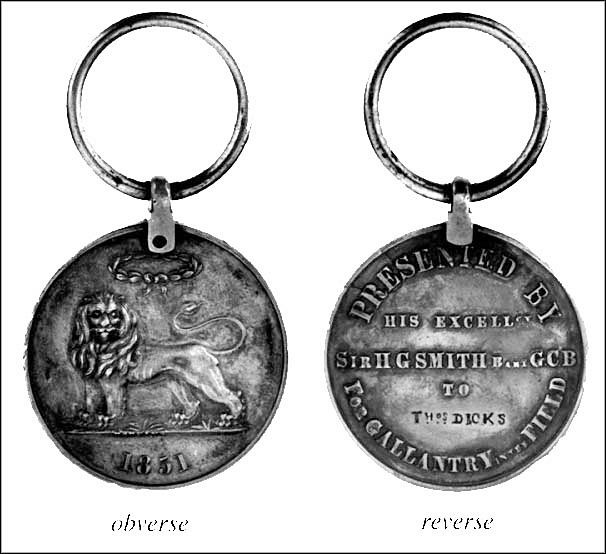
A much lower-resolution image of the same Thos. Dicks medal from a 4 December, 2001 auction (Lot: 66) by Dix Noonan Webb (https://www.dnw.co.uk/auction-archive/lot-archive/lot.php?lot_uid=70891). This image shows the Dicks medal before a new ribbon was fitted (as seen on the Lot 7617 photo above) and shows what is probably the replacement suspension ring.
This same Thos. Dicks medal also was listed on one other past Dix Noonan Webb auctions. That archived auction listing only provides the estimated prices & sold price, but no additional images of the Thos. Dicks medal. It was sold at a Dix Noonan Webb 13 December, 2017 auction (Lot: 240), archived at: https://www.dnw.co.uk/auction-archive/lot-archive/lot.php?lot_uid=149551.
This unnamed example of a Sir Harry Smith Medal for Gallantry 1851 medal is from the same 10 December, 2014 auction (Lot: 618) as the 1st illustration of the Thos. Dicks medal shown above as Lot: 617 (https://www.dnw.co.uk/auction-archive/lot-archive/lot.php?lot_uid=258354). This high-resolution image can be zoomed for additional details.
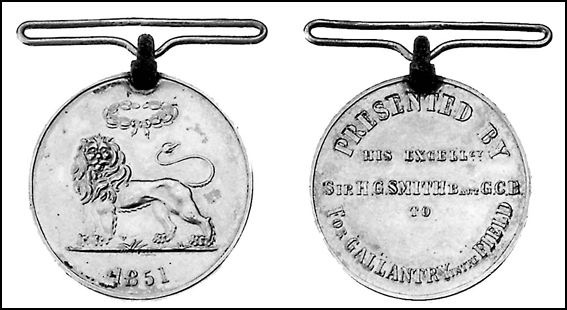
Low-resolution image of another unnamed example of a Sir Harry Smith Medal for Gallantry 1851 from a 22 June, 1999 Dix Noonan Webb auction (Lot: 32). From: https://www.dnw.co.uk/auction-archive/lot-archive/lot.php?lot_uid=47283
Two other examples of Sir Harry Smith Medals for Gallantry 1851 are archived on the Dix Noonan Webb past auction listings, but neither are associated with any photographs. There is a named example to Henry Evans, C.M.R. (Cape Mounted Rifles) from a 19 March, 2008 auction (Lot: 204). The description and prices are archived at: https://www.dnw.co.uk/auction-archive/lot-archive/lot.php?lot_uid=153200. An unnamed example was sold at a 4 December, 1991 auction (Lot: 19), archived at: https://www.dnw.co.uk/auction-archive/lot-archive/lot.php?lot_uid=852.
The following mention of two Sir Harry Smith Medals for Gallantry 1851 comes from the publication Seaby's Coin and Medal Bulletin of November, 1953 (published by B. A. Seaby Ltd., 65, GT. Portland Street, London, W. 1). A digitized image of 52 pages of this publication are available online (and can be downloaded) at the Newman Numismatic Portal (NNP) at Washington University at St. Louis, USA (https://nnp.wustl.edu/library/book/555604?page=14). On page 457 in the article "WAR MEDALS AND NOTES", edited for us by a medal collector":
"Sir Harry Smith’s Medal. (See Bulletin for May, August and September, 1952). Dr. F. K. Mitchell sends us the Bulletin of the South African Numismatic Society for July, 1953, which records further progress in his researches into the origins of this interesting medal. He has located two further specimens, an unnamed one in the War Museum at Johannesburg and a named example, to Hendrik Ferrara who (as Dr. Mitchell has discovered) was a Hottentot in the Local Levies. A third previously unrecorded specimen was in the Moravian Museum at Herrenhut in Germany but disappeared during the war, though it may yet come to the surface again. Most important, however, is the tracing in the archives of the Moravian Mission station at Genadendal near Caledon in South Africa of details of the recruitment of the Levies and of their good services, as well as a record of the award of medals to two of these men by Sir Harry Smith. Their names are known, but their medals remain to be found. We are sure that Dr. Mitchell will appreciate information about further examples of this medal, named or unnamed. His address is P.O. Box 1073, Cape Town."
1 -
While putting on some reggae to celebrate the life of Bunny Wailer after his death on 21 March, 2021, I read through a few news stories and tributes to him and found he had been awarded the Jamaican Order of Merit (October, 2017) and the Order of Jamaica (August, 2012). Apparently, other well-known reggae artists such as Bob Marley and Jimmy Cliff also were given this honor. Peter Tosh was given the award posthumously in 2012. Although there is a discussion of some Jamaican Military and other awards in the "Great Britain: Empire: Colonial Including South Africa and India: Awards, Military & History" section, I thought the "Colonial" tag seems inappropriate for the kind of, literally "grass", roots nationalism promoted by the Rastafarian movement. There is a mention of awards to other reggae musicians by JPL in his post of 17 and 18 October, 2011 on the "Jamaica-Order of Distinction" thread started by JPL on 17 October, 2011 in that "Great Britain: Empire: Colonial Including ..." section. So, for Jah B and all you reggae fans on GMIC:
"And it's a cool runnings; I know a dancehall a go nice; Tell you it's a cool runnings; De riddem a go drip like sugar and spice; Say now, cool runnings; Jus' rock with your deeta all night long; I say now, cool runnings; While the disk jockey play your fav'rite song" (Cool Runnings, Bunny Wailer, Solomonic, 1981).

Moderate-resolution image of the Jamaican Order of Merit, from the Jamaica Information Service (https://jis.gov.jm/information/awards/order-of-merit-om/). The Order of Merit (abbreviated as OM) is the 4th highest Jamaican order (some sources list it as the 3rd highest, prior to the institution of the Order of Excellence in 2003 as the current 3rd highest order) and this neck badge (suspended on a dark red ribbon) was instituted either in 1968 (https://www.medals.org.uk/jamaica/jamaica003.htm) or 1970 (http://wawards.org/en/component/content/category/129-jamaica.html). It can be held by only 15 living persons and is awarded to no more than 2 people in any single year. The ribbon for the Order of Merit is solid dark red. The Jamaica Information Service website provides the following description of this award:
"The honour of the Order of Merit (OM) may be conferred upon any citizen of Jamaica or distinguished citizen of a country other than Jamaica (an honorary member) who has achieved eminent international distinction in the field of science, the arts, literature or any other endeavour. It is not conferred upon more than two persons in any one year. The motto of the Order is “He that does truth comes into the light”, and a member of the Order is styled “The Honourable”.
The Insignia
The insignia of the Order of Merit is also a collar badge suspended from a deep maroon silk riband. The six-armed white enameled star with twelve points has superimposed on it a lesser similarly shaped star in silver. Between each of the outer six points of the star is the blue Lignum Vitae flower of Jamaica. In the centre is the Arms of Jamaica in gold on a contrasting silver background, surrounded by the motto of the Order in gold lettering on red enamel.Members of the Order of Merit
His Excellency Dr Fidel Castro Ruz,OJ
President of the Republic of CubaJames (Jimmy Cliff) Chambers, OD
Singer, Song-writer and ActorProfessor Anthony Abraham Chen
Dr Albert Belville Lockhart
Consultant and Ophthalmologist,
The University of the West IndiesSir Meredith Alister McIntyre, CD, OCC
Former Vice-Chancellor of the University of the West Indies
Economist, Formerly Secretary-General, Caribbean Community (CARICOM)
(Citizen of Grenada)Sir Shridath Surendranath Ramphal GCMG, OCC, QC
Formerly Secretary-General, Commonwealth Secretariat, London
Chairman, West Indian Commission
(Citizen of the Cooperative Republic of Guyana)Professor Edward Robinson
Professor Michael Garfield Smith
Professor of Anthropology, University College, LondonDerek Alton Walcott, OCC
Poet, Playwright, Journalist, Painter
(Citizen of St. Lucia)Professor Manley Elisha West
Professor of Pharmacology, University of the West IndiesWillard Wentworth White
Opera Singer and ActorDr Cicely Delphine Williams, CMG
Consultant in the Department of Social and Preventive Medicine and Child Health, University of the West IndiesMembers of the Order of Merit – Deceased
The Honourable Louise Simone Bennett-Coverley, OJ, MBE
Folklorist and WriterReverend William Knibb
Baptist Minister, William Knibb Memorial Baptist Church, Falmouth, Trelawny
(Citizen of the United Kingdom)Dr Thomas Phillip Lecky, OBE
Geneticist and Director of Animal Husbandry, Ministry of AgricultureThe Most Honourable Mrs Edna Manley
Sculptor and PainterThe Most Honourable Michael Norman Manley, ON
Formerly Prime Minister of Jamaica, March 1972 – October 1980 and February 1989 – March 1992; Formerly President, National Workers UnionRobert Nesta (Bob) Marley, Reggae Superstar
The Honourable Herbert Henry (Herb) McKenley, OJ, CD
Athlete and Olympian (1948 and 1952)Mrs. Mary Seacole, Jamaican Nurse
Sir Phillip Manderson Sherlock, KBE, OCC
Formerly Vice-Chancellor, University of the West IndiesCarl Ebenezer McDougall Stone, CD
Professor of Political Sociology, University of the West IndiesProfessor Ralston (Rex) Milton Nettleford, OCC
Vice Chancellor Emeritus, University of the West Indies
Professional Directorship for Extra Mural Studies
Director of Studies Trade Union Education Institute, University of the West Indies, Founder and Artistic Director, Choreographer, National Dance Theatre Company of Jamaica, Consultant on Cultural Development – UNESCO"(Verbatim from: https://jis.gov.jm/information/awards/order-of-merit-om/)
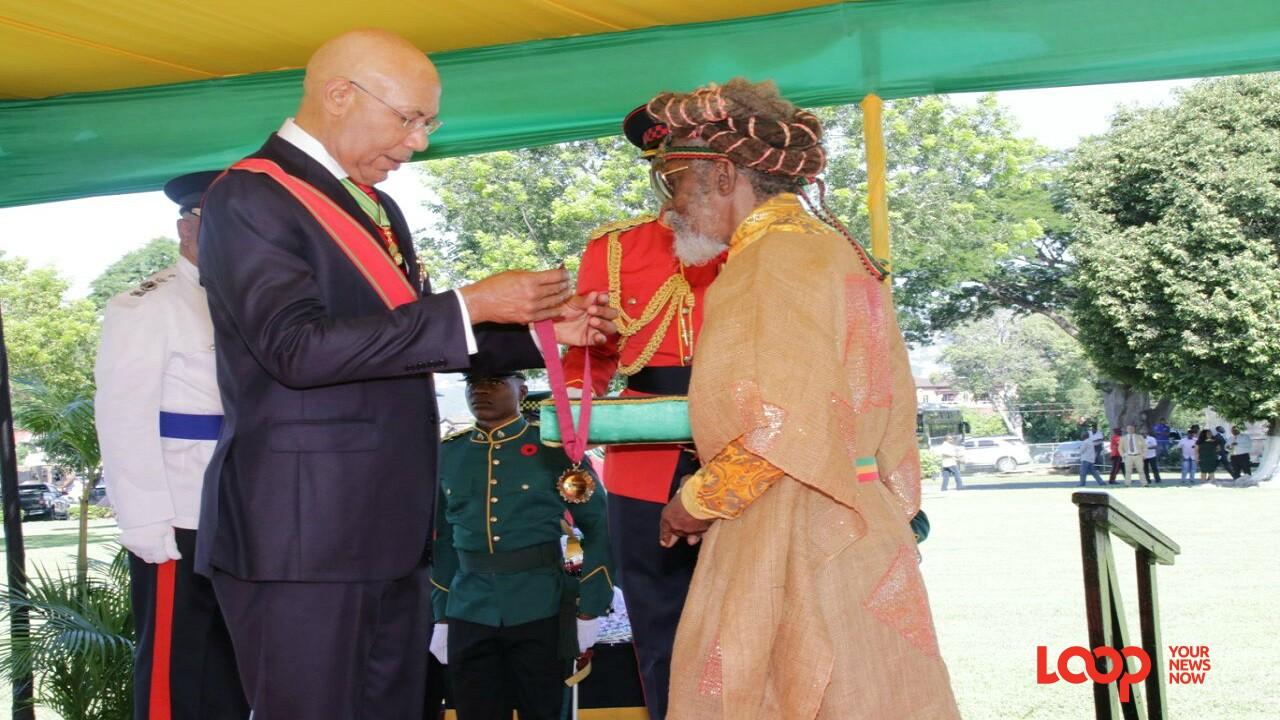 Photo of Bunny Wailer (Neville O'Riley Livingston), or Jah B, receiving his Order of Merit from Governor General Sir Patrick Allen at King's House on 16 October, 2017 (photo by Llewellyn Wynter). From LOOP, October 16, 2017 (https://www.loopnewsbarbados.com/content/jah-b-leads-pack-among-top-national-honours-1).
Photo of Bunny Wailer (Neville O'Riley Livingston), or Jah B, receiving his Order of Merit from Governor General Sir Patrick Allen at King's House on 16 October, 2017 (photo by Llewellyn Wynter). From LOOP, October 16, 2017 (https://www.loopnewsbarbados.com/content/jah-b-leads-pack-among-top-national-honours-1).
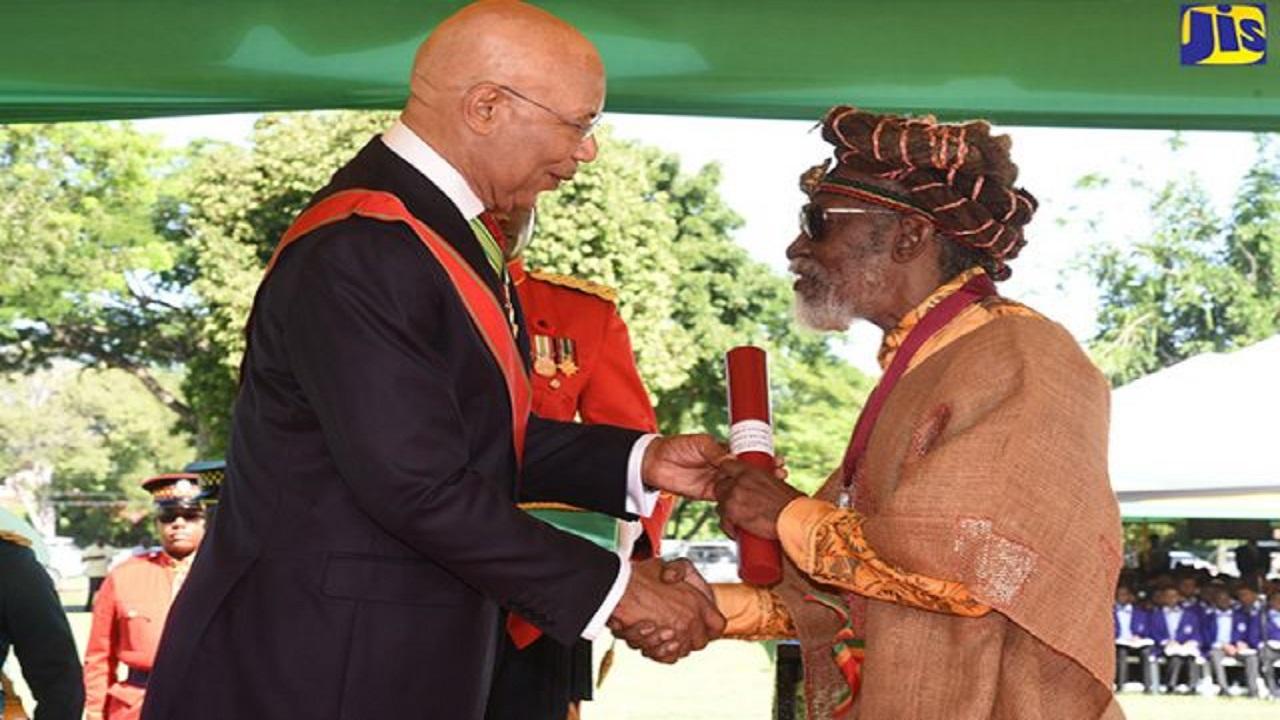 Photo of Bunny Wailer receiving the award document for his Order of Merit from Governor General Sir Patrick Allen at King's House on on (photo by Llewellyn Wynter). From LOOP, 26 February, 2018 (https://www.loopjamaica.com/content/irie-fm-rewards-bunny-wailer-lifetime-achievement-award-0).
Photo of Bunny Wailer receiving the award document for his Order of Merit from Governor General Sir Patrick Allen at King's House on on (photo by Llewellyn Wynter). From LOOP, 26 February, 2018 (https://www.loopjamaica.com/content/irie-fm-rewards-bunny-wailer-lifetime-achievement-award-0).
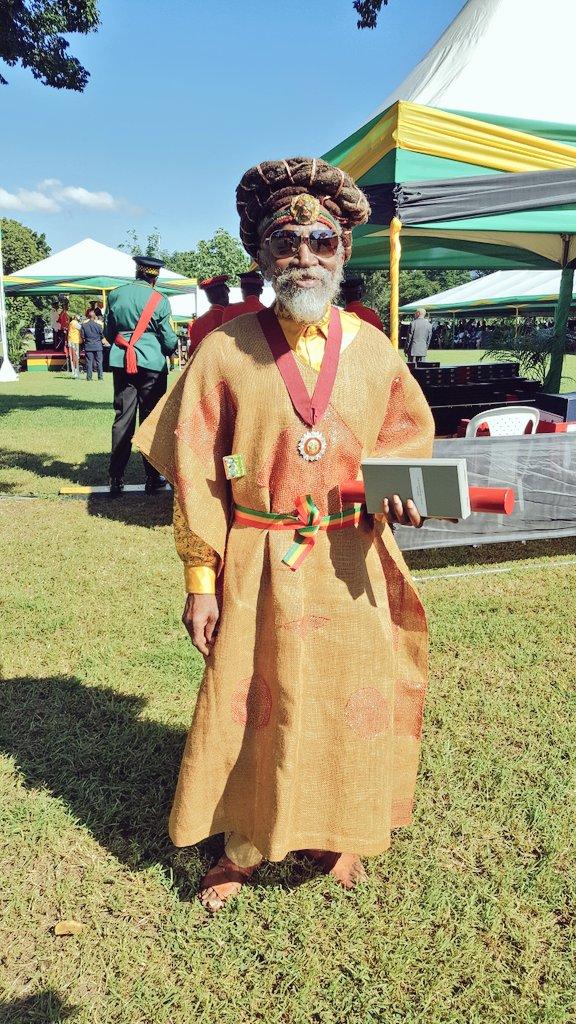
Jah B after the awards ceremony with his Order of Merit at King's House on Jamaica's National Heroes Day Awards, 16 October, 2017 (JIS image). From: NewsAmericas (https://www.newsamericasnow.com/top-jamaican-actor-musician-among-2017-national-heroes-honorees/)

Moderate-resolution image of the Order of Jamaica from the Jamaica Information Service Facebook page (https://www.facebook.com/JISVoice/photos/the-honour-of-the-order-of-jamaica-oj-may-be-conferred-upon-any-jamaican-citizen/10155842254701457/). The Order of Jamaica, established in 1969, is the 5th highest award in Jamaica. Wikipedia states that the Order of Jamaica "is considered the equivalent of a knighthood in the British honors system" (https://en.wikipedia.org/wiki/Order_of_Jamaica). The neck ribbon is solid green, and the ribbon is green with a narrow yellow-black-yellow central stripe (shown below, from: https://en.wikipedia.org/wiki/Order_of_Jamaica#/media/File:Order_of_Jamaica.gif)

The Jamaica Information Service (https://jis.gov.jm/information/awards/order-of-jamaica/), provides the following information in the Order of Jamaica:
"The honour of the Order of Jamaica (OJ) may be conferred upon any Jamaican citizen of outstanding distinction or upon any distinguished citizen of a country other than Jamaica (honorary member). A member of the Order is styled “Honourable” and the motto of the Order is “For a covenant of the People”.
The Insignia
The insignia of the Order of Jamaica is made in solid gold and consists of a white enamel collar badge, the ends of which represent the ackee fruit and leaves, suspended from a deep green silk riband. The centre shows the heraldic Arms of Jamaica against a gold background and this is surrounded by the gold lettered motto of the Order on green enamel."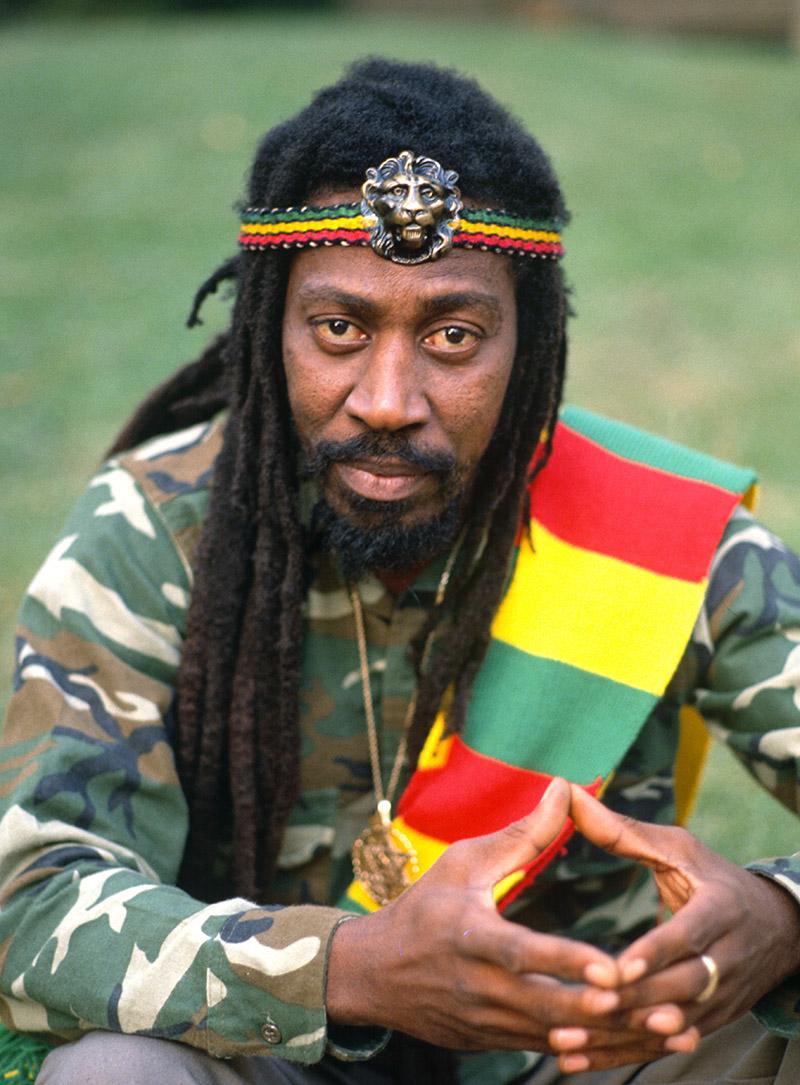
Bunny Wailer (OM, OJ), Jah B (born Neville O'Riley Livingston), 10 April, 1947 - 2 March 2021. Photo from 1988 in Notting Hill (photo by David Corio/Redferns). From: http://sandrarose.com/2021/03/rip-reggae-legend-bunny-wailer-dead-at-73/photo-of-wailers-and-bunny-wailer/
0 -
 Above is another portrait photo of Ahmed Hassanein wearing his Pasha costume and numerous awards. This photo shows him wearing what is probably the Grand Chamberlain's badge on the upper right (the viewer's left) portion of his sash (possibly that of the Grand Cordon Class of the Order of Ismail). It also shows the breast star of the 1st Class Order of Ismail prominently on his left breast. This portrait appears to come from the same sitting as another common image of the intrepid Hassanein that I previously illustrated on this thread in my post of 30 April. 2018 (low-resolution) and in 2 higher resolution images in my post of 14 September, 2018 (showing him seated wearing an open cape and tarboosh). The above portrait is from a past eBay auction archived on the WorthPoint website (https://www.worthpoint.com/worthopedia/egypt-vintage-photograph-ahmed-pasha-1939666979). No information other than the identification of Hassanien and brief mention that it includes "medals and sword" is included in the auction listing. The signature visible in an image of the matting indicates the portrait was made by the Jean Weinberg Studio in Cairo.
Above is another portrait photo of Ahmed Hassanein wearing his Pasha costume and numerous awards. This photo shows him wearing what is probably the Grand Chamberlain's badge on the upper right (the viewer's left) portion of his sash (possibly that of the Grand Cordon Class of the Order of Ismail). It also shows the breast star of the 1st Class Order of Ismail prominently on his left breast. This portrait appears to come from the same sitting as another common image of the intrepid Hassanein that I previously illustrated on this thread in my post of 30 April. 2018 (low-resolution) and in 2 higher resolution images in my post of 14 September, 2018 (showing him seated wearing an open cape and tarboosh). The above portrait is from a past eBay auction archived on the WorthPoint website (https://www.worthpoint.com/worthopedia/egypt-vintage-photograph-ahmed-pasha-1939666979). No information other than the identification of Hassanien and brief mention that it includes "medals and sword" is included in the auction listing. The signature visible in an image of the matting indicates the portrait was made by the Jean Weinberg Studio in Cairo.
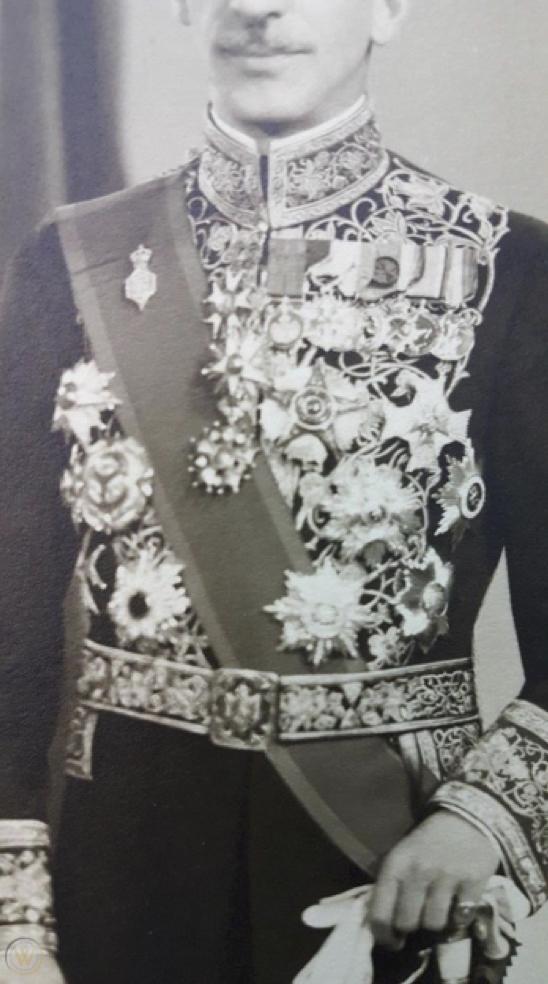
A close-up image of Ahmed Hassanein's awards from the WorthPoint archived past eBay listing, showing the Chamberlain's badge, the breast star of the 1st Class Order of Ismail, as well as Hassanein's many other awards. Obviously this is not a high-resolution image, but a better view of these same medals can be seen in the photo close-up that is the 2nd photo in my 14 September, 2018 post on this thread.
-EMAILLE-1.-POIDS-BRUT--43-26-G..jpg.02ddbf31ebd8c10415ae2d9d55671b90.jpg)
A low-resolution image of a 3rd Class Commander neck badge of the Order of Ismail from a current auction listing, Lot 123, of Delon-Hoebanx of Paris (https://www.delon-hoebanx.com/lot/95661/10461417?). The badge is noted as made of 18 k gold with enamel and weighs 43.26 g, but no additional information is provided. The photo in the auction listing is of no higher resolution than what is shown above.
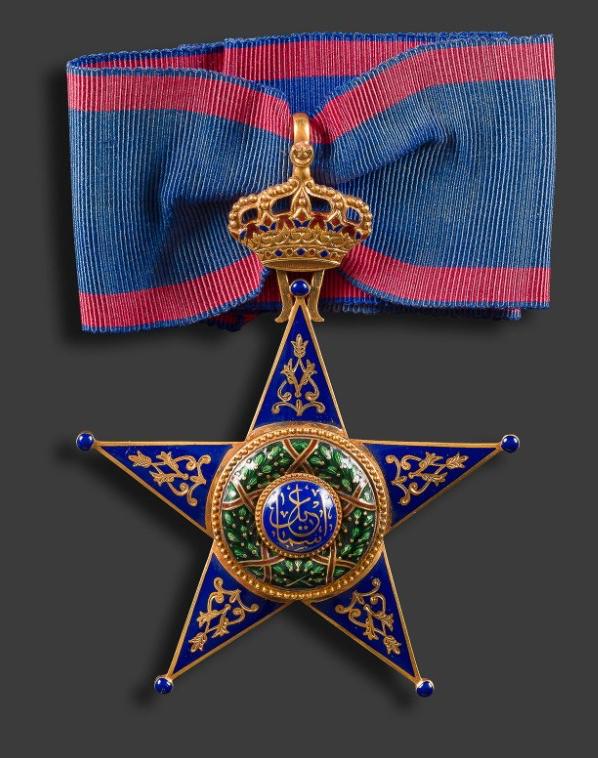
Owain sent me the link to this current auction listing of another 3rd Class Commander neck badge by Ader of Paris, Lot 220 (https://www.ader-paris.fr/lot/110892/14446647?offset=200&). The auction listing includes a very high-resolution image of this badge that can be zoomed for excellent detail. Although no photos of the revere or hallmarks are provided, the auction listing identifies that there is a Maison Lattes hallmark on the reverse and states the date hallmark is for 1926 (but does not specify the date hallmark letter). This example is associated with its presentation case. The wreath design is consistent with Lattes execution, and the Lot 220 photo provides a great zoomed view of the wreath configuration and the engraving on the gold floral elements of the gold and blue enamel star arms. The maximum enlargement possible on the website listing has good lighting for seeing the distribution of the gold laurel fruit dots in the wreath, the shorter form of the leaves with prominent veins (compared with the contrasting form seen in Bichay-made examples), as well as the form of the gold and red enamel bands, and the thickness of the green enamel. The most distal flowers have 3 paired sets of lateral lines and a single distal engraving mark in the central petal. The 2 central flowers each have 3 lateral engraved marks and a single mark centered in the longer, most medial petal. The engraving on this piece is very well-executed. The dimensions of the badge are given as 81 mm X 66 mm and its weight as 42 g.
0 -
Owain alerted me to a couple of auction listings of interest, one including a silver badge for the Mixed Courts.
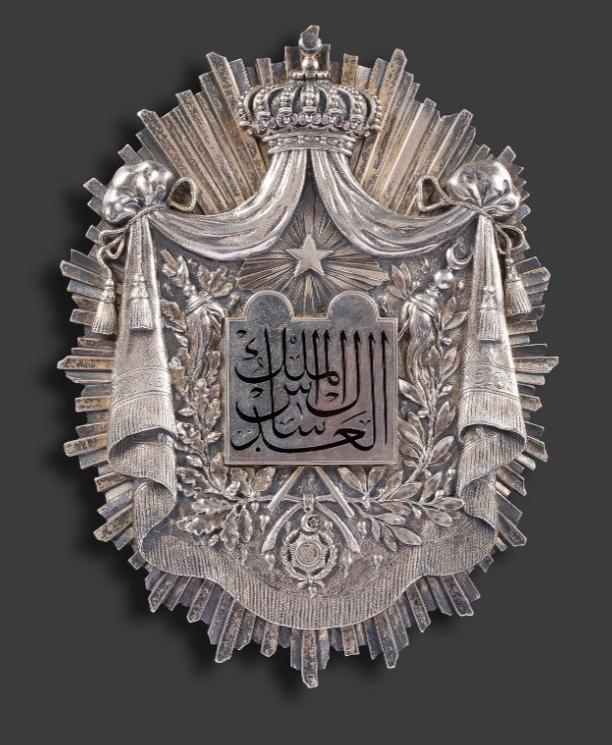
Above is a moderate-resolution image of a silver Mixed Courts badge from a current auction listing by Ader of Paris, Lot 227 (https://www.ader-paris.fr/en/lot/110892/14446654?offset=200&). The badge is identified as being marked with the name of "FROMENT-MEURICE" and a boar's head hallmark (a French silver fineness hallmark indicating a .800 minimum silver fineness). The size is given as 112 mm X 88 mm and it's weight as 150 g. The image in the Ader website listing is very high-resolution and can be zoomed for excellent details of this badge. There may be a couple areas of minimal enamel losses on two of the diacritical marks of the tablet inscription. Although the badge appears to be entirely silver, the description states that it is argent et vermeil ciselé (chased vermeil). There appears to be some tarnish on the embellishment, the rays around the star above the central tablet, the leaves of the 2 branches, and possibly on the Order of Medjidie medal that might be worn vermeil or appear to be vermeil. These areas look more like tarnish even in the highest-resolution enlargement on the Ader website auction listing. The lack of any obvious gilding (except possibly the rayed embellishment) suggests this is probably not a gold & silver badge of a judge of the District Courts, but a silver badge of an official of any of the different Mixed Courts or the Parquet. I see no clear evidence of the gold on the central tablet, the drapery, the tasseled cords, the drapery fringe, the star above the tablet, the rays around the star, the oak & laurel branches, the tughs, the crown, or the Order of Medjidie medal (which are variously gold on different makers' versions of the District Courts' badges, see the 3rd [Froment-Meurice], 7th [probably Froment-Meurice], 8th [Stobbe], and possibly the 9th [Stobbe] photos showing District Court badges in my post of 6 July, 2020; and the Pierre Crabitès example (made by Stobbe) shown in the first 2 photos of my post of 2 December, 2019). The specific lack of vermeil in some of the common combined design elements seen on District Court badges (especially the tassled cords or any portion the drapery that all appear silver) makes me doubt that this badge exhibits anything except tarnish. It does not appear that this could be gold Appeals Court badge. The description is generally quite accurate in its description of the badge and the individual design elements and is one of the best auction images available for these badges.
0 -
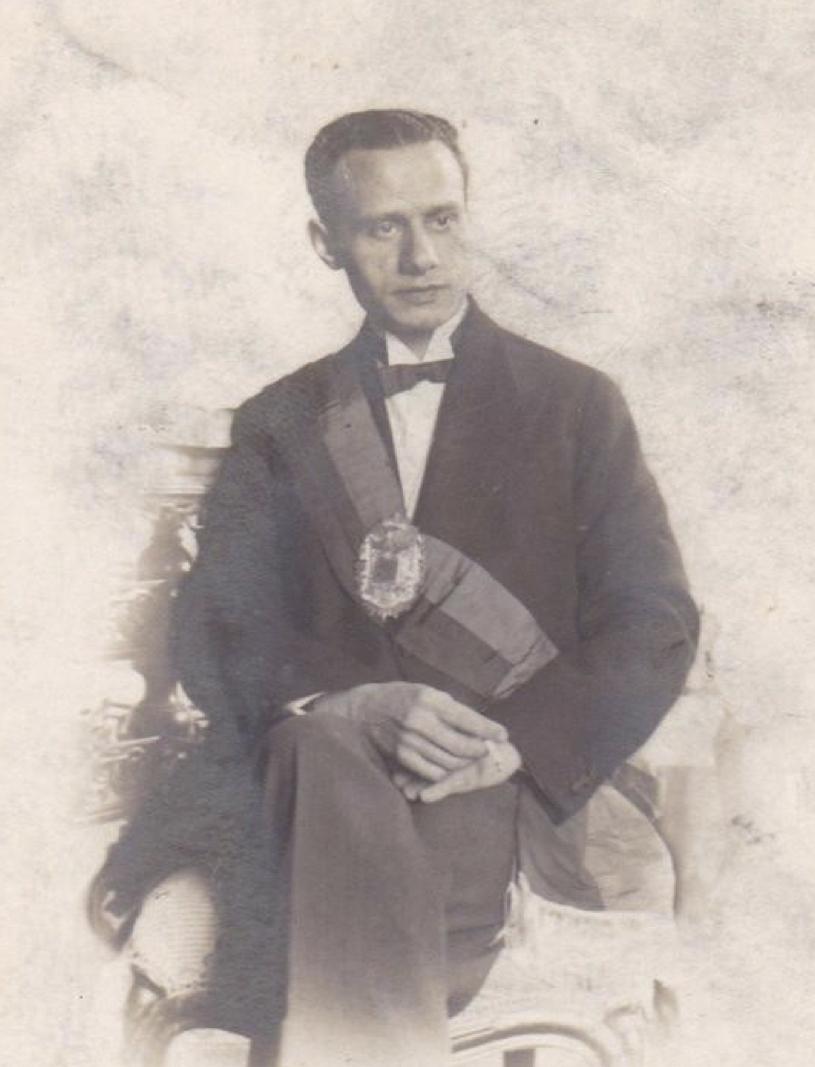
Above is an undated studio portrait of a seated official of the Mixed Courts from a 28 July, 2018 eBay auction archived on the WorthPoint website (https://www.worthpoint.com/worthopedia/egypt-vintage-photograph-white-1939040741). The margins of the photo have been dodged, he appears to be seated in front of a cloth backdrop, and is smoking a cigarette. The listing does not provide any identification of the man, his court role, nor the studio that made the portrait. The lack of the stamboulin coat almost certainly indicates he was not a judge, and his role would likely have been as either a legal advisor, lawyer, or registrar of one of the courts. As seen in other portraits on this thread where the particular court, individuals, and their roles are identified, the bicolored (probably green above red) sash does not clearly indicate an assignment to any particular court, but was worn by functionaries serving the District and Appeals Courts, as well as the Prosecutor's Office (Parquet). It is unclear if the darkness of the central tablet of the heavy badge suggests he may be wearing a gold & silver badge or an all-silver version (more likely it is silver). The gold metallic fringe of the end of his sash is just visible in the lower right side of his left hip (on he viewer's right), where the dodging starts to lighten the margins his portrait. He may resemble M. Buccianti, Secrétaries du Greffer en Chef, shown in a 1926 group photo of the functionaries of the Court of Appeals, on page 391 of the 50th anniversary Les Jurisdictions Mixtes d’Égypte 1876-1926 volume.
0 -
I have a few things to add about a couple of the 3 medals discussed here, most documenting different manufactures of these medals.

Above is a silver Medal of Devotion from a current eBay offering (https://www.ebay.com/itm/EGYPT-DEVOTION-TO-DUTY-SILVER-ORDER-MEDAL-OF-KING-FUAD-1923-1338-AH-RARE/324280132543?hash=item4b809a23bf:g:tk4AAOSw~6FdZ5vl). It is unnamed, quite worn, and probably has a replacement ribbon. The same seller also is offering a bronze Medal of Devotion in a case (see below), but with an incorrect ribbon (purple, as is correctly on Jack's silver Medal for Meritorious Acts). That seller also is offering an unnamed silver Medal for Meritorious Acts with an incorrect ribbon (https://www.ebay.com/itm/EGYPT-DISTINGUISHED-SERVICES-SILVER-ORDER-OF-KING-FUAD-1920-1335-AH-RARE/324280132544?_trkparms=aid%3D111001%26algo%3DREC.SEED%26ao%3D1%26asc%3D20160811114145%26meid%3De87fce6418a743aea9860643415763d4%26pid%3D100667%26rk%3D1%26rkt%3D8%26mehot%3Dnone%26sd%3D324280132544%26itm%3D324280132544%26pmt%3D0%26noa%3D1%26pg%3D2334524&_trksid=p2334524.c100667.m2042). The attached ribbon on that eBay silver Medal for Meritorious Acts is not the correct purple form, but has a red central stripe with blue lateral stripes similar to that for the Medal of Benevolence, except that the central red stripe is thicker than that on the correct ribbon for the Medal of Benevolence (as seen above in previous posts, all of the blue & red stripes should be of the same width, also shown on a Medal of Benevolence below).
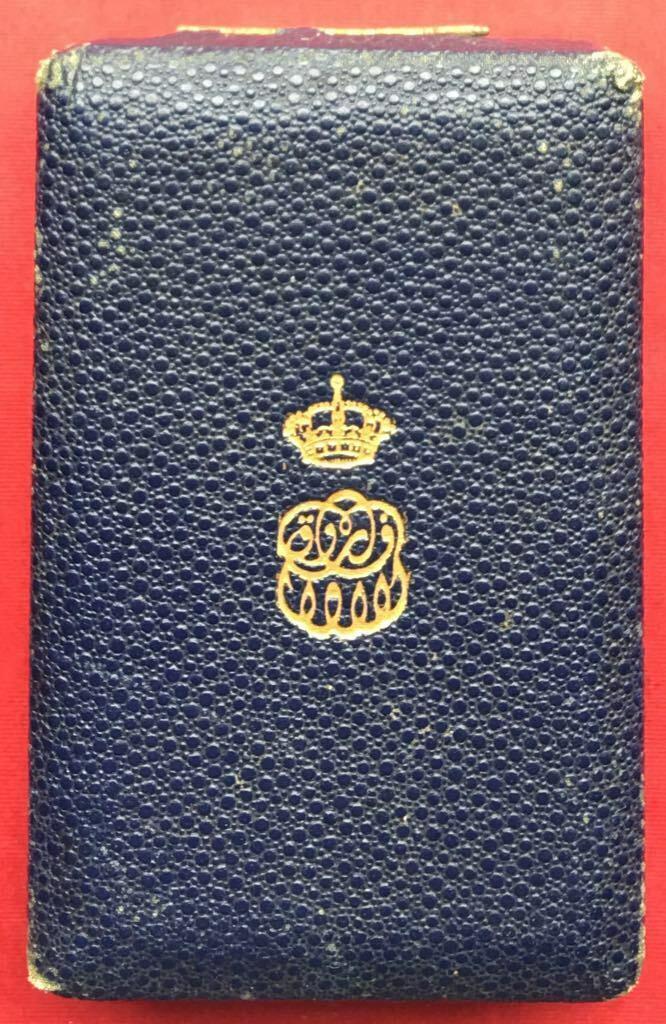
Case for an bronze example of the Medal of Devotion with the cipher of King Farouk I. This is from the same seller as the above silver Medal of Devotion on a current eBay listing (https://www.ebay.com/itm/EGYPT-DEVOTION-TO-DUTY-BRONZE-ORDER-MEDAL-OF-KING-FAROUK-ORIGINAL-CASE-RARE/324132791324?hash=item4b77d1e41c:g:ckQAAOSwUv1c0bho).
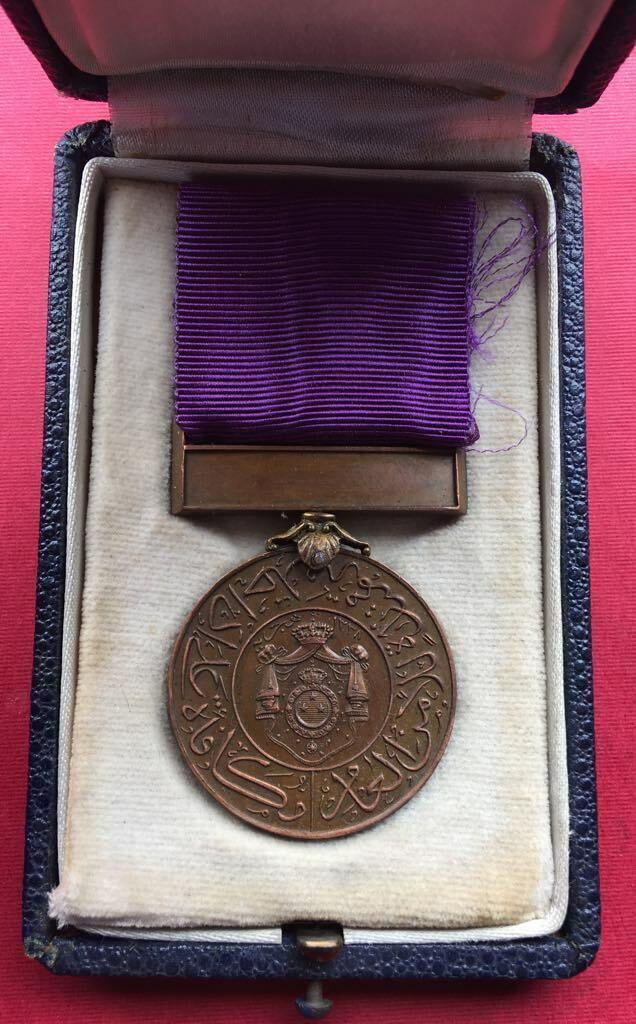
A photo of the obverse of the same unnamed Medal of Devotion, with an incorrect purple ribbon, in the case from the above eBay listing.
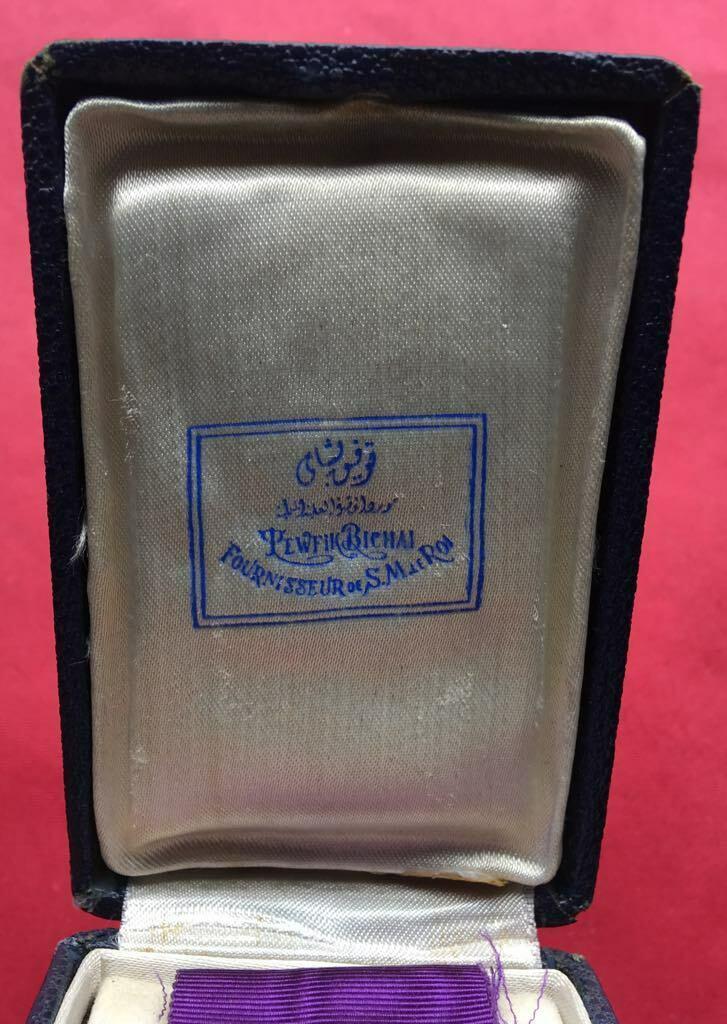
The inside of upper case lid showing of the same Bronze Medal of Devotion with a purple instead of blue ribbon, showing the manufacturer's marking on the satin lining for Tewfik Bichay of Cairo.

Cased silver Medal of Benevolence from a 15 July, 2015 eBay (UK) auction archived onto the WorthPoint.com website (https://www.worthpoint.com/worthopedia/1928-egypt-islamic-commemorative-1777587411). The case exhibits the same style "Maison Lattes L. Rosen & Cie. Le Caire" satin label as I illustrated in the 4th-to-last photo of my pervious post here on 29 January. It must be the association of this form of Maison Lattes L. Rosen labelling that is the principal basis for attributing this medal as made by L. Rosen.
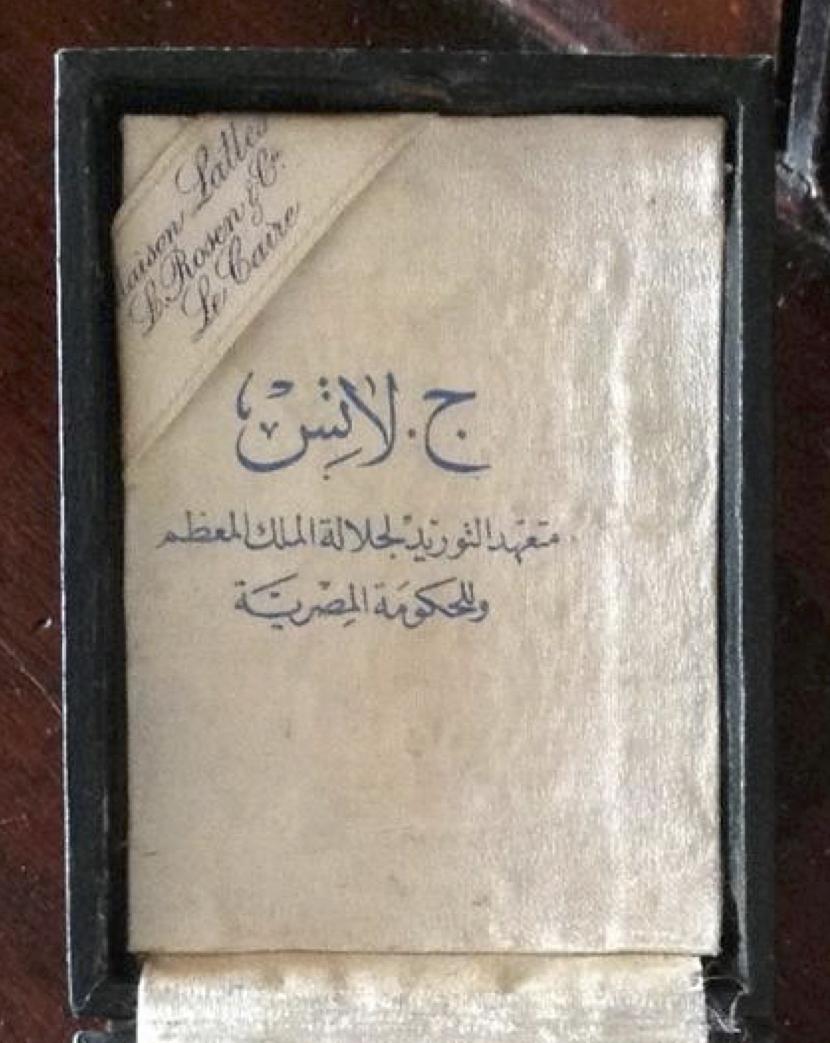
Cropped close-up of the same UK eBay cased example of the Medal of Benevolence showing the "Maison Lattes L. Rosen & Cie. Le Caire" satin label. As noted in my post of 29 January, all aspects of the cursive style, as well as the labelling directly on the silk lining of the upper case lid, are identical to how J. Lattes cases for most Egyptian Orders were marked. There are some rumors that when Tewfik Bichay took over the Lattes workshop he may have initially employed a non-Arab name before switching to his own name and forms of labelling. Could Tewfik Bichay be the elusive "L. Rosen"?
0 -
I want to briefly re-visit a topic that was part of this thread discussing regalia of the Grand Chamberlain and other Chamberlains to the Egyptian King and Queen that I mentioned in my post of 26 March 2019 on this thread. In that post, I illustrated another image of the intrepid Ahmed Hassanein accompanying King Fuad I to the Egyptian Parliament on 27 November, 1939 wearing his Grand Cordon Class breast star of the Order of Ismail (in addition to other honors) with his Pasha costume and Grand Chamberlain regalia. I briefly discussed the Chamberlains' badges on that date. I recently found the information detailing the wearing of these badges in the Protocole put out by the Office of the Grand Chamberlain to King Farouk I, Abdel Latif Talaat.
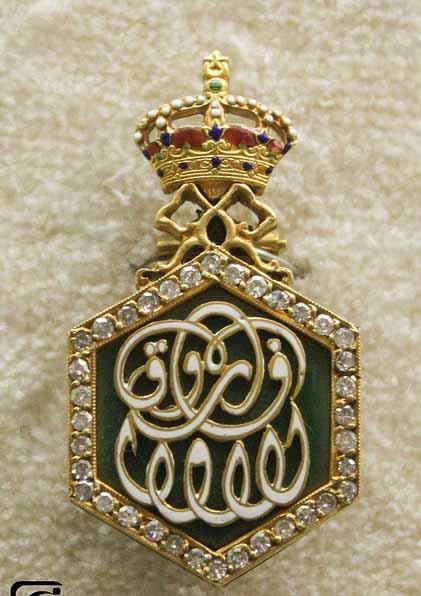
Above are 2 illustrations of examples of the Chamberlain's badges from my post of 26 March, 2019 (from Hassan Kamel-Kelisli-Morali's flickr site: upper badge from: https://www.flickr.com/photos/kelisli/20322111042/in/photostream; lower badge from: https://www.flickr.com/photos/kelisli/12036519145/in/photostream). Both badges have the cipher (monogram) of King Farouk I. Owain illustrated the same upper badge and several others that he photographed from a display in Abdine Palace Cairo in his posts of 26 March and of 29 March, 2019. I further discussed these badges (misrepresenting them as "pins" throughout my posts) in relation to the first 6 photos in my post of 2 April, 2019 on this thread.
Thus far, the only additional informationI have found regarding variation in the form of these Chamberlain's badges comes from a Tewfik Bichay advertising flyer. Above is a cropped portion of the bottom of the 3rd page of this flyer which I included in my post of 21 September, 2020 on this thread. This illustration indicates that the 2nd badge shown above is that of the Master of Ceremonies and the first badge shown above is probably that of the Grand Chamberlain. The 3 badges on the right bear the cipher (monogram) of King Farouk I and the badge on the left has the cipher (monogram) of Queen Farida.
The beginning chapter of the 1947 English language edition of the Royaume d"Rgypte Protocole (Chapter I. Office of the Grand Chamberlain, on pp. 3-4) discusses the wearing the Chamberlains' badges as follows:
"8. On the occasions listed below the Grand Chamberlain, the Chamberlains, and the Masters of Ceremonies will wear the special hexagonal gold badge on their right-hand buttonholes. In the centre of the badge there is the Royal Monogramme in white enamel on a green enamel shield. The badge has a diamond surround and is ensigned with the Royal Crown:
1. when on duty in the Palace or on His Majesty's business outside;
2. at court banquets, receptions and functions;
3. at the homes of private persons when either His Majesty the King or Her Majesty the Queen is present;
4. at religious ceremonies attended by His Majesty the King;
5. at concerts and stage performances honoured by the Presence of His Majesty the King or Her Majesty the Queen.
9. When on duty in the Palace the Chamberlains and Masters of Ceremonies will wear black morning dress."

Visiting card (or calling card) of Abdel Latif Talaat, Grand Chamberlain to His Majesty the King (Farouk I). I found this card tucked into the copy of the Royaume d'Egypt Protocole, 1946, whose illustrations of the Order of Ismail are shown above in my post of 11 February, 2021 (and a few additional images in my post here of 31 December, 2020).
Above is an image of the Chamberlains to King Farouk I (all wearing the Chamberlains' Badges on their right-hand lapels) that I included as the 6th photo in my post of 2 April, 2019 on this thread. At the time I posted this, I had no good information about the identity of any of these Chamberlains. The name on the above calling card (translated thanks to Owain's help) matches the inserted labelling (at the feet) identifying the man standing in the front center with wide-striped pants and glasses as the Grand Chamberlain, Abdel Latif Talaat. This image is from Hassan Kamel-Kelisli-Morali's flickr site, and is credited courtesy of Mr. Aly Zulifikar (https://www.flickr.com/photos/kelisli/8395692018/in/pool-egyptianroyalty/). There are several much better quality photos of Abdel Latif Talaat on the Flickr photostream of Fadia Badrawi, his great granddaughter (https://www.flickr.com/photos/dereenb/with/48119910441/).
0 -
I have had some difficulty downloading a good-resolution image of a 2nd Class Grand Officer "set" of Order of Ismail insignia on Hassan Kamel-Kelisi-Morali's flickr site (https://www.flickr.com/photos/kelisli/3050711467/in/photostream/). This is an image of the paired neck badge and breast star, and has been re-posted on several internet locations. Hassan identifies this image as coming from an unspecified eBay listing, sometime around November 22, 2008. There are no images of the reverse of these 2 items and no information about hallmarks that would allow dating of their manufacture or could confirm the makers of each piece. Although these are not high-resolution images, they are pretty good images, and better than I have been able to get off that flickr site for illustration on this thread. I have been curious about this "set", because (as discussed below), it appears to me that the neck badge was probably produced by J. Lattes, but the breast star appears to be a Tewfik Bichay-made piece.
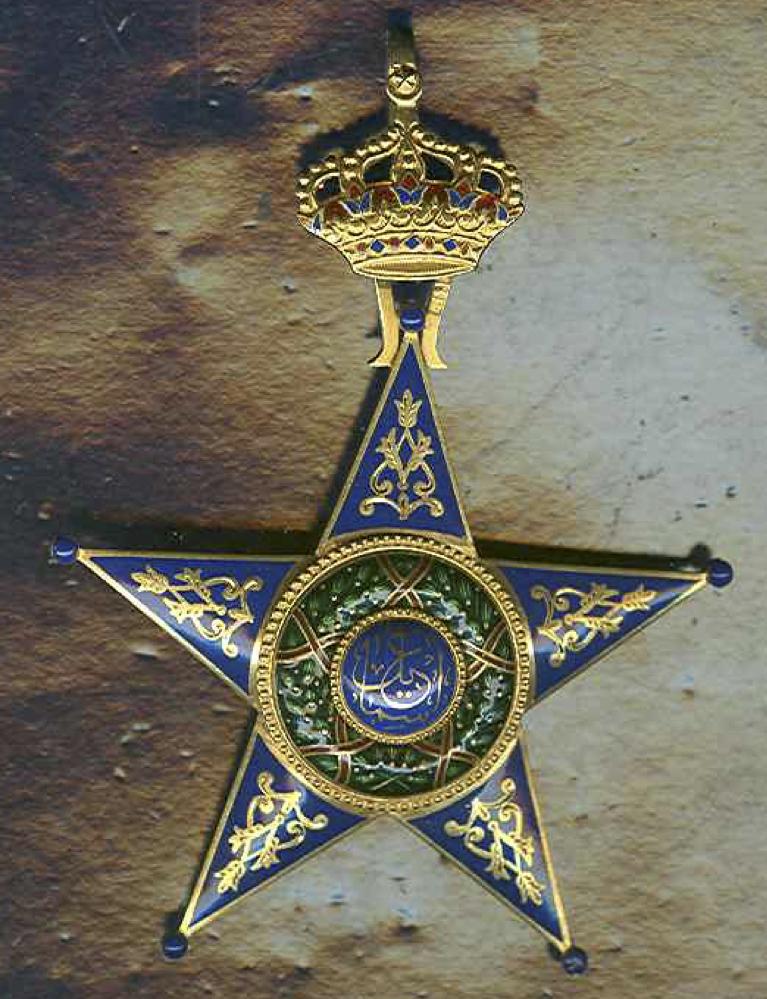
Moderate-resolution cropped image of the neck badge from this "set" of 2nd Class Grand Officer regalia from Hassan Kamel-Kelisi-Morali's flickr site. The configuration of the wreath's gold laurel fruit dots & the gold & red enamel bands are consistent with other examples that are Lattes-made pieces (note the thick & even gold margins of the gold & red enamel bands compared with those on the breast star below), as discussed in my post of 28 March, 2020 on this thread comparing variation in 1st Class sash badges and 2nd Class neck badges of the Order of Ismail. The leaves of the wreath, also show the thicker, more prominently veined execution than are seen on the wreaths of Lattes-made pieces (see my discussion above in the 10 December 2020 post about the 3rd Class Commander neck badge from the 4 December, 2020 auction listing No. 43, Lot 193, on the La Gazette Drout website, and also see my discussion below about the wreath on the "associated" breast star of this "set" and the images in my post of 28 March showing what appear to be contrasting configurations of confirmed or probable Bichay-made neck badges, i.e., the anomalous example in the 1st photo of that post; the 16th-probable Bichay piece [3rd Class?]; 17th photo-possibly a chimera mixture of Lattes elements with a Bichay-made wreath [3rd Class?]; 18th photo-a confirmed Tewfik Bichay 1st Class sash badge). The most distal flowers show 2 paired-lateral engraving marks and a single engraved mark at the most distal portion of each flower on the gold & blue enamel arms of the star. The central 2 flowers on each arm have 3 sets of lateral engraving marks and a single distal mark positioned between the most medial & the middle petals of these flowers. This variation is seen among other examples. The resolution of the image is not good enough to read the hallmarks on the connection between the superior star arm and the crown suspension device, and the lower image detail also makes it difficult to comment on other aspects of the engraving on this neck badge.
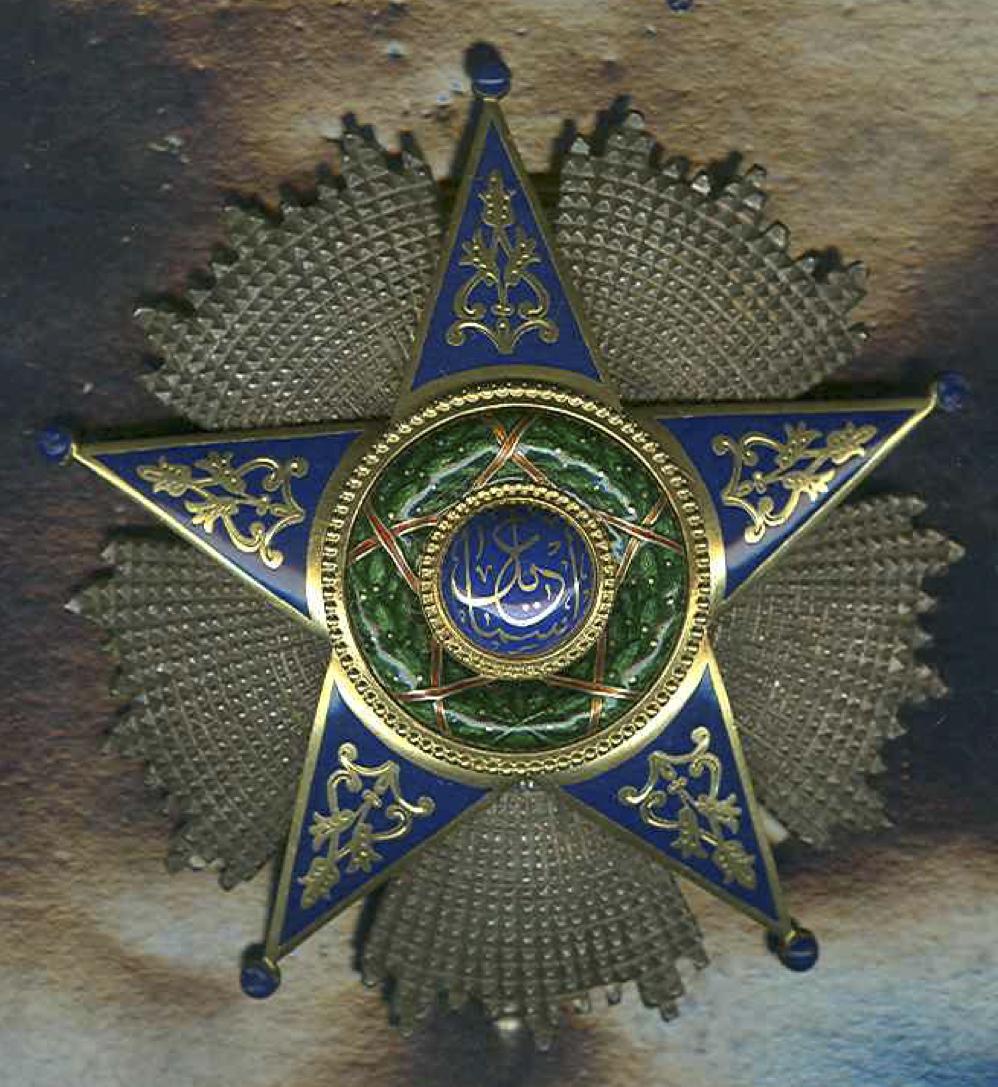
Cropped image of the 2nd Class Grand Officer's breast star from Hassan Kamel-Kelisi-Morali's flickr site. The wreath configuration has a couple details that suggest this is a Tewfik Bichay-made piece rather than a Lattes breast star. See my discussion of breast stars of the Order of Ismail in the post of 31 January, 2020 on this thread for descriptive comparisons and additional photos. The thinness, and slight irregularities, of the gold border of the gold & red enamel bands are not seen in Lattes examples, but do seem to characterize the Tewfik Bichay-made breast stars. The arrangement of gold fruit dots appears normal for Bichay wreath elements, but not the distribution seen on Lattes-made wreath components (there are a few minor placement differences visible in comparisons of the images on the 31 January, 2020 post). However, on the above example they appear smaller than seen on other Bichay stars, probably because the wreath has a thick application of green enamel that appears to cover some of those fruit dots. The shape of leaves on Bichay-made wreaths appear a bit longer, with less prominent veins in the leaves than those on Lattes-made examples (compare the high-resolution image of the wreath of a Tewfik Bichay 1st Class Grand cordon breast star from a Künker Münzauktionen und Goldhandel 2014 auction shown as the 8th photo in that 31 January post on this thread). The resolution does not show the engraved marks on the gold floral ornamentation of the star arms as well as several illustrated in my previous 31 January, 2020 post. The most distal flowers show 3 paired-lateral engraving marks and a single mark in the most distal central petal. The joined flowers in the middle of each arm exhibit 3 lateral marks and a single engraved mark distally oriented between the space separating the most medial and central petals. The other engraving of the gold floral ornamentation on the star arms of the above example may also show slightly less elegant execution than several Lattes examples shown in the 31 January, 2020 post, but does not appear to be as "casually" engraved as can be seen on that Künker Münzauktionen und Goldhandel auction breast star. Although the resolution of both images is not good enough for detailed views of these insignia, the significant difference between the configurtaions of the wreath elements suggest to me a high probability that the they are not an actual set, but a J. Lattes-made neck badge that has been combined with a Tewfik Bichay-made breast star.
0 -
I was able to download a higher-resolution image of a 4th Class Officer breast badge of the Order of Ismail from a previous Spink auction (19001, Lot 1179). I previously illustrated this badge as the 4th photo in my post of 8 July, 2020, but only in a lower-resolution form than could be seen on the Spink website. As I noted in my 8 July post discussing design variation of the Officer breast badge compared with the other classes of this award, there are many fewer good internet images of the 4h Class badge. Because of that, I do want to include this better resolution image than I was able to post in that previous discussion.
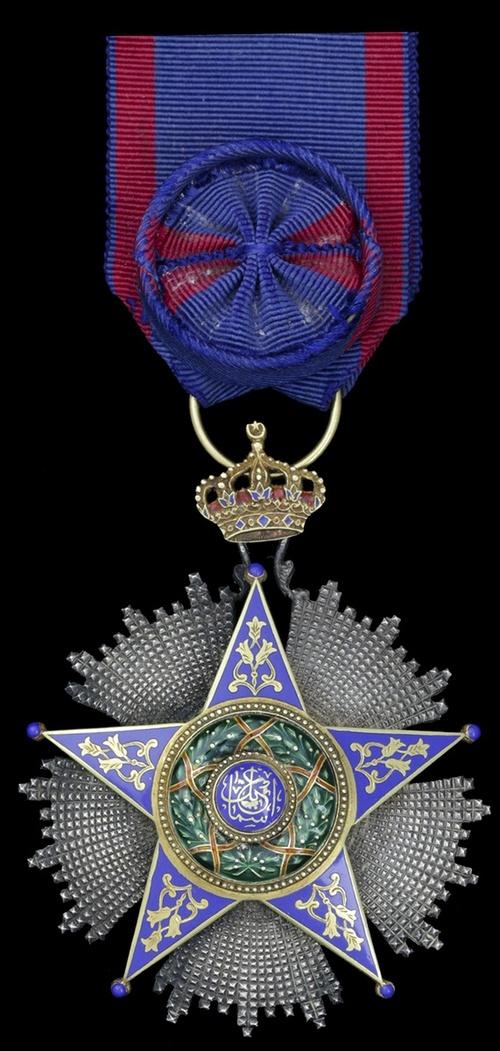
High resolution of the Spink 4th Class Officer breast badge example (https://spink.com/lot/19001001179) identified in the auction description as made by Lattes. My post of 8 July, 2020 notes that I had also illustrated this badge in a previous post, and restates that the reported date hallmark is "K". I mistakenly wrote that this indicates an assay date of '1935-35", but that date hallmark actually denotes a date of 1935-1936. This photo can be zoomed for comparable detail to what can be seen on the Spink website and for comparisons with the better photos of Officer breast badges that I illustrated in my 8 July, 2020 post discussing the design of this badge in relation to the insignia of the other classes of the Order of Ismail. That discussion compares some design differences between their Spink auciotn example and the 2 other best-illustrated examples (the first in that post is a Lattes-made badge from a 12 December, 2015 auction by Heritage Auctions [Lot 47429]; and a Lattes made-badge from an October 2017 auction by eMedals [Itme EG137]; neither listing has good images of the assay date hallmarks). As noted in the 8 July discussion, the most interesting difference is that the Spink auction example has some differences in the engraving of the gold floral ornamentation of the gold & blue enamel star arms. Unlike the Heritage Auctions Officer's breast badge (1st photo of 8 July) this example from Spink Auction 19001, Lot 1179, exhibits only 2 paired-engraved marks on the most distal flowers of each of the five arms' gold floral ornamentation, and on each of the central dual flowers. The engraving of the most distal flower on the Spink example includes 2 marks forming an oval loop, unlike the more common single mark, as seen on the Heritage Auctions badge. As noted, the 2 joined middle flowers on the Spink badge show only 2 lateral engraving marks (unpaired with 3 on the Heritage Auctions badge) and a v-shaped engraving outlining their central petals (the Heritage Auctions badge has one mark at the distal end positioned between the most medial and the middle petals of each of these flowers). The eMedals example (2nd & 3rd photos in my 8 July post) exhibits 3 engraved marks on the paired central flowers and the similar v-shaped 2 marks outlining the central petals, as on the Spink badge. The most distal flowers on each arm of the eMedals badge also has only 2 lateral engraving marks, like the Spink example, but only a single engraved mark at the most distal end of each flower. My subjective view is that the workmanship of the engraving on the above breast badge seems less-skilled in execution than can be seen on the good photographs of the Heritage Auctions or eMedals pieces.
0 -
Artnet News writes:
"The entire collection of New York’s short-lived KGB Museum, which opened in 2019 but has shuttered due to the pandemic, is heading to the auction block this Saturday.
Julien’s Auctions is offering what it says is the world’s largest collection of KGB-specific spy equipment, nearly 400 objects amassed by Lithuanian collector Julius Urbaitis over three decades."
Here are a couple images form today's auction from the Artnet News story-
"A Russian FSB spy pack of Marlboro brand cigarettes containing a hidden digital camera, with the lens operating through a small hole on the side. Includes remote control unit. Courtesy Julien's Auctions."
"A Soviet KGB spy miniature camera designed to look like a ring. Courtesy Julien’s Auctions."
"An original Soviet KGB Fialka (M-125-3M) or “Violet” cipher machine used during the Cold War to code and decode secret messages. Accompanied by an updated manual. Courtesy Julien’s Auctions."
All images and quoted captions are from: "New York’s Shuttered KGB Museum Is Auctioning Off Its Entire Collection of Spycams, Poison Containers, and Lenin Art This Weekend: Julien’s Auctions is selling off the museum's entire collection." by Brian Boucher, 10 February, 2021, Artnet News , Auctions, (https://news.artnet.com/market/kgb-museum-auction-1942732?utm_content=from_&utm_source=Sailthru&utm_medium=email&utm_campaign=2%2F13 Saturday All&utm_term=Daily Newsletter [ALL] [MORNING]).
0 -
I have some high-resolution images from the 1946 Arabic language edition of the Royaume d'Egypte Protocole pertaining to the Order of Ismail that I wish to include here. Owain provided the title, the table of contents, and other information from a 1936 French/Arabic edition in his post of 2 January, 2021 on this thread. 922F included the full reference for this publication and some additional information about the different language editions in his recent post in this thread, also from 2 January, 2021. I previously posted a few lower-resolution images from an eBay listing of this book on 31 December, 2020 that included some of the same pages I am including here as better quality scans. All can be zoomed for a much greater detailed view of the text and the lovely illustrations.
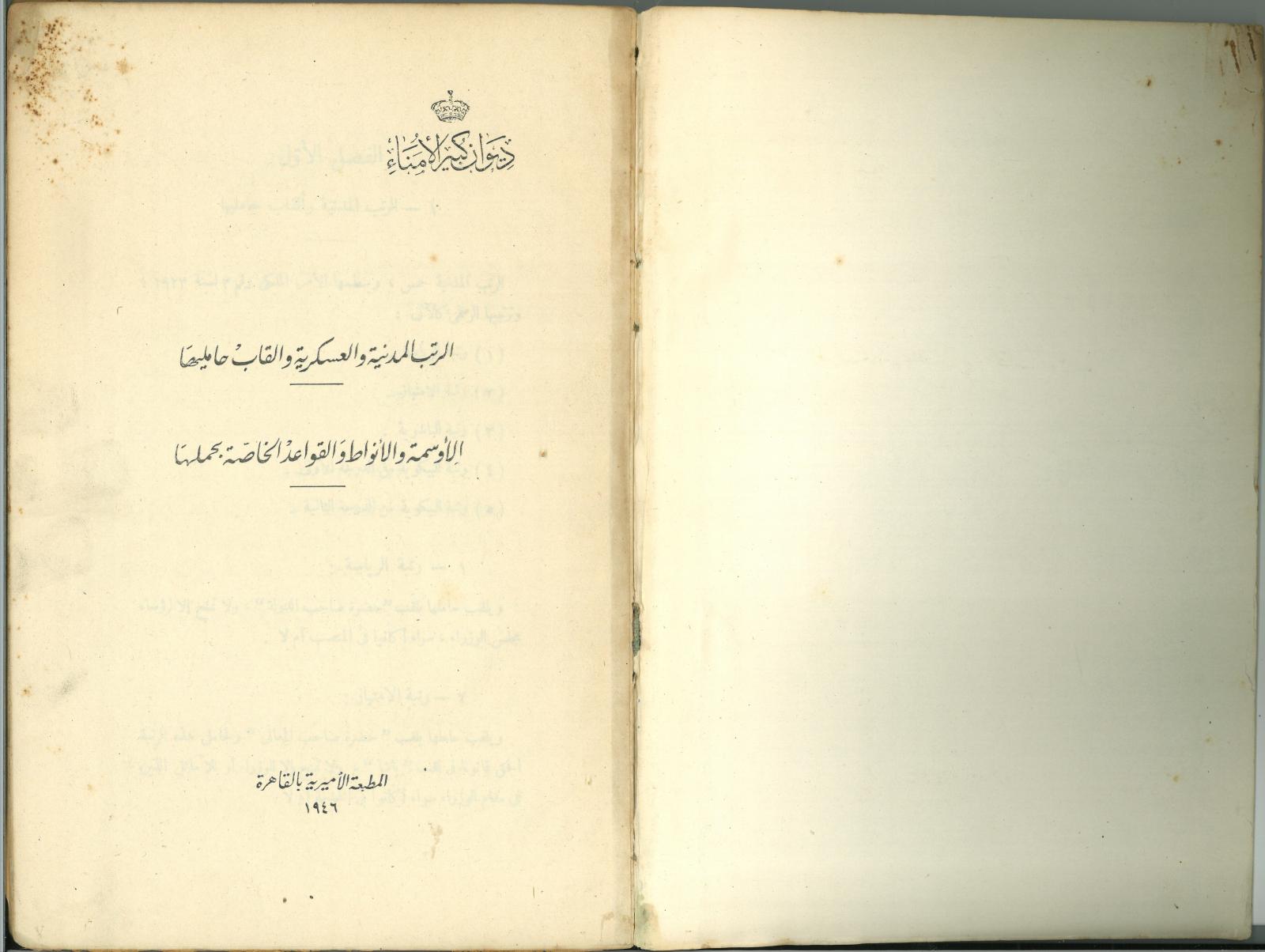
High-resolution image of the title page of the 1946 Arabic edition of the Royaume d"Egypt Protocole volume. With the complete reference I was able to find a photocopy of a 1947 English edition, titled Royal Kingdom of Egypt Orders/Medals 1919-1947 although probably Protocol is the more correct title of this English language publication. That copy identified the ISBN numbers of a few different language editions as: ISBN:0-929757-03-3 for a black & white English edition; ISBN:0-929757-02-5 for a black& white French edition; ISBN:0-929757-28-9 for a black & white Arabic edition, and ISBN:0-929757-29-7 for a color edition in English. As 922F noted, the Protocole publication was published under the authority of the Kingdom of Egypt, Grand Chamberlain to His Majesty the King (Farouk I for the 1946 and the 1946/47 editions), Abdel Latin Talaat. The photocopied 1947 English language edition I found was printed by the Government Printing Service, Cairo. The English language edition retains the French titles for each illustration.
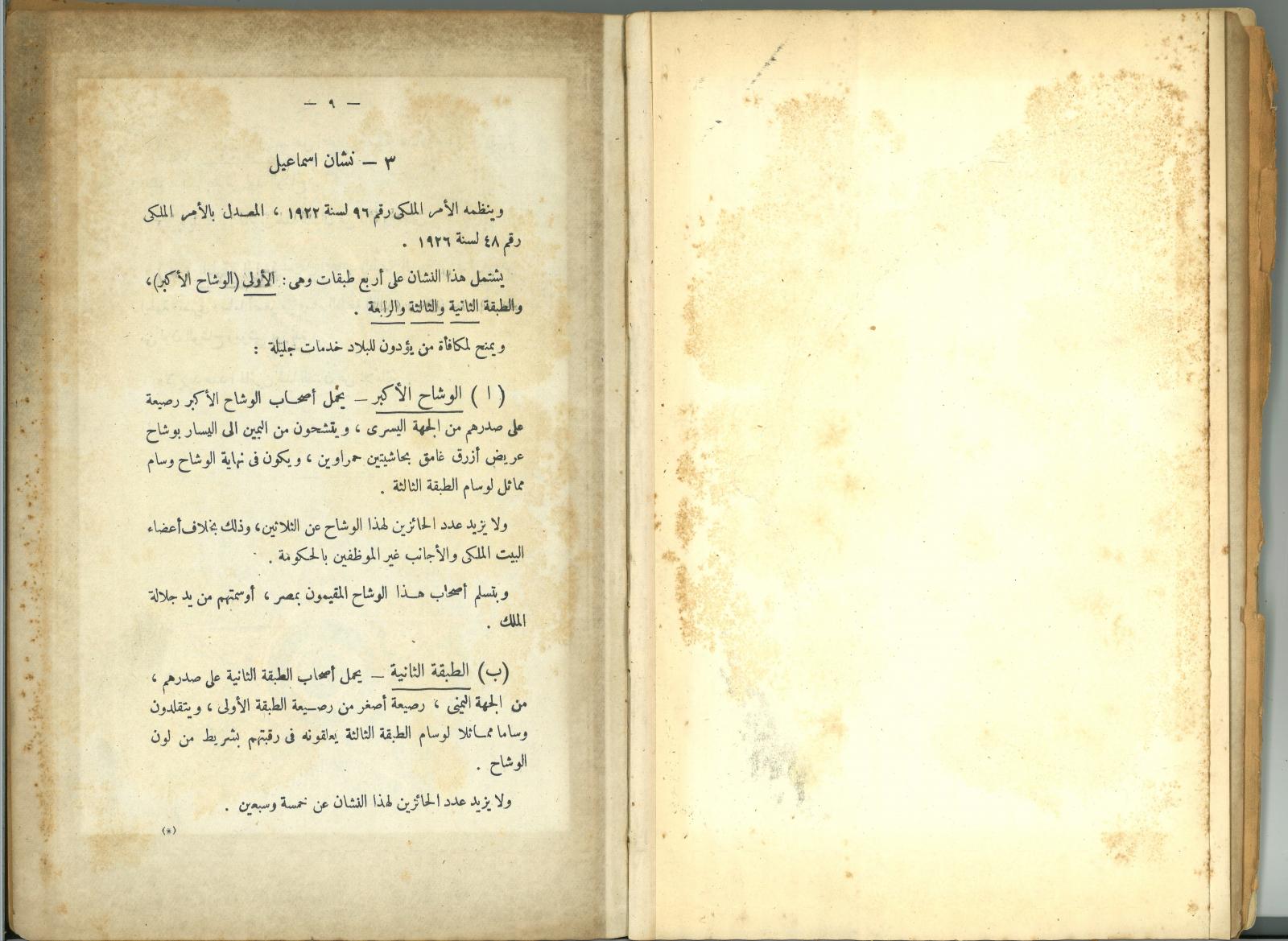
High-resolution scan of the first portion of the description of the Order of Ismail, the 3rd Order discussed and illustrated in this volume (after the Order of Muhammed Ali and the Collar of Fuad I). The translated English text (much of this has already been published by Owain in his article: Owain Raw-Rees, 2006, “King Farouk and his Awards", JOMSA, Vol 57, No. 4, pp: 15-23) from the 1947 edition for this page is:
"3. Order of Ismail
(Royal Decree 96/1922 modified by Royal Decree 48/1926).
The four classes of this order are: Grand Cordon; Grand Officer; Commander; Officer. It rewards distinguished services to the Nation.
a) Holders of the Grand Cordon wear a star on the left breast and, over the right shoulder, a broad dark-blue riband with two red stripes. A badge similar to that of the Commander is affixed to the end of this riband.
There number is limited to thirty, excluding Members of the Royal Family and foreigners outside Egyptian government service.
Recipients of he Grand Cordon resident in Egypt receive their insignia from the Hands of His Majesty the King.
b) Grand Officers wear a similar star on the right breast and a neck-badge similar to that of the Commander held in place by means of a riband in the same colours.
Their number is limited to seventy-five."
The dimensions of the Grand Cordon sash badge, the Grand Officer new badge, and the Commander neck badge all are reported across various auction listings as being roughly the same size (as noted in several post posts on this thread; variations in reported sizes appear to be due to slightly different orientation of measurements or the level of precision employed). The remainder of the textual description of the Commander and Officer Class awards are given on the following page, shown below opposite the page illustrating the Grand Cordon insignia.
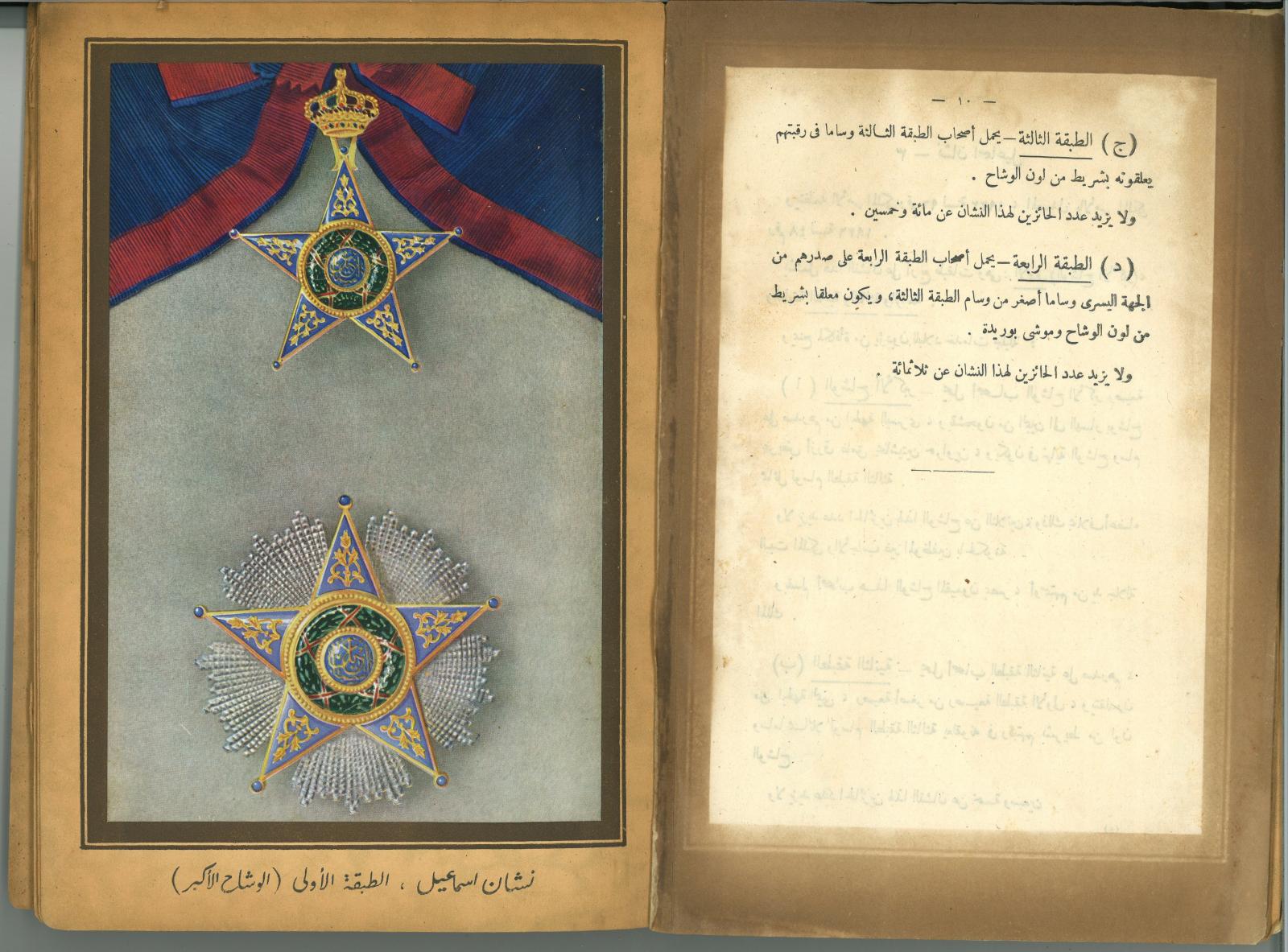
High-resolution scan of pages with the text description of the Commander and Officer Classes of the Order of Ismail and the illustration of the 1st Class Grand Cordon Order of Ismail sash with sash badge and breast star. The beautiful illustrations are printed from original watercolors, each printed on separate paper tipped into the book. They are quite accurate depictions of the insignia for the Order of Ismail, and the other awards included in the volume. The only very minor discrepancy for the Order of Ismail is that the number & placement of some of the gold laurel fruit dots in the wreath do not necessarily represent the precise number and placement as on actual Order of Ismail insignia, however even these ornamental components the wreath are mostly identical to the execution on the awards (the very slight differences may simply be due to artistic representation of the green wash of the wreath enamel obscuring a few of the fruit dots). These illustrations can all be zoomed for significantly greater detail.
The text on the right hand page describing the Commander and Officer insignia is translated in the 1947 English editions as follows:
"c) Commanders wear a neck badge held in place by means of a riband of the same colors.
Their number is limited to one hundred fifty.
d) On their left breast, Officers wear a badge smaller than that of a Commander. The badge is held in place by means of a ribbon in the same color; a rosette is mounted upon this ribbon.
Their number is limited to three hundred."
I am unsure whether the description for the Officer's breast badge is poorly translated or incorrectly states that the badge is "smaller than that of the Commander." The breast badge is not similar to the neck badge of the Commander. The Officer's insignia is a smaller form of the design used for the breast stars of the Grand Cordon (diameter =80 mm) and Grand Officer (diameter=70 mm), measuring between 54-58 mm in width, with the addition of a princely crown as part of the suspension device (the same design as employed for the miniature of all classes of the Order of Ismail, distinguished only by the forms of galon, or braid, underneath the rosette).
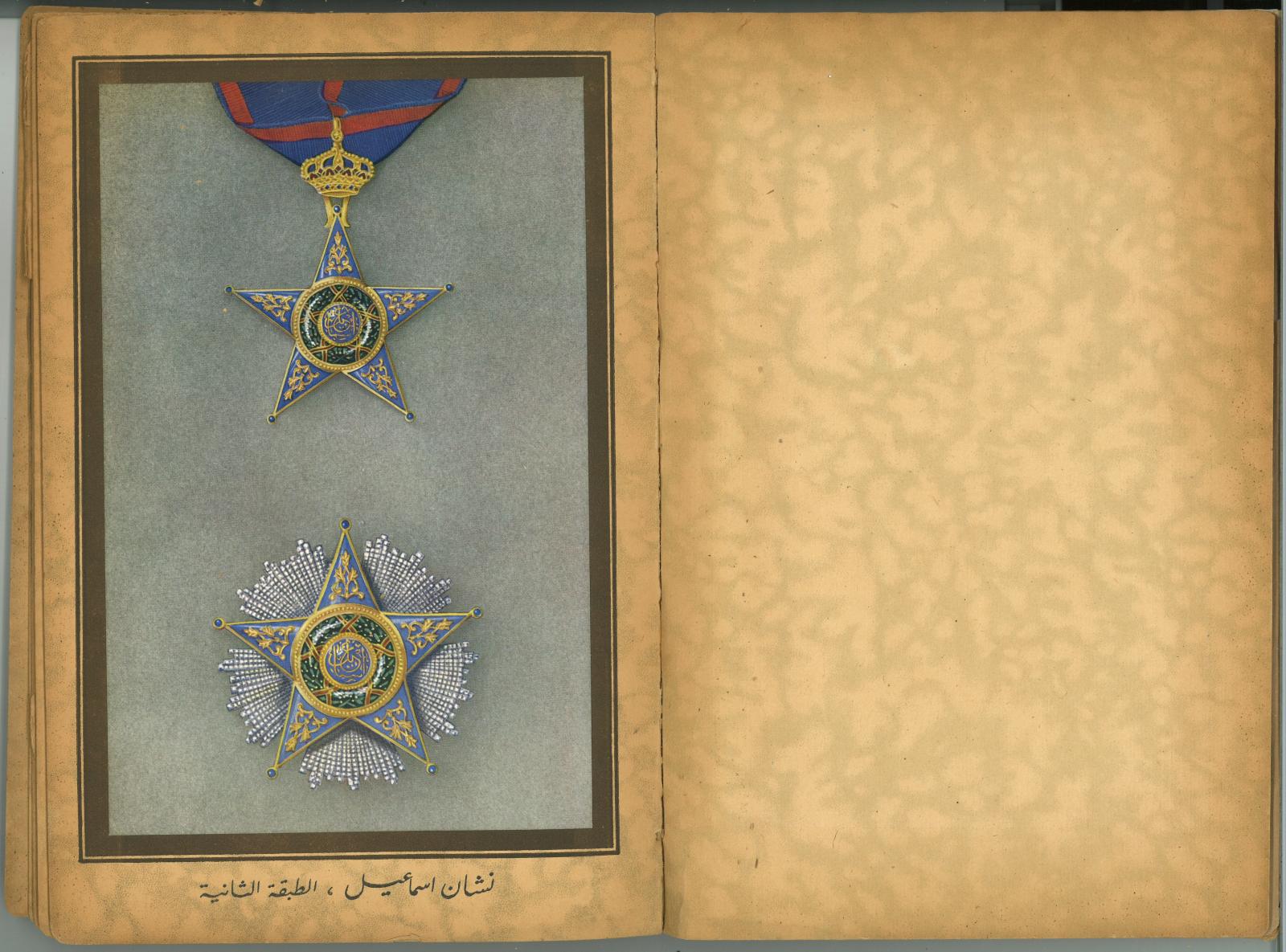
High-resolution illustration of the 2nd Class Grand Officer Order of Ismail neck badge, neck riband, and breast star.
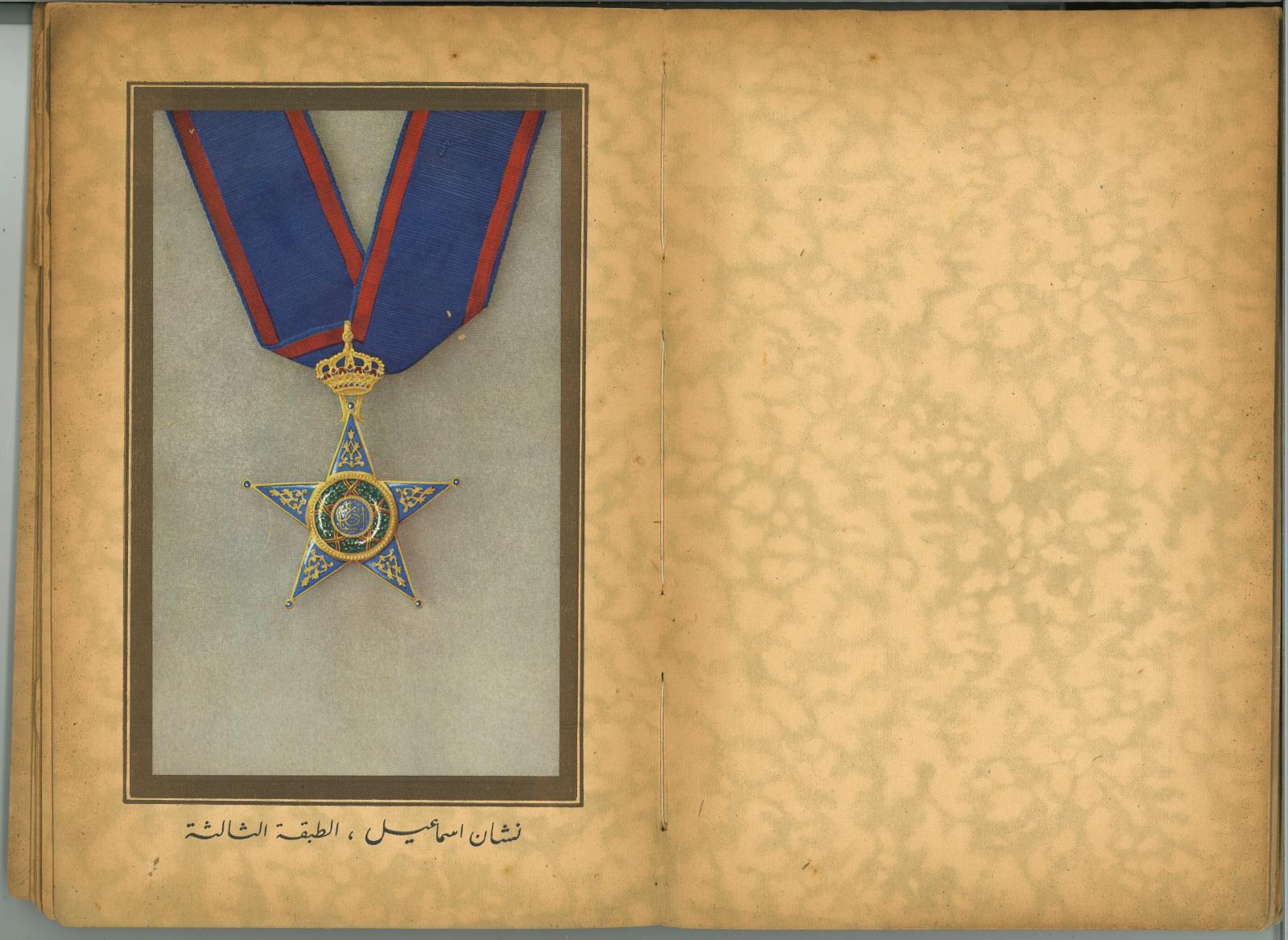
High-resolution illustration of the 3rd Class Commander Order of Ismail neck badge and riband.
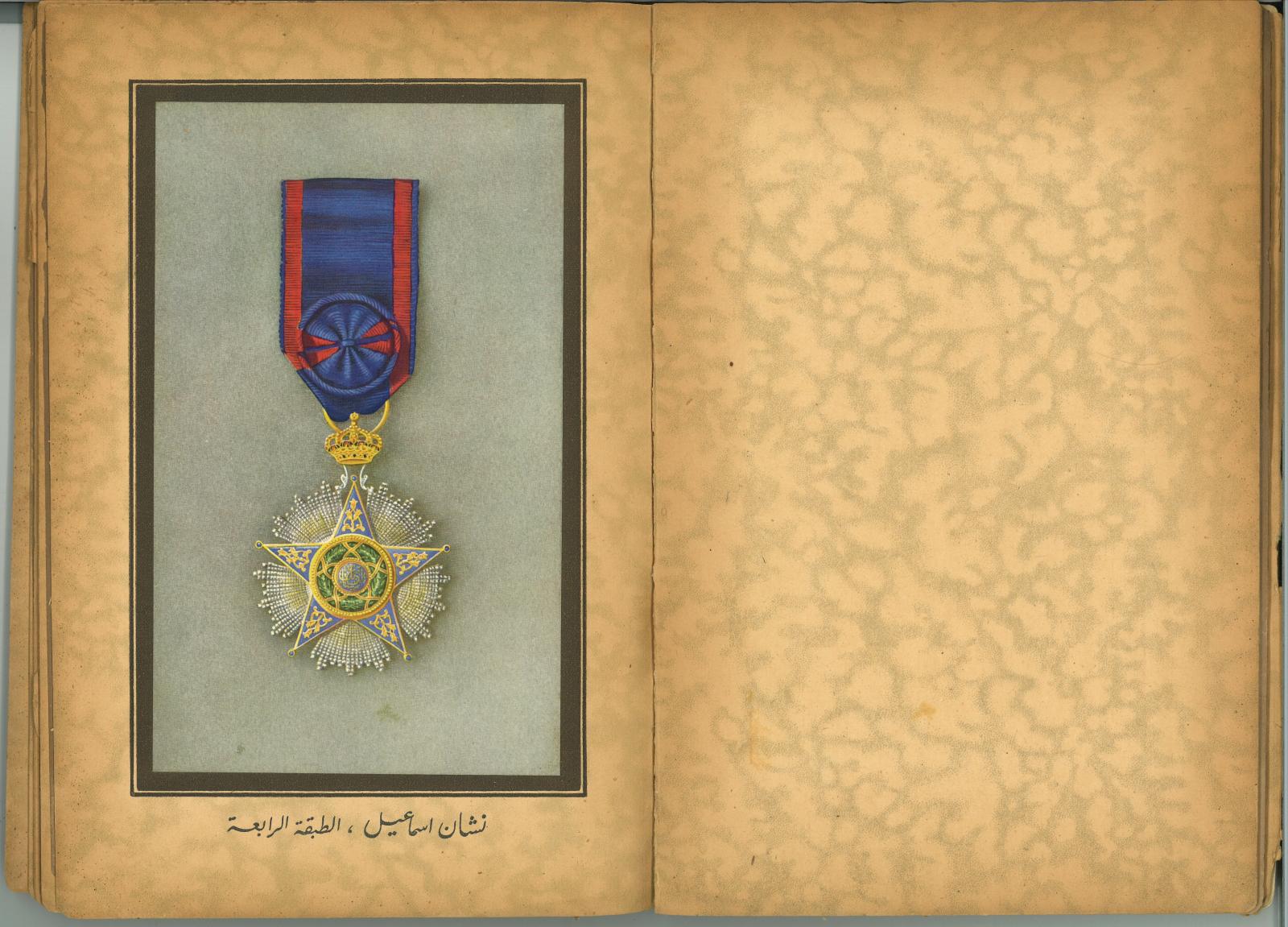
High-resolution illustration the 4th Class Officer Order of Ismail breast badge.
0 -
The photo that Igor included as the last image in his post of 7 February showing the "MAISON LATTES L. ROSEN & CIE SUCC LE CAIRE" is of interest to my continued search for additional information about J. Lattes. I have previously illustrated a couple examples of the satin labels showing the name L. Rosen associated with J. Lattes name (marked "Maison Lattes L. Rosen & Cie. Le Caire", as shown in the 14th-to-last and 9th-to-last photos of my first post of 21 October, 2019 on this thread detailing some variation in the forms of Lattes cases and labeling). Those labels were in cases for Orders of the Nile awards. All of those labels are printed in the same cursive calligraphy as the silk ribbons in the same upper left position of the upper lid interiors printed "J. Lattes Le Caire". Both of those ribbons in Order of the Nile cases also are in cases bearing King Fuad I's cider on the outer lid. As these couple of empty cases (with the L. Rosen association with J. Lattes) are not associated with any medal bearing a date hallmark, they onto provide a chronological marker of pre-1936 (King Fuad I died on 28 April, 1936) for identifying the association between Lattes and Rosen. I recently saw an example with the different script and term "L. ROSEN & CIE SUCC" on a Grand Cordon example of the Order of Muhammed Ali. That common image from a Wikipedia article (https://commons.wikimedia.org/wiki/File:The_Republic_exhibition_-_NM_Prague_65_(cropped1).jpg#/media/File:The_Republic_exhibition_-_NM_Prague_65.JPG) does not show the cipher on the outer lid nor identify any date hallmark on the award in that case to refine information about the temporal association between Rosen & Lattes.

Above is an example of one of the few satin labels showing the most common configuration of the labeling linking Maison Lattes with "L. Rosen & Cie. Le Caire". As with the "J. Lattes" labels, these are situated on the interior upper left corner of the upper lid, this example is from an empty case for a 3rd Class Commander Order of the Nile. This image comes from a current eMedals auction, Item: W5562 (https://www.emedals.com/africa/egypt/egypt-kingdom-an-order-of-the-nile-iii-class-commander-case-by-lattes-100694).
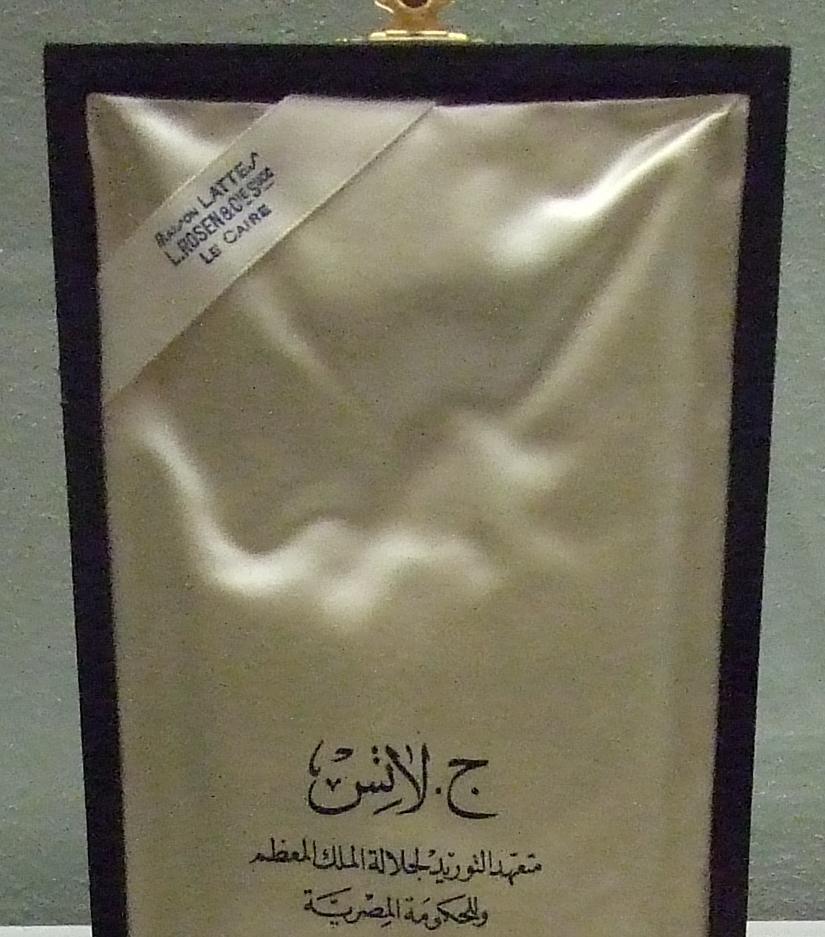
Cropped image from a Wikimedia photo of a cased example of the Grand Cordon Class of the Order of Muhammed Ali (https://commons.wikimedia.org/wiki/File:The_Republic_exhibition_-_NM_Prague_65_(cropped1).jpg#/media/File:The_Republic_exhibition_-_NM_Prague_65.JPG) showing the same form of maker's ribbon as in Igor's example of the 2nd Class Order of Ismail case above in his 7 February post. Igor's and this example are currently the only cases I have found that show labels with this script and identification of the association of L. Rosen with Maison Lattes on the interior satin case label ribbon as "MAISON LATTES L. ROSEN & CIE SUCC LE CAIRE". The SUCC abbreviation likely means successeur (successor), adding another set of wrinkles to the relationships between Tewfik Bichay, J. Lattes, and L. Rosen in the 1920s-1930s
Because so much about J. Lattes remains opaque to my research, I continue to look for any additional ways to find out about this skilled jeweler. I have included bits of information as I have encountered them throughout this thread, but J. Lattes remains an enigmatic figure. I have not uncovered much about L. Rosen to date, but recently identified one Egyptian medal attributed to this maker. The Medal of Benevolence is identified in a few auction description as having been designed or made by L. Rosen. No images of any maker's marks are seen on the obverse or reverse of these medals. Perhaps the name L. Rosen is marked on the edge of some medals, or else the name may be identified on a case associated with some of these medals? I included some of this information in a recent post on the thread "Unknown Egyptian? Medal in Lattes Case" started by JackCR on 11 June, 2020, here in the "Middle East & Arabs States" section.

High resolution images of the 2nd Class silver version of the Medal of Benevolence, from a 10 December, 2014 Auction 27, Lot 864, listing by A. H. Baldwin & Sons, archived on the NumisBids.com website (https://www.numisbids.com/n.php?p=lot&sid=936&lot=864). The auction description identifies this medal as "by L. Rosen & Co, Cairo". It is unclear if that may be from labeling of a case (a brown leather case is mentioned in the description) or on the medal, most likely it is the labelling of the case (not shown in the auction listing). L Rosen also is identified in a listing of a gold 1st Class example of this medal from a Numista website archived auction description (https://en.numista.com/catalogue/pieces104987.html). Although I have not found a listing specifically associating Rosen with a bronze 3rd Class version of this medal, almost certainly that workshop made all 3 classes of this medal. I have not yet found another Egyptian award attributed to L. Rosen, nor have I yet found any other information about the business generally. The Medal of Benevolence was instituted in 1928.
Additional information about Lattes occasionally can be found in relation to internet sources about pocketwatches. J. Lattes of Cairo had a relationship with some watchmakers in Geneva. I still do not know if the firm Lattes Frères & Cie à Genève represents a familial connection to J. Lattes in Cairo. I have previously illustrated a couple examples of watches probably made for distribution by J. Lattes in Cairo in my post of 12 November, 2019. The first watch shown in that post includes an example by Lattes Frères & Cie à Genève designed with 2-time zone displays ("made before the official adoption of time zones as we know them today"), one with Turkish numerals (2nd and 3rd photos in the 12 November post). The 13 November, 2017 auction by Christie's identifies this watch as having been made for the Turkish market. This same watch (No. 10789) also was offered on a Sotheby's auction of 10 November, 2015, Lot 154 (https://www.sothebys.com/es/auctions/ecatalogue/2014/important-watches-ge1504/lot.154.html). My 12 November, 2019 post also shows one piece of Egyptian revival art deco style jewelry in a case with a "J. Lattes Caire" labeling form unlike those on any Egyptian state awards (1st photo in that post). As with most jewelry stores at the time, Lattes also dealt in watches. As seen in the 2 examples of J. Lattes business cards (shown in my post of 24 April 2019, also in the same 12 November post discussing watches, and in higher resolution images in my post of 4 March, 2020), Lattes advertised selling watches from Geneva. There is evidence that a few manufacturers made watches for distribution specifically though the J. Lattes Cairo shop. For example, my 12 November post also illustrates a watch marked "J. LATTES LE CAIRE" that was made by Haas Neveux & Cie., a Geneva-based and award winning fine watchmaker, and that watch was apparently owned by Ahmed Ihsan Bey, a member of the royal family and a chamberlain of King Fuad I (5th photo in my 12 November post).
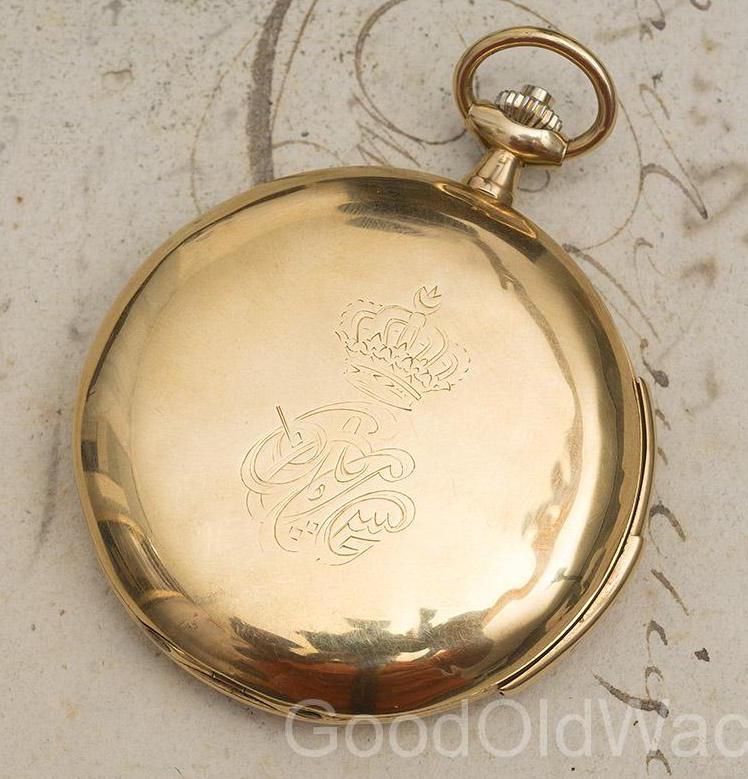
I apologize for cluttering up this thread with pictures of watches again. I am only doing this as adjunct information regarding what I have been able to find out about J. Lattes of Cairo, through connections with horological information on the internet. Above is an image of a watch bearing the cipher of King Fuad I surmounted by the Egyptian princely crown. This image comes from the Good Old Watch website (https://www.goodoldwatch.com/it123-royal-minute-repeating-watch.html) description of watch that was not offered for sale (ID: 123). The hunter case (cover over the watch face) of this watch is identified as 18 k gold and signed by J. Lattes, a "retailer in Cairo." The movement is based on LePhare 102 calibre also used by Tiffany and Cartier watches. The text description states that the dust cover (cuvette) is signed by "J. Lattes in Geneva and Cairo". The text also cites information from O. Patrizzi in "Dictionnaire des horlogers Genevois" that mentions J. Lattes "known from late XIX retailer for Egyptian market.
He was supplier to Sultan and after to the King, and awarded by Order of the Nile (Nishan al-Nil) for his services to crown." I have tried to find this reference (Osvaldo Patrizzi. 1998. Dictionnaire des horlogers genevois: la "fabrique" et les arts annexes du XVIe siècle à nos jours., Antiquorum Editions ISBN 10 2940019207), without luck thus far (one internet site turns up claiming to link to the text of this volume, but is just another web dead end of advertising). I may be able to use my access to the Harvard Library system to get an interlibrary loan of their copy of this volume. A YouTube video on the Good Old Watch website article about this timepiece (https://www.youtube.com/watch?v=HMT_c3f6LWI) shows the watch being opened and a brief view of the dust cover of the mechanism showing an upper engraving of “P. Kühling Bösel”, and below that, engraved in a different script, is “J. Lattes Geneve Caire" (same style of cursive as used on Lattes silk labels inside of Egyptian award cases). A brief glimpse of the inside of the covers of the outer case shows European not Egyptian hallmarks, including "18K" for the gold purity assay.
Low-resolution image of a watch from a 8 June, 2001 auction archived on the Antiquorum website (https://catalog.antiquorum.swiss/en/lots/lot-15-45). The watch is identified as (marked?) J. Lattes, Genève - Cairo, No. 4386, and dating to c. 1890. The description states that it is "signed on the cuvette" (inner dust cover), but does not say if that is the placement of the J. Lattes name.
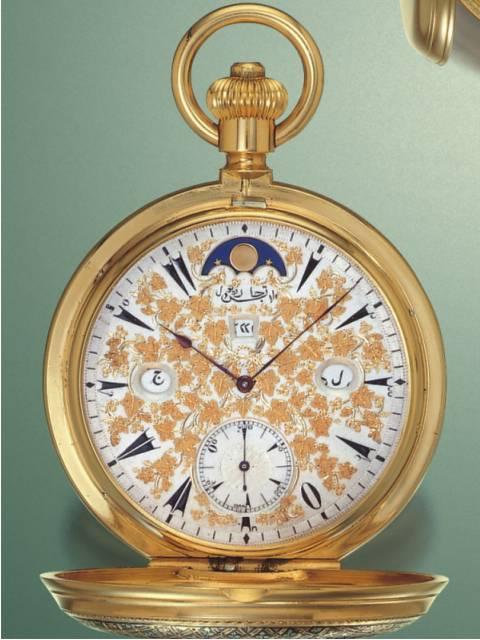
Image of a watch made for the Middle Eastern market and identified with Lattés, Gardiol & Co, Geneva and Cairo from an 11 November, 2001 auction, Lot 116, archived on the Antiquorum website (https://catalog.antiquorum.swiss/en/lots/8881). The description states that the signature of "Lattès Gardiol" is on the silver enamel dial (in Persian). The special features include "subsidiary sunk seconds also with Islamic numerals, four apertures for days, month in Islamic characters, and moon phases." No photos of the outer cases are provided, but the description states that both covers have: "applied gold crowns surmounting texts in Persian, signifying 'King' on one side and 'Mohammed Toussoun' on the other. A note also abstracts a some information from the Osvaldo Patrizzi. 1998. Dictionnaire des horlogers genevois: la "fabrique" et les arts annexes du XVIe siècle à nos jours., Antiquorum Editions volume that: "The Lattès brothers were horological merchants active about 1860-1880, who specialized in complicated watches, in particular for export for the Middle East. They were partners with an an otherwise unknown Monsieur Gardiol. A certain J. Lattès is recorded as being established in Geneva and Cairo toward the end of the 19th century. Dictionnaire des Horlogers Genevois by Osvaldo Patrizzi, Antiquorum Editions, Geneva, 1998." A lower-resolution image of the same design watch from a 20 October, 1991 auction, Lot 453, also archived on the Antiquorum website (https://catalog.antiquorum.swiss/en/lots/lot-149-453?browse_all=1&page=1&q=Lattes). It also is described as made by Lattes, Gardiol & Co., Genève, with "Turkish numerals and apertures for months, week days and date, with moon-phase and sunk subsidiary seconds."
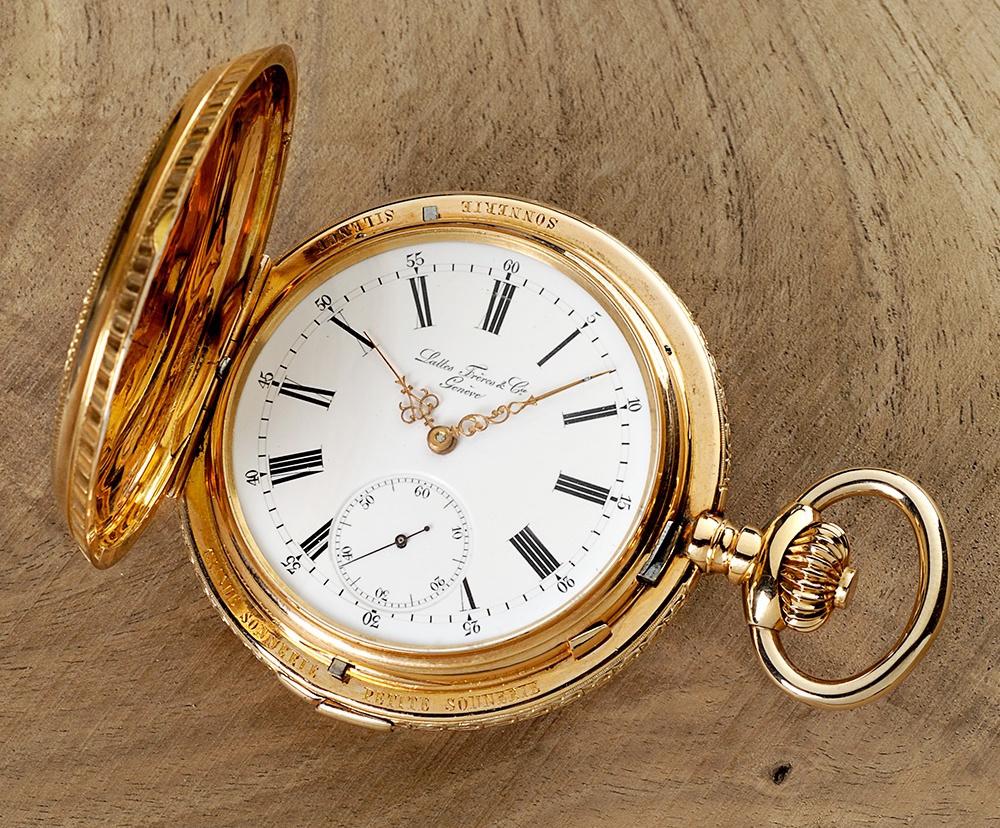
A watch made by Lattes Frères & Cie à Genève is illustrated in low resolution catalogue images as Lot 240 (Case No. 4318) of an auction of 10 May, 2014 by Dr. Crott, Mannheim I/BW (https://www.uhren-muser.de/en/documents/Crott_89_US.pdf). The auction description includes the information: "Lattes Frères & Cie. (1860 - 1880)
Lattes Frères & Cie were known for making watches with complications, automaton watches, and independant dead center-seconds watches for the Middle-Eastern market." The same watch (Case No. 4318) is archived for an undated auction (probably earlier as the listed price is lower than the 2014 Dr. Crott offering) as Lot 46. The better quality image from that listing is shown above (https://www.uhren-muser.de/en/44512/lattes-freres-cie-a-geneve-pocket-watch). The same note about Lattes Frères & Cie is included in the Lot 46 listing. The same design watch (No. 4386) also is listed from an 8 June 2001 auction, Lot 45, archived on the Antiquorum website (https://catalog.antiquorum.swiss/en/lots/lot-15-45?browse_all=1&page=1&q=Lattes).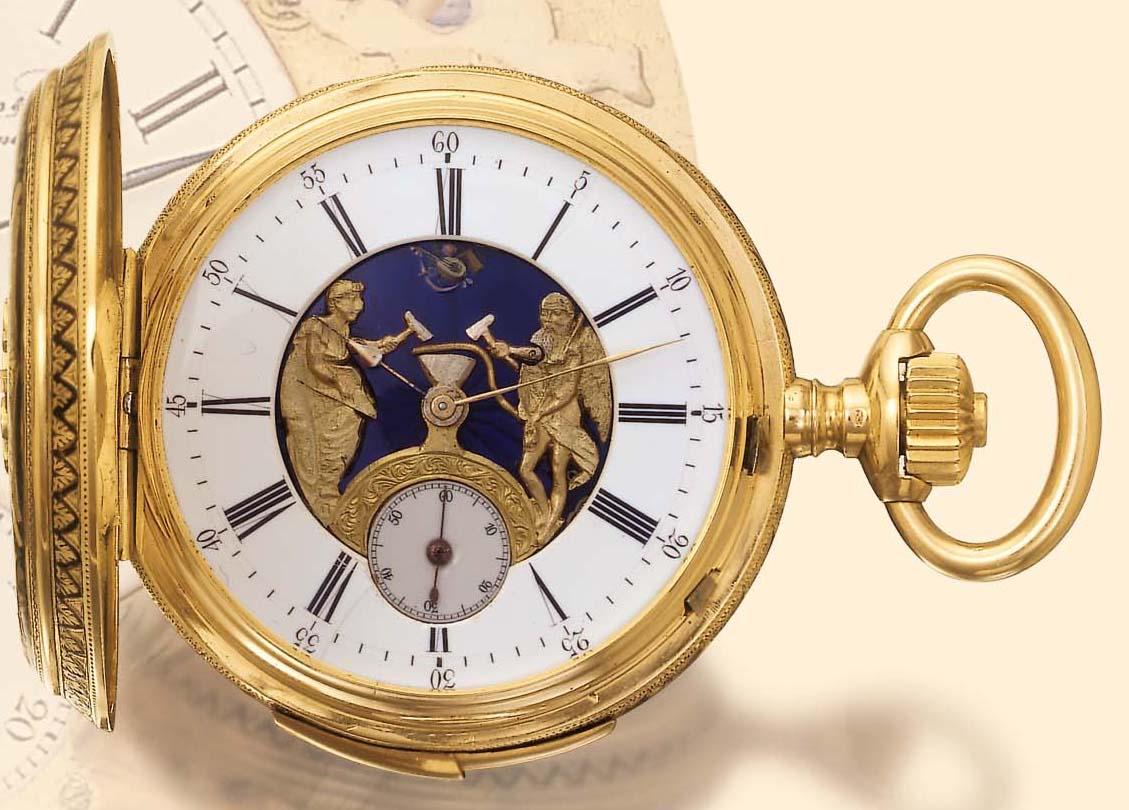
Two listings of watches made by Lattes Frères & Cie, Genève are archived on the Antiquorum website (https://catalog.antiquorum.swiss/en/lots?utf8=✓&q=Lattes) that are probably 2 examples of the same design. Lot 197 was auctioned on 2 December, 2003 (https://catalog.antiquorum.swiss/en/lots/lot-47-197?browse_all=1&page=1&q=Lattes) and Lot 356 was auctioned on 6 June, 2004 (https://catalog.antiquorum.swiss/en/lots/lot-71-356?browse_all=1&page=1&q=Lattes). The higher-resolution image of Lot 356 is shown above. Although both watches look alike (to me) and descriptions are the same, the grading and anticipated prices are different for each (Lot 356 auctioned in 2004 has a higher grading and expected price than Lot 197 auctioned in 2003). Both of these are described as "Karnak and the Valley of the Kings" watches made for the "Oriental" market. The case is described as having: "the front with a pharaoh flanked by two sphinxes and two obelisks, the back with ruins of Karnak with the Valley of the Kings in the background, bezels and band in repeated pattern" although no photos in either listing show these case designs. The face design is described as an automaton scene depicting Chronos forging his scythe (the Lot 197 description calls him "Father of Time").

Low-resolution image of watch made by Lattes Frères & Co., Genève, No 7477 again dated to c 1890. From a 14 June, 1995 auction archived on the Antiquorum website (https://catalog.antiquorum.swiss/en/lots/lot-120-182?browse_all=1&page=1&q=Lattes). The signature of Lattes Frères & Cie. is on the cuvette (not illustrated).
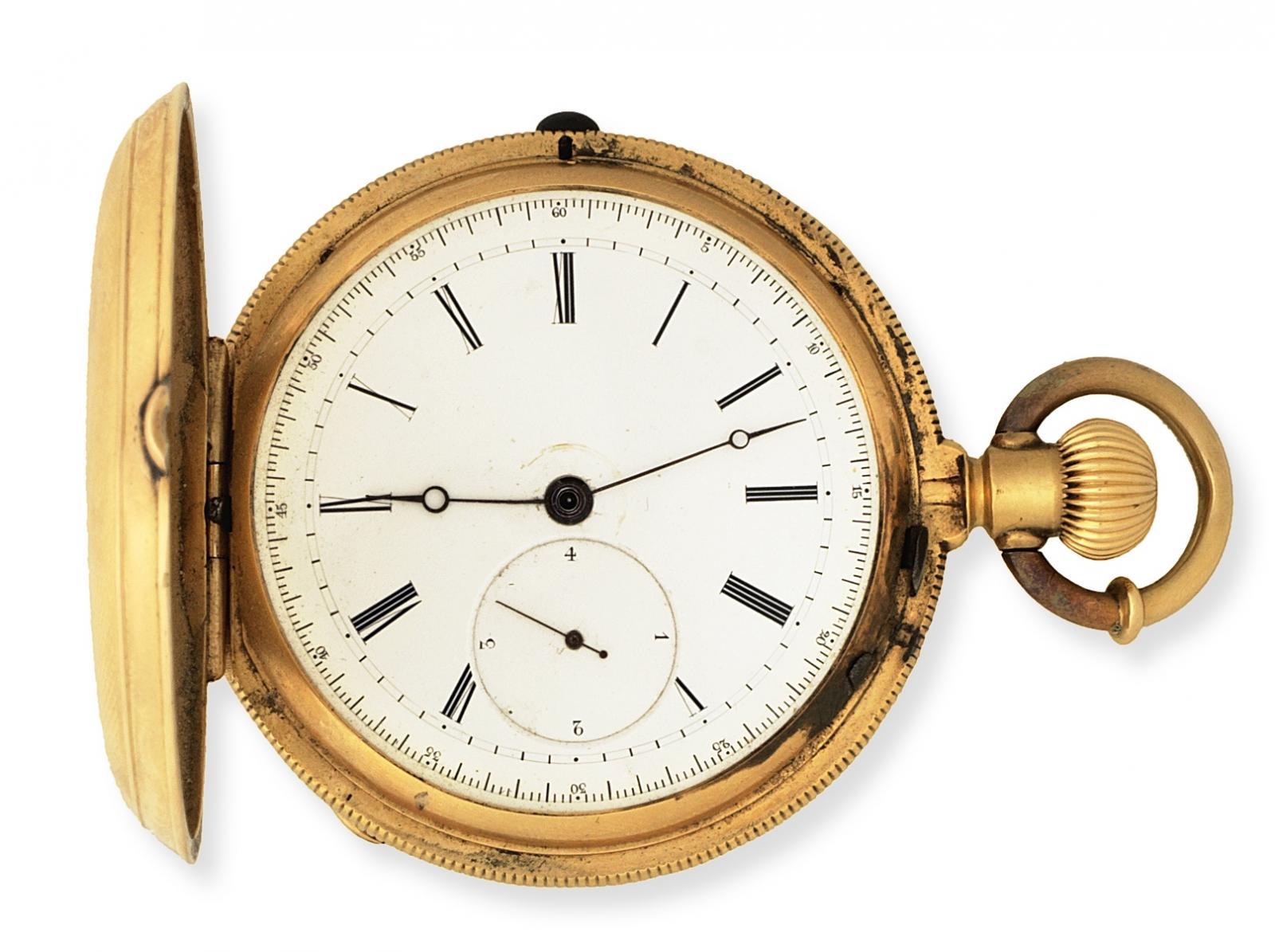
An 18k watch made by Lattès Frères & Cie à Genève, No. 4099, from a 19 November, 2019 auction, Lot 11, by Bonhams, archived on the salesroom website (https://www.the-saleroom.com/en-gb/auction-catalogues/bonhams/catalogue-id-bonham10022/lot-3a43c30a-34e1-4cb6-97b7-aaf600cc482f). The Bonhams website listing of this watch (https://www.bonhams.com/auctions/25398/lot/11/) includes a much lower resolution photo, and identifies the c. 1890 date that appears to be given for most of these watches without firm supporting documentation.

An example of an unusually designed watch attributed to J. Lattes is the above example from a 14 May, 2016 auction by Sotheby's, Lot 194 (https://www.sothebys.com/en/auctions/ecatalogue/2016/important-watches-ge1601/lot.194.html). This is identified as a yellow gold cylinder watch inside of a brooch in the form of a beetle (wings numbered 52407, movement numbered 52406), manufactured c. 1890. The name "J ATTES" can barely be seen on the white enameled dial just below the "12", but I cannot make out the word(s) below that (L' ?).

J. Lattès is mentioned on page 19 of L'Horologerie Suisse, 34e Année, 1890-1891, Genève et Canton de Aud, F. L. Davoine à Marin, Neuchâtel, available online at:https://doc.rero.ch/record/323375/files/DAVOINE_1891.pdf. His name appears as the 5th down in the column on the upper left listing of Fabrique et Commerce d'horlogerie pour tous pays ("Manufacture and trade in watchmaking for all countries"). J. Lattes (not Lattes Frères & Cie) is listed as a jeweler (Boul.). Page 17 gives the information about the abbreviations used before the names - f., n., and m. as indicating f.=manufacturer; n.=business; and m.=store), "Fazy 9" refers to the street address of the Lattès shop in Geneva, Switzerland, currently known as James-Fazy 9.
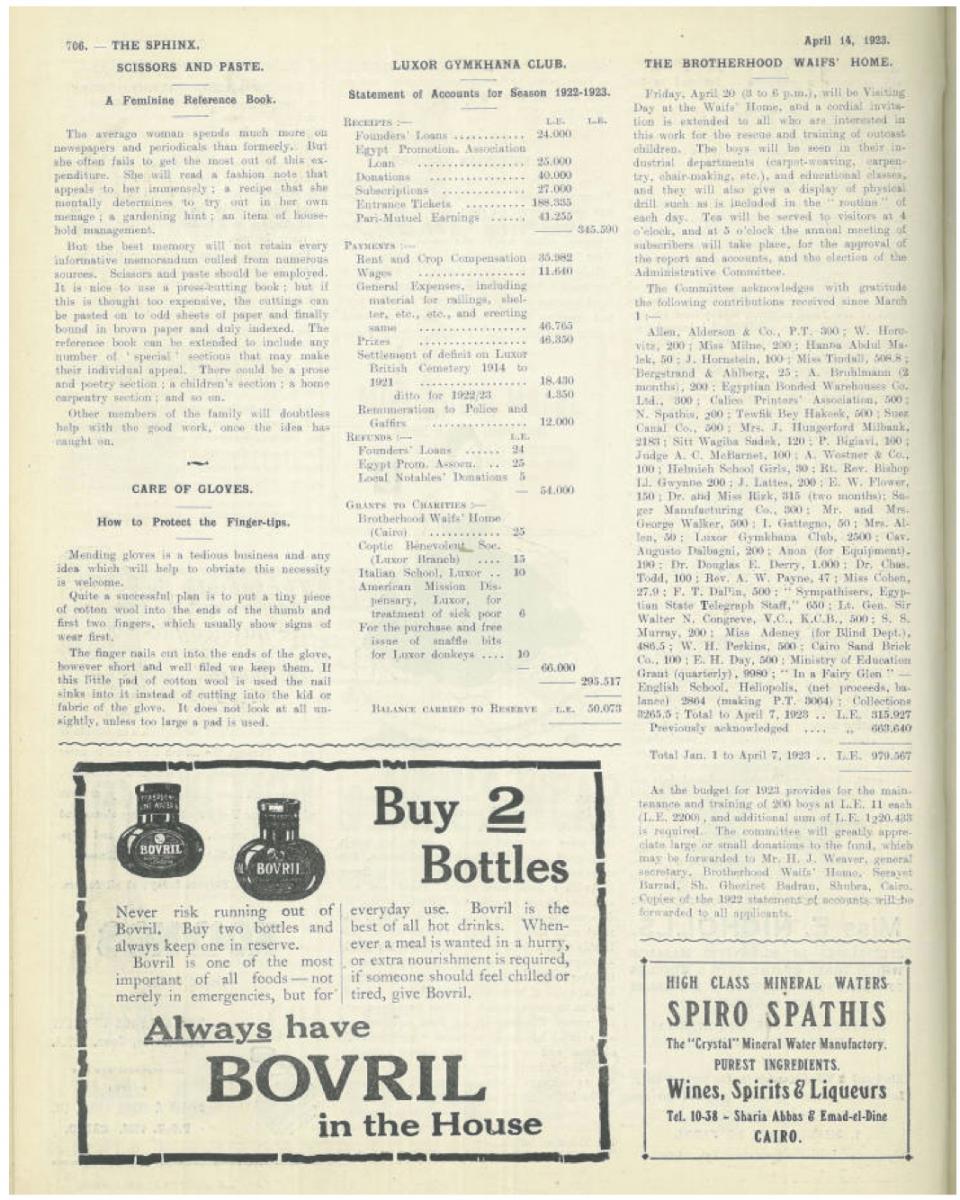
Another mention I recently identified comes from Egypt and is not associated with any of J. Lattes business connections to Geneva watchmakers. The above page documents a charitable gift by J. Lattes to an orphanage in Cairo. It comes from The Sphinx: The English Illustrated Weekly, No 506, 14April, 1923, page 706 (available online form The American University in Cairo: http://digitalcollections.aucegypt.edu/digital/collection/sphinx/id/6842/rec/7). The article in the upper right hand column "The Brotherhood Waif's Home" discusses an upcoming Visiting Day at the Waif's Home "for the rescue and training of outcast children". The second paragraph lists contributions received by the Administrative Committee toward the home's work since that March. Line 12 includes "J. Lattes 200" indicating his donation of 200 L.E. Although the image above is unclear when zoomed, the original listing in The American University in Cairo Rare Books and Special Collections Digital Library website (page 30 of this digitized document) can be zoomed for good detail.
0 -
Igor & Owain, many thanks for the photos of the case design & the good resolution photo of an example of the L. ROSEN & CIE SUCC label & cipher confirmation of Fuad I to help start a stumbling chronology of this association between Lattes & Rosen. It certainly looks as though the case is for an Order of Ismail, correct?
0 -
I was sorry to learn today of the death of Captain Sir Tom Moore on 2 February, 2020. However, he embodied a spirit of community & generosity that inspires and lives on. I had gotten together a few images to put on this thread from stories about Spink's Medal Services Department remounting his medals just before he was knighted by the Queen in the 17 July, 2020 ceremony. I would like to add those images here as a remembrance of him, and I hope this not too ham-handed a form of recognition for Spink (I do not know if they donated the work & materials, but that would seem the appropriate response). Several news articles appeared about this in June of last year, but I want to feature the images and information from Spink's website & publication. All photos except the black & white portrait from approximately 1941 are from the 5 June, 2020 article in the Spink Insider about the refurbishment of Captain Sir Tom Moore's medals ("Captain Sir Tom Moore's medals remounted by Spink", by Medal Specialist Robert Wilde-Evans [https://insider.spink.com/2020/06/05/captain-sir-tom-moores-medals-remounted-by-spink-medal-services/] and also archived on the Spink website: https://www.spink.com/media/view?id=563)
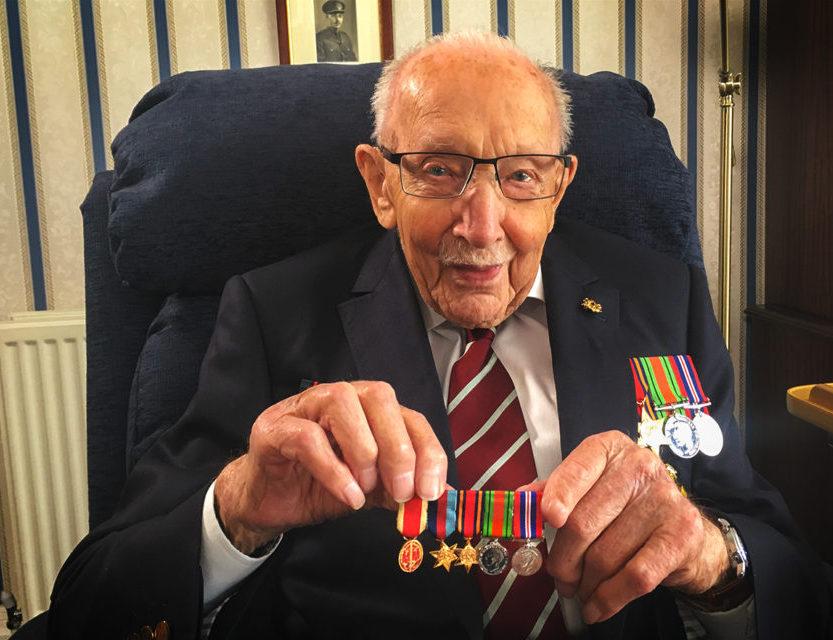
Captain Sir Tom Moore holding the miniature medals that Spink remounted for him and added the re-issued Defense Medal and the badge of Knight Bachelor (L-R; the Knight Bachelor, awarded 20 May, 2020; 1939-1945 Star; Burma Star; Defense Medal, re-issued 30 April, 2020; and the War Medal). He wears the full sized awards that Spink also remounted.

Captain Sir Tom Moore's medals as remounted by Spink, in a refurbished Court mounting. The Spink article notes that: "this style is as worn by soldiers of the Yorkshire Regiment, the present day descendants of Sir Tom’s former unit the Duke of Wellington’s Regiment."
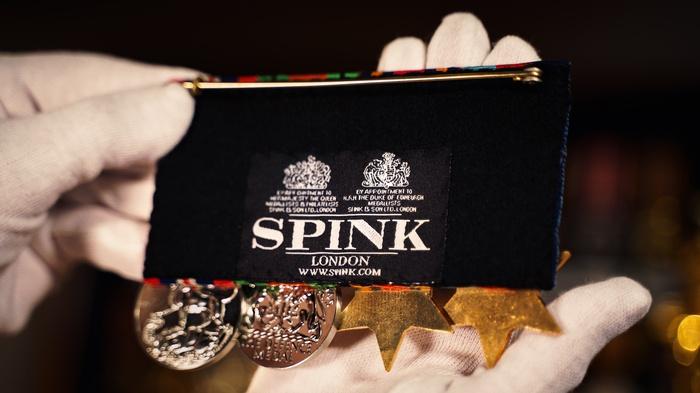
Medal Specialist Robert Wilde-Evans also noted that: "We were also asked to provide an Undress ribbon bar for occasions on which he may not wish to wear his full size group."
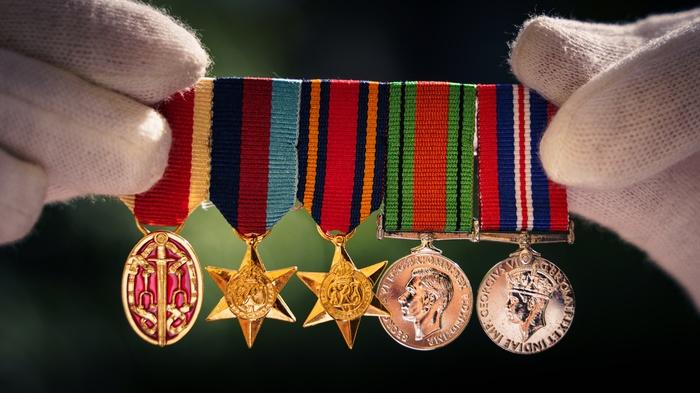
Captain Sir Tom Moore's miniature medals on the refurbished bar by Spink, including the re-issued Defense Medal between the Burma Star and the War Medal, in addition to the badge of Knight Bachelor.
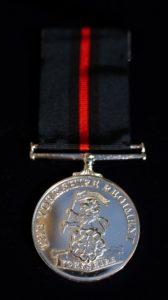
Captain Sir Tom Moore's Service Medal of the Yorkshire Regiment, awarded during the celebrations of his 100th birthday (either on 29 or 30 April, 2020). As the Secretary of State for Defense, Ben Wallace, said on that occasion: "He not only embodies the spirit of our incredible veteran community, but the resolve of this nation. During these unprecedented times he has reminded us all hardship is easier endured when we place the needs of others above our own, and approach everything with a smile".
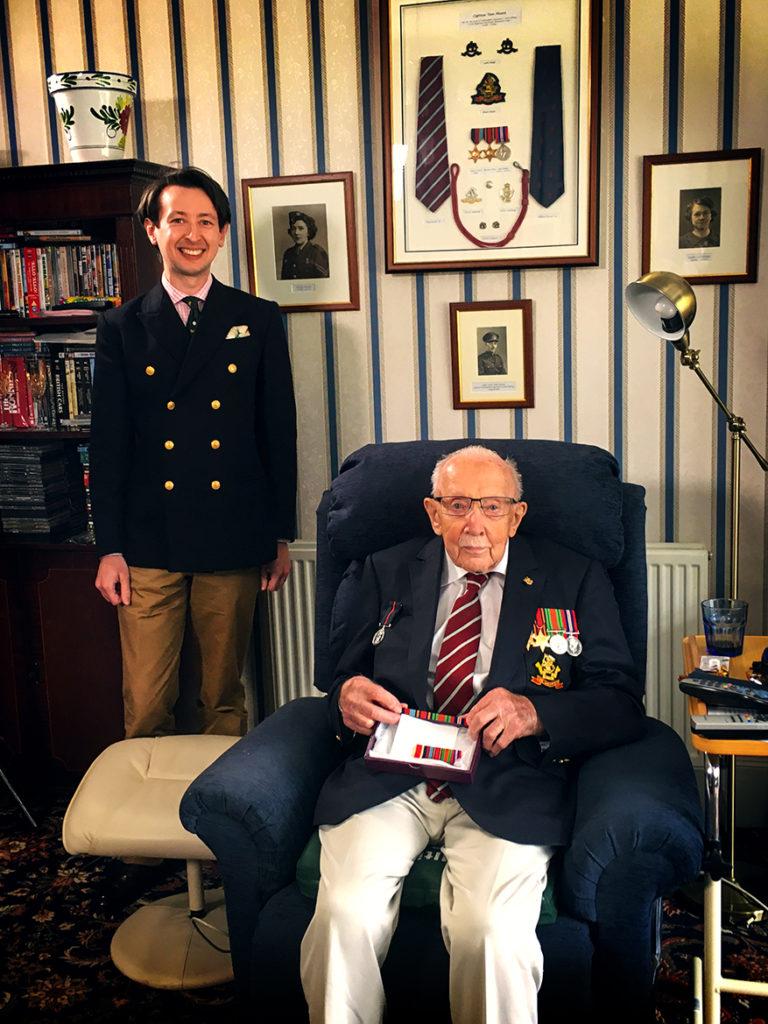
Captain Sir Tom Moore at home with Robert Wilde-Evans visiting to hand over Captain Sir Tom's refurbished medals and ribbon bar.
.jpg.fe6fc1cedc3c14e3ab579474820cd445.jpg)
Captain Sir Thomas Moore (30 April, 1920 - 2 February, 2021), as second lieutenant, approximately 1941.(https://en.wikipedia.org/wiki/Captain_Tom#/media/File:Tom_Moore_(soldier).jpg).




 0
0 -
numis,
As with the last images I posted, these are readily found on the internet. You most likely have already seen these, and I cannot vouch for the authenticity of the examples. But as you have not had any additional contributions here, I though I would check and see if I could add a few more photos here. The Arendt duplicates what you have already, but I am including what is probably the obverse of the Green medal. The other info may not fit all your research criteria, but might add a little for folks browsing on GMIC.
Rusty
Above 2 images from the National Army Museum, Royal Hospital Road, London, SW3 4HT, (Registered Charity Number: 237902). (https://collection.nam.ac.uk/detail.php?acc=1986-12-31-1+). The information associated with these photos includes: the NAM accession Number: NAM. 1986-12-31-1; and identifies the recipient: Paul Arendt. The image number of the obverse is: 88536; the image number for the reverse is: 88537. Both images are probably copyrighted by the National Army Museum. This medal to Paul Arendt is used in the wikimedia illustration of the same medal (shown below).
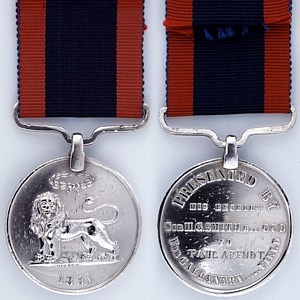
The same medal awarded to Paul Arendt, is the WikiVisually example of this medal. From: https://wikivisually.com/wiki/Sir_Harry_Smith's_Medal_for_Gallantry
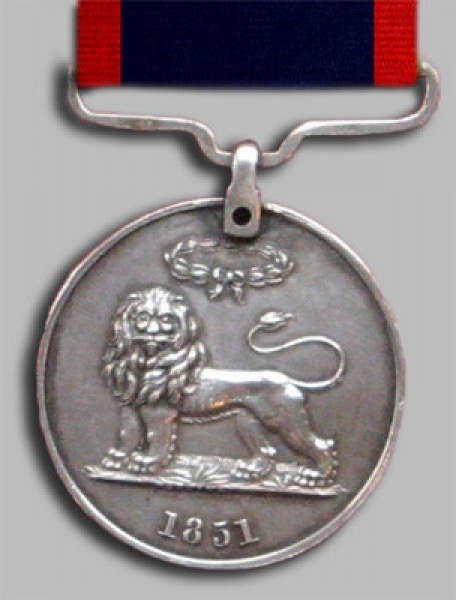
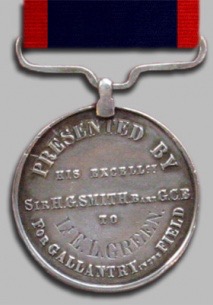
Above 2 images from: http://www.onlinemedals.co.uk/medal-encyclopaedia/pre-ww1-medals/sir-harry-smith’s-medal-gallantry
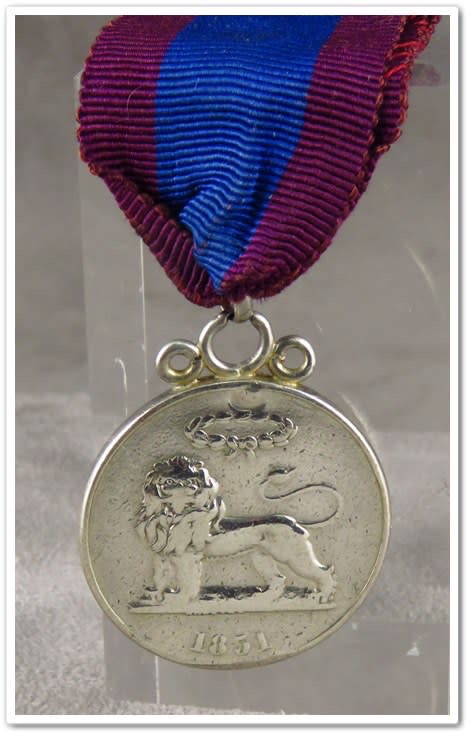
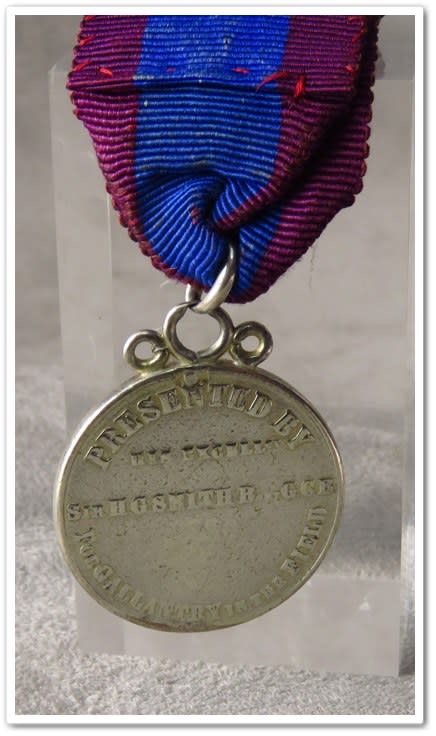
Above 2 images from a past auction by Collections Investments archived on the bidorbuy.co.za website: https://www.bidorbuy.co.za/item/433963525/_Sir_Harry_Smiths_Medal_for_Gallantry.html. The auction description states: "Original suspender was removed (still can see marks where the original suspender was fitted), & a more ornate jewellery suspender put on for wear by a woman as a pendant. The links in the suspension show heavy wear from many years of wearing & are of the style used in mid Victorian period. The pendant has been polished quite a lot over the years leading to a lot of wear to the overall medal & design. I still believe this to be an original, just modified to be worn as a pendant with much wear from cleaning/polishing."
The South African Digest, Vol 11, of September 18, 1964 has an article on page 12 about the Africana Museum in Johannesburg hoping to obtain a Sir Harry Smith Medal for Gallantry 1851 awarded to Captain Francis Skead, Port Captain of Port Elizabeth, from Mrs M. Skead of Machadodorp. The Museum was hoping that the Johannesburg City Council would purchase the medal. No photo is included in the story. From: https://books.google.com/books?id=PaUO0kM0DZ8C&pg=RA34-PA8&lpg=RA34-PA8&dq=Sir+Harry+Smith+Medal+for+Gallantry+1851&source=bl&ots=tThlN3js9x&sig=ACfU3U3OVo1eojGhMWume5raMKQIErtxzA&hl=en&sa=X&ved=2ahUKEwiz14-l4MTuAhUjGDQIHbjdAVw4FBDoATAGegQIChAC#v=onepage&q=Sir Harry Smith Medal for Gallantry 1851&f=false
An online pdf of the City of Johannesburg Africana Museum's: Military Medals of South African Interest: An Exhibition of the Collections in the Africana Museum and the South African National War Museum, Johannesburg, Augmented by Special Loans, 22 July-10 August 1957, a typed manuscript made in Johannesburg, 1957, includes the following descriptions on pp. 174-176:
2 -
Gentlemen, I wish to contribute a few images of the 3 medals discussed here, but especially my interest in the Medal of Benevolence. I have been chasing information about the mysteriously elusive J. Lattes and one of the many questions is the appearance of an association with L. Rosen of Cairo that I have encountered on a few auction site illustrations of the satin makers' label in the upper left interior corner of cases, principally on examples of the Order of the Nile (simply because they are more numerous on the auction offering as many more were awarded than other decorations). I have had minimal luck finding out about L. Rosen, but one of the few medals I have found attributed to this maker is the Medal of Benevolence.

Above is the illustration of the 3 classes of the Medal of Meritorious Acts from the 1946 Arabic language-only edition of the Royaume d'Egypte protocole.

Above is the illustration of the 3 classes of the Medal of Devotion from the 1946 Arabic language-only edition of the Royaume d'Egypte protocole.

The above illustration shows the 3 classes of the Medal of Benevolence, also from the 1946 Arabic language-only edition of the Royaume d'Egypte protocole.
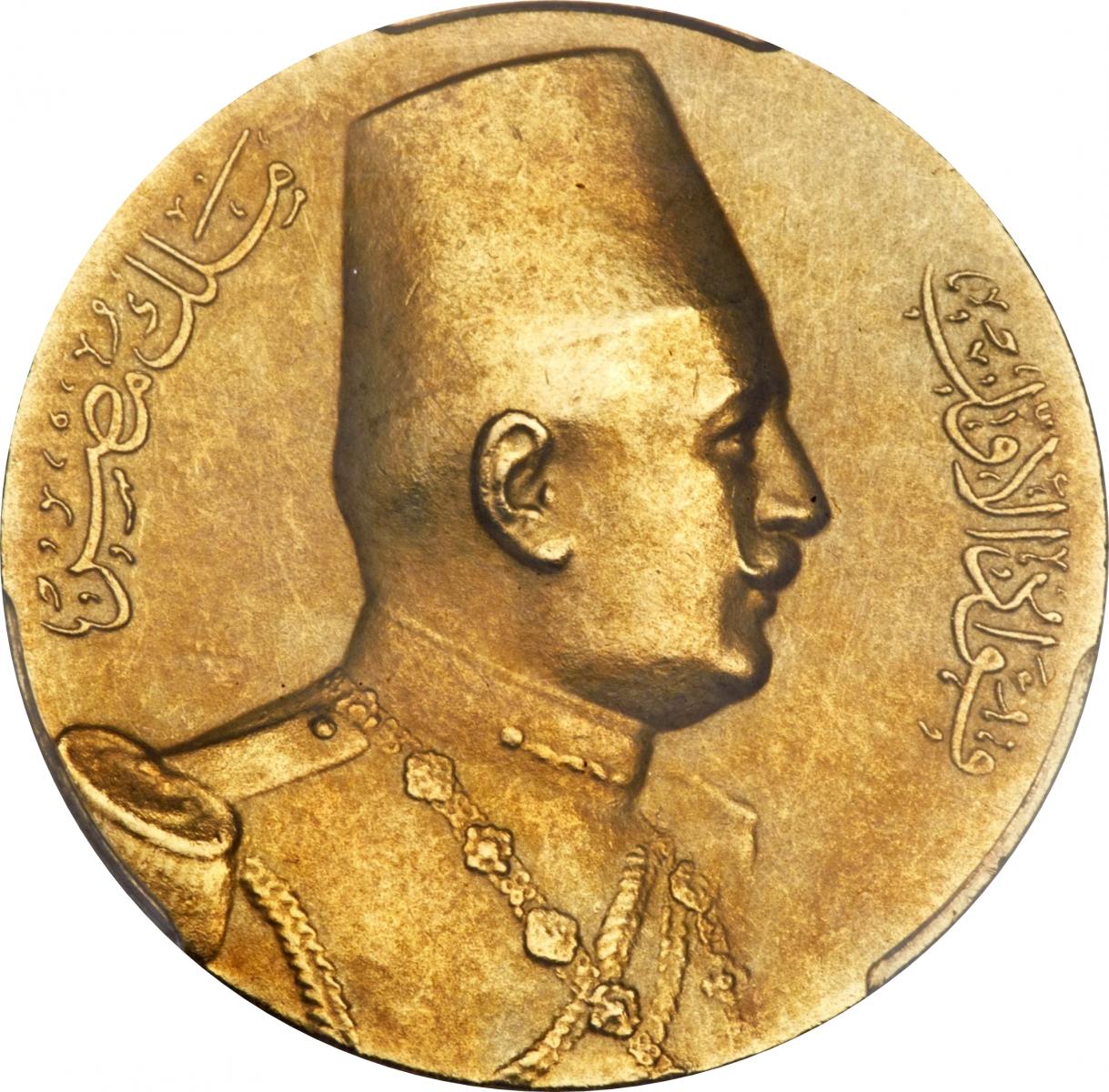
This is a high-resolution photo of the obverse of an example of the Medal of Benevolence from the Numista website (https://en.numista.com/catalogue/pieces104987.html). The description identifies this as a gold example, 1st Class, with a diameter of 30 mm and a weight of 20.8 g. The auction listing also states that this medal was made by L. Rosen, although no medallist signature is visible on either face. Perhaps there are markings on the rim of this medal? The Numista listing variously calls this a "Service Medal", "Order of Satisfaction", and a "Grace and Favour" medal ("Grace & Favour" is a name that comes from a translated English version of the Royaume d'Egypte protocole), but correctly notes the 1st Class in Gold rewards 35 years or more of service. The website identifies this image, and the image of the reverse of this medal below, as copyrighted by Heritage Auctions. The photos of both obverse & reverse appear to be cropped and show parts of some kind of coin holder, I cannot tell how the suspension wreath element could be accommodated by such a holder at the superior portion of these photos.
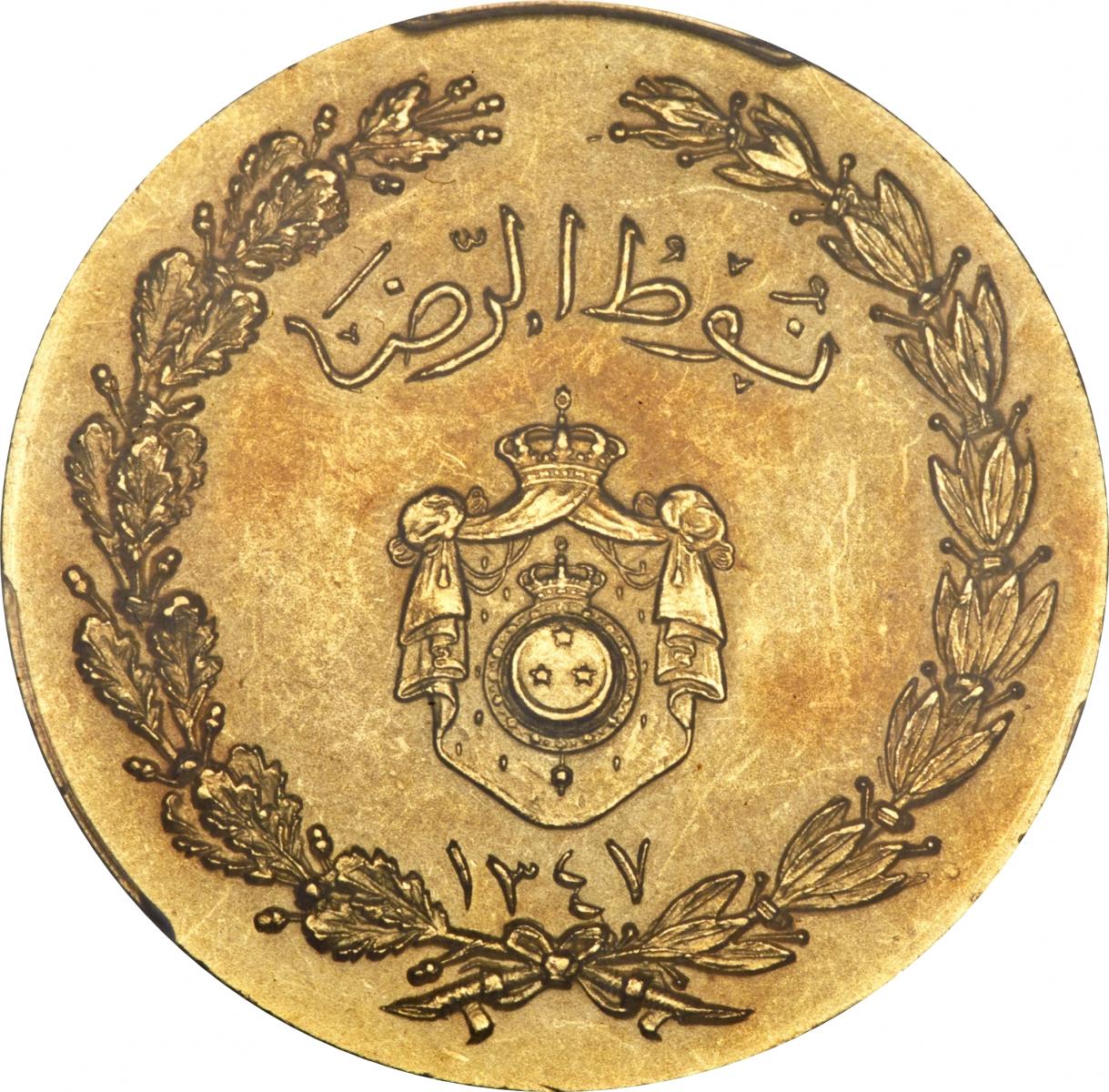
Reverse of the same 1st Class gold example of the Medal of Benevolence from the Numista website. Both faces of this example identified as gold lack the appearance of a matte finish that Jack commented on for the gold medal Owain illustrated in his 12 June post here.

2nd Class silver example of the Medal of Benevolence, for 25 years of "loyal service and good conduct of a civil nature to the King or members of the Royal Family" (as nicley summarized by the royalark.net website description of the Medal of Benevolence http://www.royalark.net/Egypt/medals.htm), from a 10 December, 2014 Auction 27, Lot 864, listing by A. H. Baldwin & Sons, archived on the NumisBids.com website (https://www.numisbids.com/n.php?p=lot&sid=936&lot=864). The auction description states that the medal was made by L. Rosen & Co. of Cairo and is 30 mm in diameter. This same medal from the same auction, and the same descitption, is also archived on the salesroom.com website https://www.the-saleroom.com/en-us/auction-catalogues/baldwins/catalogue-id-srbal10006/lot-9a4eb277-1db3-44db-bc3d-a3fe00ab1956#lotDetails). This image can be zoomed for much greater detail.

Image of the obverse and reverse of a 3rd Class bronze example of the Medal of Benevolence, for 15 years of service, from a current eBay offering (https://www.ebay.com/itm/324172983326). This listing includes several high-resolution image of this medal, but no additional descriptive information nor attribution to L. Rosen.
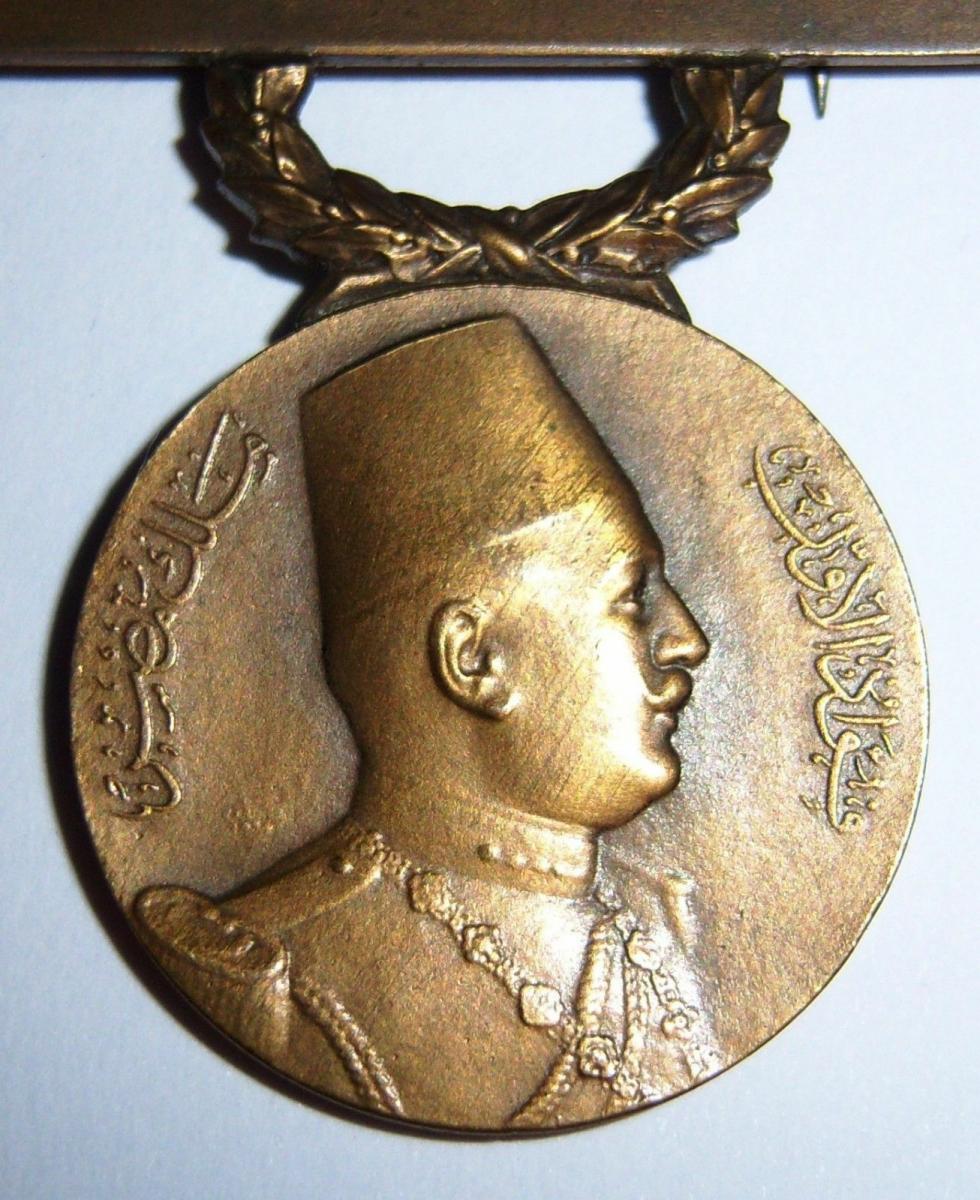
High-resolution image of of the obverse of the same current eBay offering of the 3rd Class bronze Medal of Benevolence as shown above. The bust of King Fuad I on all classes of this medal closely resembles that used on several other Fuad I commemorative medals that was originally designed in 1924 by Séraphin Emil Vernier of Paris (i.e., for the International Geographic Conference, 1925; the commemoration of his visit to Belgium in 1927; for his visit to France in 1927; and for the Inauguration of the Stadium in Alexandria in 1929). Although the L. Rosen bust appears to have copied that Vernier image, it is executed with less detailed treatment of Fuad I's hair, uniform, and the Collar of the Order of Muhammed Ali. The obverse of the 1945 Malaria Medal and the 1947 Cholera Medal feature a bust of King Fuad I that also appears to be derived from the S. E. Vernier portrait, but those designs by "Fox" are less skillfully sculpted than the L. Rosen version on the Medal of Benevolence.
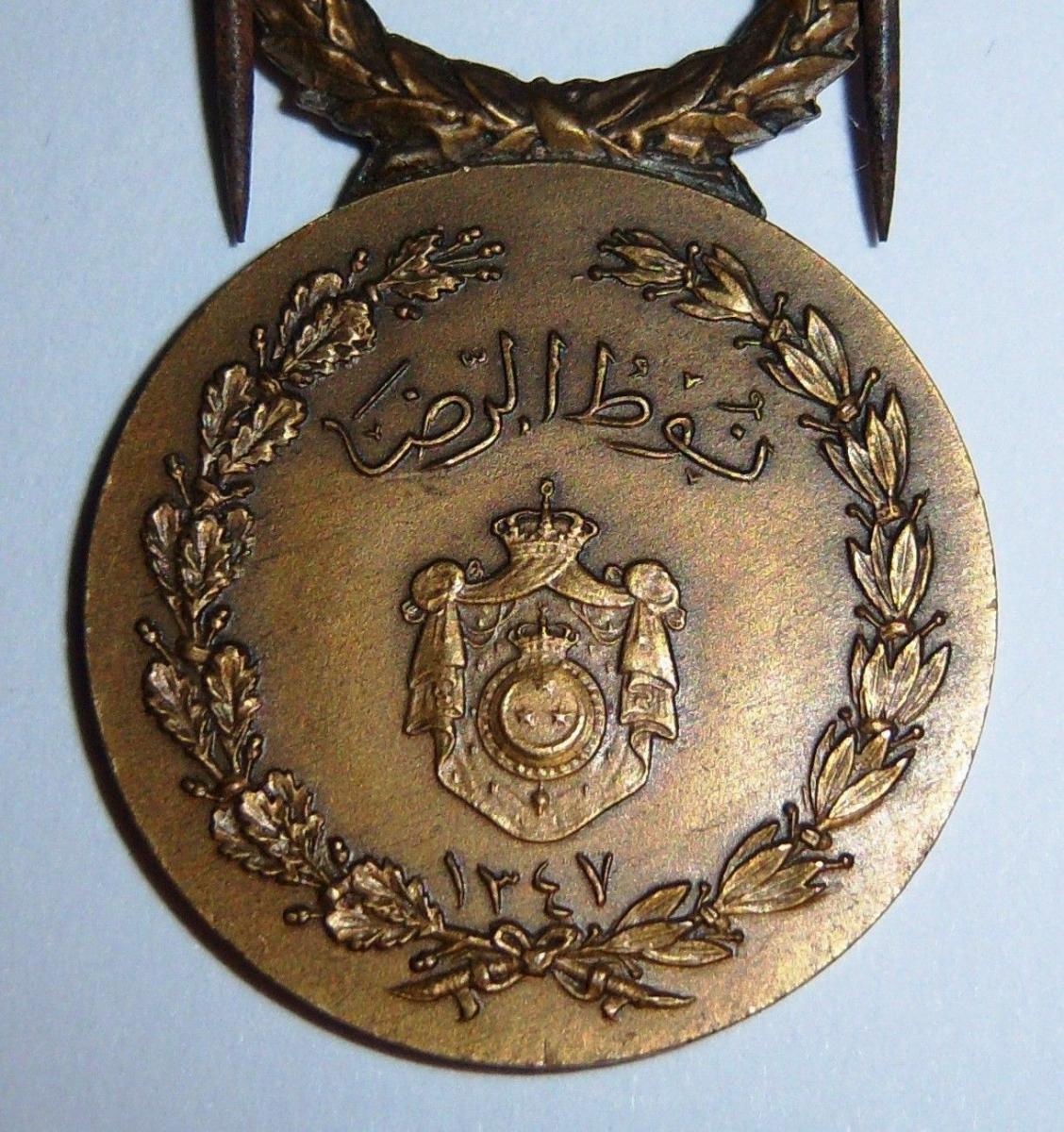
High-resolution image of the reverse of the same current eBay offering of a bronze 3rd Class Medal of Benevolence. Both this image and that of the obverse can be zoomed for greater detail (as can the photo shown both faces in the single illustration).

Again, one reason I have been interested in L. Rosen is that a few case labels identify a relationship with Maison Lattes. While L. Rosen is a business I have had poor luck finding additional information about, it is even more surprising how difficult it is to obtain more background on J. Lattes given the number of important Egyptian awards made in his workshop. The little bit I have been able to piece together has been posted willy-nilly as I get a few crumbs together as part of a thread on the "Question about the Order of Ismail/Nishan al-Ismail" started on 7 November, 2017 here in the Middle East & Arab States section. Owain also contributed information from Fahmy Tewfik Bichay on that thread indicating that his father, Tewfik Bichay, was the chief craftsman for Lattes and took over the workshop sometime in the 1930s. I have been hoping that some additional information about L. Rosen might open some doors on more information about Lattes, personally and about his business. Above is an example of one of these few satin labels on the interior upper left corner of the upper lid of an empty case for a 3rd Class Commander Order of the Nile showing the most common configuration of the labeling linking Maison Lattes with L. Rosen & Cie. le Caire. This image comes from a current eMedals auction, Item: W5562 (https://www.emedals.com/africa/egypt/egypt-kingdom-an-order-of-the-nile-iii-class-commander-case-by-lattes-100694). I am continuing to research L. Rosen, with only the recent identification of the attribution of the Egyptian Medal of Benevolence to this medallist as any progress on that front, but have no current information about the relationship with J. Lattes. Most of these labels with both names Lattes and Rosen are either empty cases or do not provide photographs or description information about any date hallmarks to try and determine the temporal period when this association can be documented. It does not currently appear that any of the other medals discussed on this thread, the Medal of Meritorious Acts (instituted in 1923) or the Medal of Devotion (instituted in 1923), are the work of L. Rosen, and the Medal of Benevolence was created a few years later than those two (by Royal Decree in 1928). The cursive calligraphic style of the label above is the same as that used by J. Lattes alone on many examples of Egyptian awards (unlike the script of the example of an Order of Muhammed Ali shown below).

Cropped image from a Wikimedia photo of a cased example of the Grand Cordon Class of the Order of Muhammed Ali (https://commons.wikimedia.org/wiki/File:The_Republic_exhibition_-_NM_Prague_65_(cropped1).jpg#/media/File:The_Republic_exhibition_-_NM_Prague_65.JPG) showing a different presentation of the L. Rosen association with Maison Lattes on the interior satin case label ribbon. This is the only example I have seen with this calligraphic script style and the identification of "L. ROSEN & CIE SUCC" in linking the Maison Lattes with L. Rosen.

Jack's example in the post initiating this thread also is of interest to me in relation to variation in the appearance of the J. Lattes labelling inside cases. I illustrated the above uncommon example (at least in comparison with most internet images for Egyptian Orders) of a form of J. Lattes name on the interior of a case for a 2nd Class silver Medal of Meritorious Acts in a discussion of Lattes labels & cases on the thread about the Order of Ismail in my post of 19 October 2019. The above image comes from a past eBay auction archived on the Worthpoint.com website (https://www.worthpoint.com/worthopedia/egypt-medal-meritorious-actions-1917-1896628816). I erroneously bungled the ID in my description on that post as a medal of "Devotion to Duty", although the auction description and photos clearly show it is a Medal of Meritorious Acts. I have seen only one other interior case labelling with this form of the Lattes name, shown in the photo below.
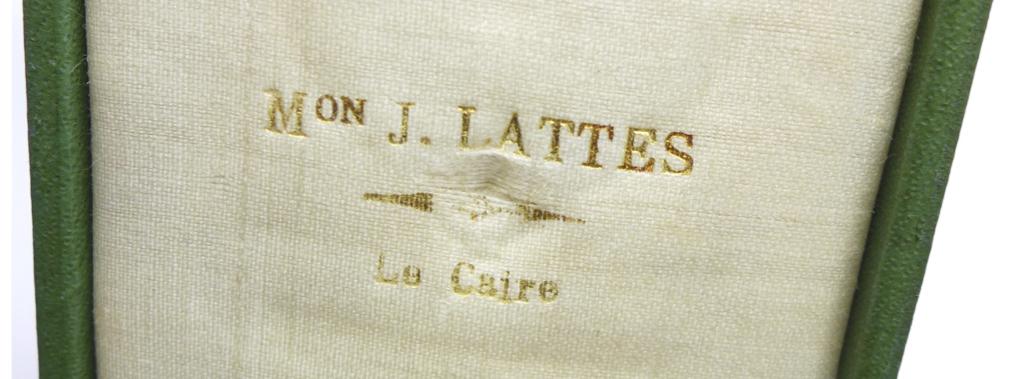
Photo of the only other example of the style of Lattes interior case labeling shown above that I have encountered so far on auction sites and other internet sources. This higher-resolution image of the "MON J. LATTES Le Caire" inscription on that lid interior comes from a 5 October 2019 auction, Lot 855, by Arthur Johnson & Sons archived on the saleroom.com website (https://www.the-saleroom.com/en-gb/auction-catalogues/arthur-johnson-and-sons-auctioneers/catalogue-id-ibart10723/lot-f891320e-5a2e-40be-b3f5-aada00f02ed1#lotDetails). Pictures of the fraying of the fabric on the hinge in that listing appear identical to the first image in this thread of Jack's example of the Medal for Meritorious Acts. Details of the medal also appear the same. I initially thought that this form of Lattes case inscription might be an early style of Lattes labelling (as it differs significantly from those on most Egyptian orders), but the dating that Owain identified as 1938 for Jack's award makes that unlikely as it overlaps with a range of the more common forms of J. Lattes labelling seen on cases for Egyptian Orders throughout the 1920s-1930s. J. Lattes markings are apparently different on some other jewelry cases of commercial work he offered out of his shop, so perhaps the labelling on medal cases also had a contrasting form compared to those for the more commonly illustrated examples of various Orders' presentation cases. Is this the labeling on your case Jack?
0 -
Thanks to the references provided by Owain & 922F, I was at last able to locate an English translation of the Royaume d'Egypte protocol (Royal Kingdom of Egypt Orders/Medals 1919-1947) with French titled figures, detailing Egyptian awards and protocol. Consulting this primary reference on Egyptian orders and medals indicated that I have often repeatedly made a mistaken identification/designation of the 4th Class Order of Ismail as the "Knight" Class of that award throughout this thread. The 4th Class of the Order of Ismail is correctly the Officer Class. While the Order of the Nile includes a 4th Class Officer breast badge with a rosette on the ribbon and a 5th Class Knight breast badge without a rosette on the ribbon, the Order of Ismail lacks a Knight Class award. Just to thematically include a visual apology for my oversights as well, I have included 2 illustrations (not of very good resolution) from the faroukmisr.net website (https://www.faroukmisr.net/orders1.htm) that are the source of one image of a 4th Class breast badge I included as the 8th photo in my post of 13 November, 2017 which came from the flickr photostream of Hassan Kamel-Kelisli-Morali (https://www.flickr.com/photos/kelisli/3052095308).
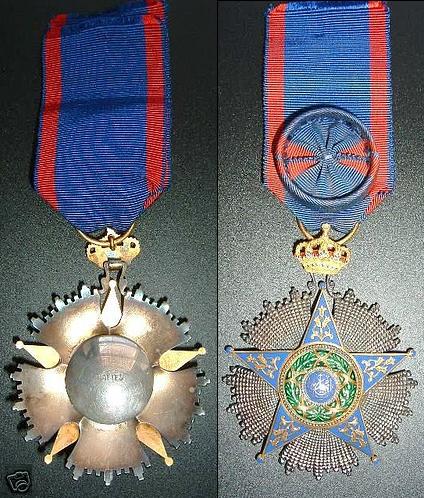
Low-resolution image from the faroukmisr.net website showing the obverse & reverse of a J. Lattes-made 4th Class Officer breast badge of the Order of Ismail (https://www.faroukmisr.net/orders.htm). The image of the obverse apoears to be a lower-resolution version of the same photo I included from Hassan Kamel-Kelisli-Morali's flickr photostream in my 13 November, 2017 post. These images probably derive from an Egyptian Museum's collection or exhibition, however that museum is not identified on the faroukmisr.net website.
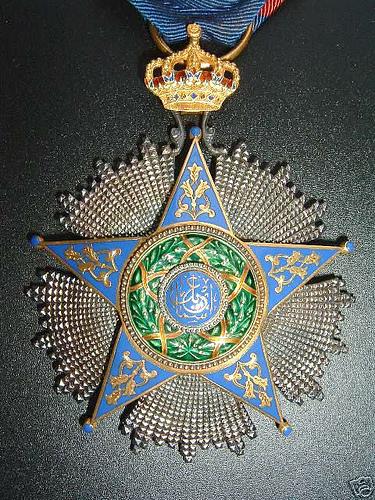
This is a close-up and only a slightly higher-resolution photo of the obverse of the 4th Class Officer breast badge of the Order of Ismail from the faroukmisr.net website (https://www.faroukmisr.net/orders.htm). The position of the camera watermark in the lower right is that same as in Hassan Kamel-Kelisli-Morali's flickr photostream photo used in my 13 November, 2017 post, but the ribbon is cropped out of this version. This photo can be zoomed for only a minor amount of additional detail of this badge's design elements. Although this is not a high-resolution image of the Officer Class of this award, as I noted in my post of 8 July, 2020 discussing design variation of the 4th Class breast badge compared with other classes of this medial, this class is much less well illustrated across auction sites and other internet sources than the other 3 classes of the Order of Ismail. This photo also shows the thinner gold margins of the crossed bands with red enamel around the wreath element compared with the execution on the other classes of the Order of Ismail (probably due to its smaller size than the insignia of the other classes), as I noted in my 8 July 2020 post about the design and workmanship seen on examples of the Officer beast badge of this Order.
0 -
I have 2 pretty good photos of an example of this Abbas Hilmi II 1909 commemorative medal to illustrate here.
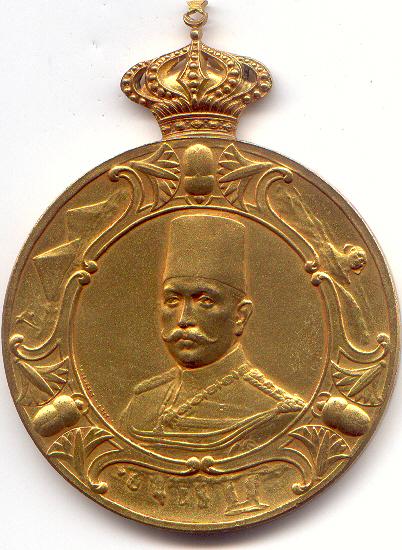
Moderate-resolution image of the obverse of an Abbas Hilmi II medal commemorating the anniversary of his coronation and return from Hegaz. This illustration, and the one below of the reverse of this same example, is from the flickr photostream of Hassan Kamel Kelisi-Morali (https://www.flickr.com/photos/kelisli/3048892065/in/photostream/) and is copyrighted by Hassan Kamel Kelisi-Morali. The image, and that below of the reverse, are credited on Kamel Kelisi-Morali's flickr site to Mrs. Catherine Bichay, the eldest daughter of Fahmy Tewfik Bichay. This medal shows a very fine condition, comparable to that shown from the Alexandria Library in my post on this thread of 23 August, 2017. The flickr image cuts off the superior-most portion of the star above the crescent. That aspect of the photo (the truncated star), part of the visible background on the viewer's lower right side to lower middle, the background to the right and left side of the princely crown, and a possible scratch below the portion of the chain of the Collar of Hanedani (see https://gmic.co.uk/topic/74377-question-about-the-collar-of-hanedan/) on the viewer's right, all suggest this is almost certainly a slightly better-resolution version of that same photo of this medal from the Alexandria Museum collections page (http://modernegypt.bibalex.org/Collections/Medals/MedalsLucene.aspx).
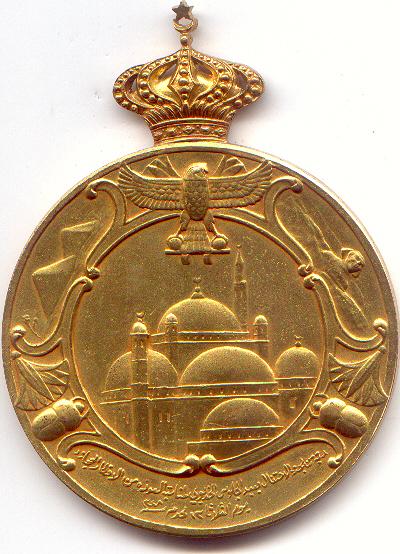
Moderate-resolution photo of the reverse of the same Abbas Hilmi II commemorative medal from the flickr photostream of Hassan Kamel Kelisi-Morali (https://www.flickr.com/photos/kelisli/3049734010/in/photostream/) and also copyrighted by him. Although I saw this image several years ago, I have not posted it before because I was uncertain whether this was an example that the Bichay family obtained because of Fahmy Tewfik Bichay's father's (Tewfik Bichay) work as a medallist in Cairo at the time or if it is only a photo the family has in their possession. My delayed comparison with the Alexandria Library image now makes me fairly certain that this is a better-resolution version of that same photo from their collection.
0 -
I recently stumbled on the moderately low-resolution images of an example of the Abbas Hilmi II medal commemorating the anniversary of his coronation and return from Hegaz in my older computer files that I initially mentioned at the end of my post of 25 March, 2017. I first encountered this example in an eBay listing, that included only a very low-resolution thumbnail image of the medal. I noted that I had found the listing and low resolution images of the medal archived on the WorthPoint.com website at the end of my post of 9 December, 2017, but did not include that image as it does not provide as much detail about the design as other images I had found on the internet, or the photo I took on 14 October, 2016 of the Crabités example through the glass of its mounting. I noted in the 9 December post that the seller stated little knowledge about the medal and that it sold for $US 76 (most auction prices available for this medal fall within the $600-700 range, with a couple reported sales up to ~$4,000) I wish to illustrate it here as another example that appeared in an auction sale. The other point I want to raise here is something that I have inexplicably ignored, this bronze medal is gilt and that is why it appears gold in color rather than bronze.
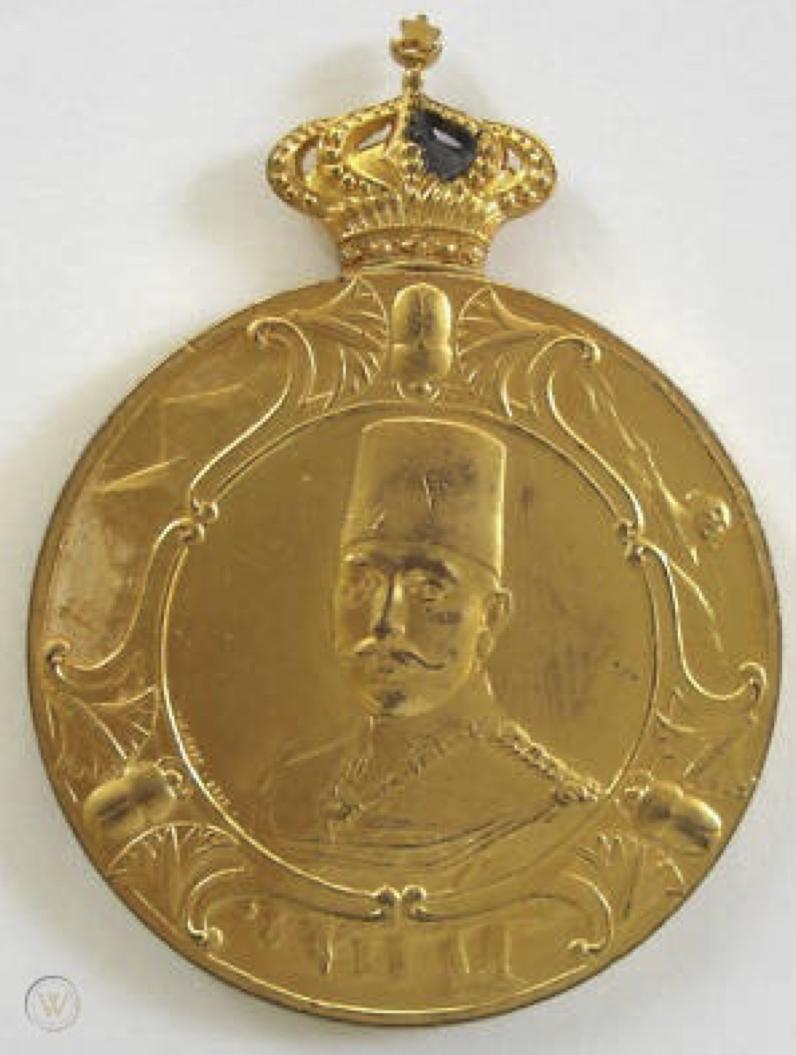 Low-resolution image of the obverse the Abbas Hilmi II commemorative medal sold on a 10 July, 2010 eBay auction and archived on the WorthPoint.com website (https://www.worthpoint.com/worthopedia/egypt-gilded-bronze-medal-b29-115277729). The description identifies the diameter as 66 mm (across the lateral margins and not including the princely crown?), a thickness of 4 mm, and a weight of 118 g. The archived listing states that the word "BRONZE" is engraved on the edge of the medal. I noted in my 9 December, 2017 post that that the description had correctly identified the "MASSONET . EDIT" medallists mark to the left of the obverse portrait of Khedive Abbas Hilm II, and that this was "a famous 19th century French engraver". Obviously, I forgot about that and since I could not find the posting again I spent November 2017 trying to determine what that inscription was. Another point that description raises is that it says the medal is gilt ("gilded"). All listings of this medal identify it as bronze, but the medal always appears gold in photographs. I have not addressed this question before. The veryimportantlot.com example I illustrated in my post of 2 October, 2018 also states that the medal is gilt bronze. The photo shows the significant corrosion of the crown on this example, wear to highpoints of the relief (especially the nose, brows, chin , mustaches, & cheeks of the Abbas Hilmi II portrait, parts of the tarbush, some of the scrollwork and scarabs), probably some deep scratches on the Khedive's tarbush, and possibly discoloration of the flat background to the viewer's right of the Abbas Hilmi II portrait bust. The star on top of the crescent at the superior margin of the princely crown appears to be bent toward the right and backwards.
Low-resolution image of the obverse the Abbas Hilmi II commemorative medal sold on a 10 July, 2010 eBay auction and archived on the WorthPoint.com website (https://www.worthpoint.com/worthopedia/egypt-gilded-bronze-medal-b29-115277729). The description identifies the diameter as 66 mm (across the lateral margins and not including the princely crown?), a thickness of 4 mm, and a weight of 118 g. The archived listing states that the word "BRONZE" is engraved on the edge of the medal. I noted in my 9 December, 2017 post that that the description had correctly identified the "MASSONET . EDIT" medallists mark to the left of the obverse portrait of Khedive Abbas Hilm II, and that this was "a famous 19th century French engraver". Obviously, I forgot about that and since I could not find the posting again I spent November 2017 trying to determine what that inscription was. Another point that description raises is that it says the medal is gilt ("gilded"). All listings of this medal identify it as bronze, but the medal always appears gold in photographs. I have not addressed this question before. The veryimportantlot.com example I illustrated in my post of 2 October, 2018 also states that the medal is gilt bronze. The photo shows the significant corrosion of the crown on this example, wear to highpoints of the relief (especially the nose, brows, chin , mustaches, & cheeks of the Abbas Hilmi II portrait, parts of the tarbush, some of the scrollwork and scarabs), probably some deep scratches on the Khedive's tarbush, and possibly discoloration of the flat background to the viewer's right of the Abbas Hilmi II portrait bust. The star on top of the crescent at the superior margin of the princely crown appears to be bent toward the right and backwards.
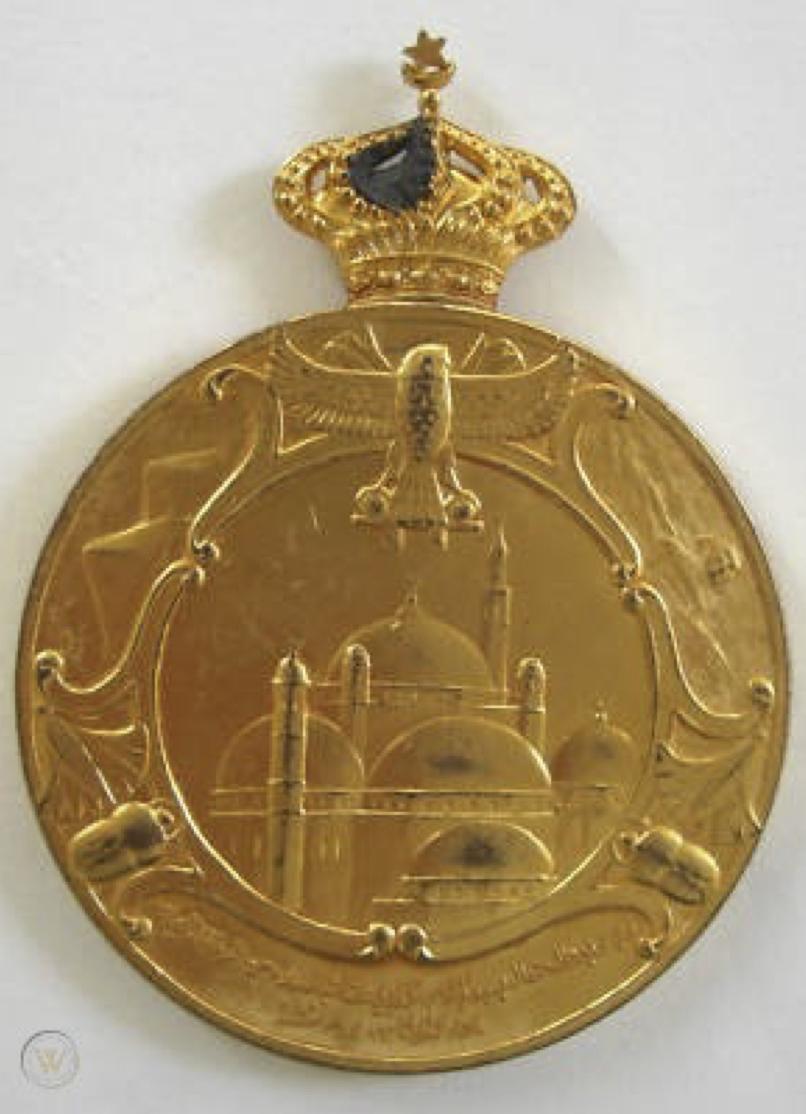
Reverse of the same Abbas Hilmi II medal from the 2010 eBay listing archived not ehe WorthPoint.com website. This shows were to some of the same highpoints as seen on the eBay example I illustrated in my post of 22 July, 2018, and the photos of the the Dix Noonan Webb example I illustrated in my post of that I think is the same medal as the July 2018 eBay offering. The reverse also shows the same extensive corrosion in the crown, appears to have a nick to the left of the Horus Falcon (at the superior portion of the medal design) image's feet, and has additional areas of wear on other high relief areas of the design (especially the body of Horus, the falcon's most distal tail, the sun symbols held in the Horus falcon's feet, the scarabs, and highpoint on the scrollwork). The star on top of the crescent at the superior margin of the princely crown also appears bent to the left in this photo.
0 -
I have several miscellaneous contributions about the Egyptian Indigenous Courts and the commemorative medal for the closing of the Egyptian Mixed Courts in 1949 to add to this thread today.
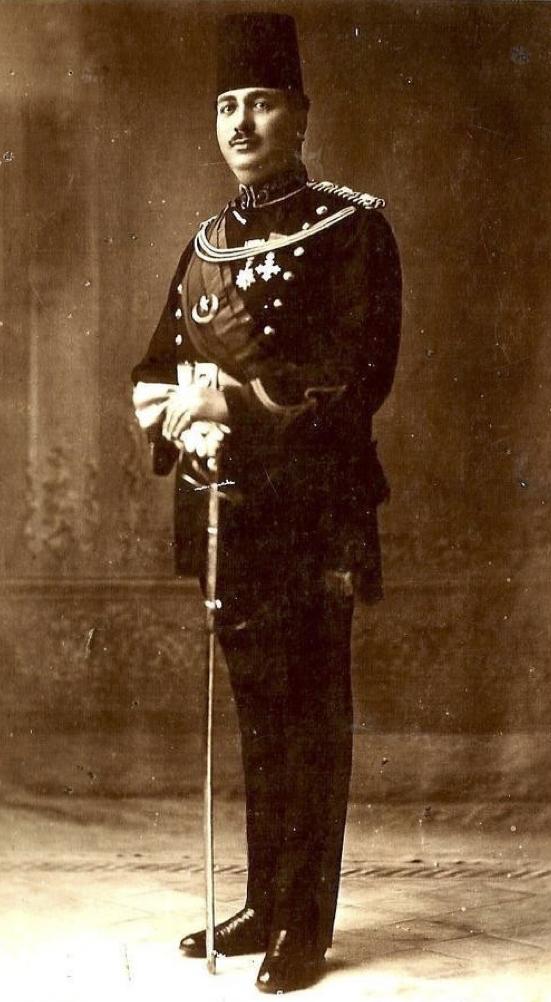
This moderate resolution portrait image shows an individual in a Royal Guard uniform wearing the bicolored sash (green above & red below) and crescent & star pin that I believe are the regalia of the Egyptian indigenous Courts (the national counterpart of the international Mixed Courts). This photo comes from a 15 February, 2015 eBay auction listing archived on the WorthPoint.com website (https://www.worthpoint.com/worthopedia/egypt-photo-military-officer-uniform-1861664203). No studio name or other information is provided. I have previously included 2 portrait photos of individuals in military uniforms wearing this sash with the crescent & star pin. My post on this thread of 6 April, 2020 includes a hand-colored studio portrait of a man in a uniform with a bicolor sash (green & red) and a crescent and single star insignia as the 18th photo in that post addressing costume of the Indigenous Courts (I also previously included that as the 1st photo in my post of 6 November, 2018). That individual wears a white uniform that I am not knowledgable enough to identify. I also included a high-resolution portrait (and 2 close-up cropped portions of the costume details) as the first 3 images in my post of 2 July, 2020 showing a man wearing a Royal Guard uniform with the same bicolored sash, crescent & star pin, and holding his dress sword. I wanted to include this additional, although lower-resolution, image that confirms the costume combination suggesting some specialized role for Royal Guardsmen in association with the Egyptian Indigenous Courts. The man in the above portrait wears the breast badge of the Order of the Nile (the resolution is too poor to determine if it is the 4th or 5th class, although it appears there may not be a rosette on the ribbon, suggesting it's likely the 5th Class Knight award) and what I believe is a European award to the viewer's right of the Order of the Nile. The photo resolution is poor, and my knowledge of European medals is woefully slim, but it resembles a British CBE, OBE, or MBE (?). Although there is variation in the number of stars associated with the crescent pin among lawyers and other officials of the Indigenous Courts (see the various portraits in that 6 April, 2020 post), the other 2 portraits of men in military uniform with the bicolored sash also exhibit a crescent with only a single star. Some of the lawyers (or other court officials) shown in that post also wear a crescent with just 1 star.
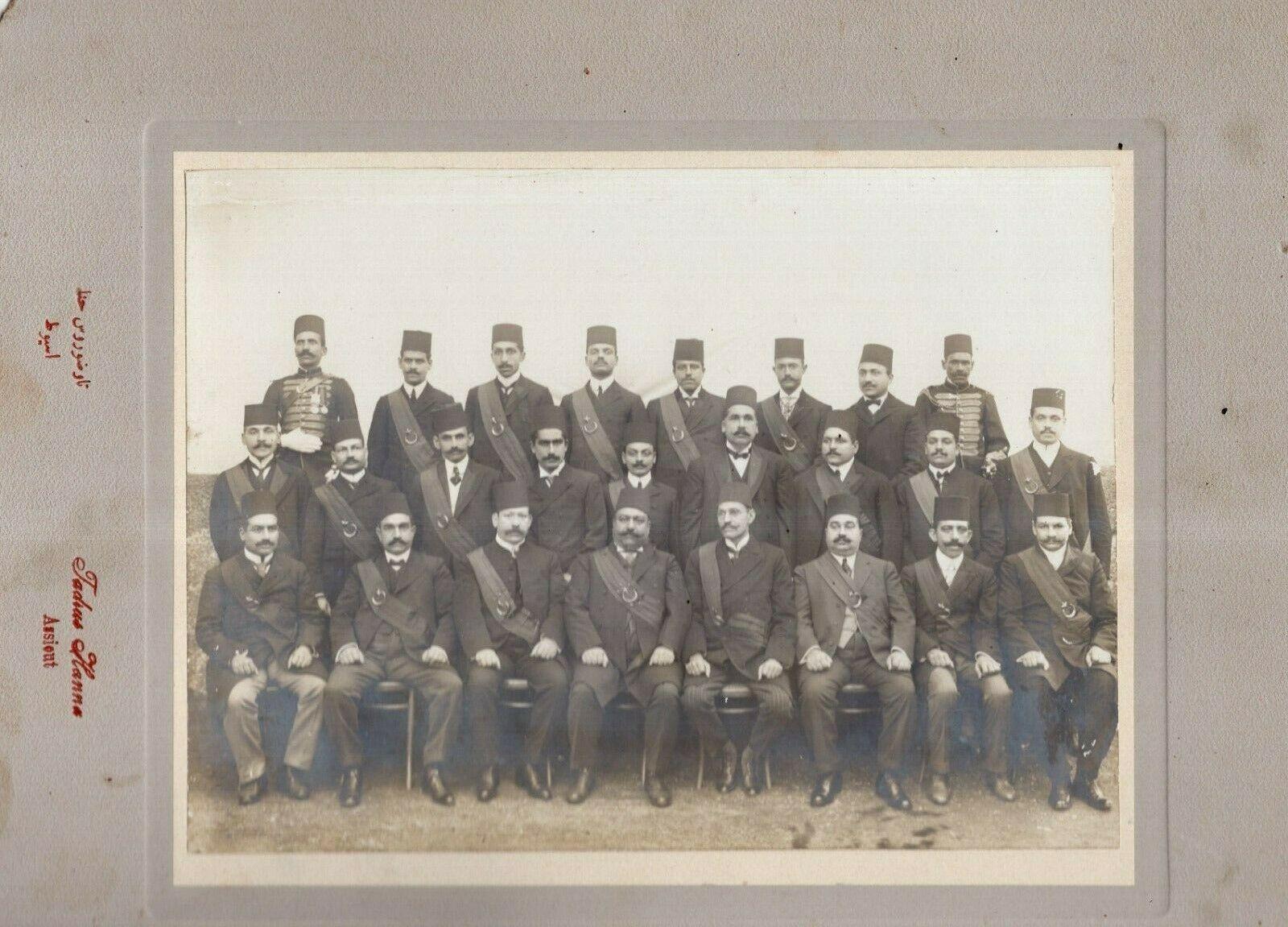
Undated group portrait of members of the Indigenous Court from a current eBay offering (https://www.ebay.com/itm/EGYPT-VINTAGE-PHOTO-Members-of-the-judiciary-in-Assiut-PHOTO-HANA/274636102167?hash=item3ff1965a17:g:ccAAAOSw-tBf8zaC). The portrait was taken by the Studio of Tadius Hanna in Assiout (modern spelling = Asyut). The description identifies this as an original print measuring 21 X 16 cm. This moderately high-resolution image can be zoomed for greater detail. All (or the majority?) of the individuals appear to be wearing monochrome pleated sashes (green?, only the sash of the man 3rd from L in the 1st row may have a bicolored sash?) with the crescent and single star pin regalia (only 2 individuals with visible crescent & star insignia may show multiple stars: the man seated in the front row 4th from L appears to have multiple stars above and possibly below the crescent pin; and the man seated next to him, 3rd from L, appears to have 3[?} stars above the crescent). The seller identifies this as a picture of the judiciary in Assiout (probably only because of the studio location identification on the matting, however it is likely). Most of the personnel (other than the two guards in the back row, and 2 men wearing stamboulin coats: the man seated 3rd from L in the front row with multiple stars and possibly the man standing 2nd from R in the 2nd row who also appears to have a stamboulin coat) wear western-style collared jackets (and a variety of collar and tie styles) as seen in the other photos of Indigenous Court portraits of the 20th century, as shown in my post of 6 April, 2020 on this thread (the portrait of the Indigenous Court of Appeals in Cairo from 1895, the 8th photo of that 6 April post, shows the use of only stamboulin coats). Unlike some of the photos in that post, the coats are of diverse cuts in this portrait (non-uniform coats also are seen in the 6th, 9th [although many are similar in this portrait], 10th, 13th, and 14th photos of my 6 April post). Uniform outerwear (also western-style collared coats) is seen on the other court portraits).
I also came across a few additional examples of silver commemorative medals for the closing of the Egyptian Mixed Courts on 14 October, 1949 on the WorthPoint.com archive and other websites. I have previously illustrated 2 examples of this medal in silver as the 1st photo in my post of 3 May, 2018 (also included as the 1st photo of my post on this thread of 7 July, 2020) and as the last 2 photos of my post of 28 February, 2019 discussing hallmarks on the Mixed Court judicial and court official badges on this thread. Bronze examples are more commonly encountered on auction sites (i.e., the 2nd & 3rd photos in my 3 May, 2018 post), so I thought it would be useful to show a few additional silver examples. The iconography on the reverse is derived from a postal stamp design commemorating the same event (see my posts of 17 October and 25 October, 2018; the first photo in my post of 14 November, 2018; and a brief summary in my 7 July 2020 post). The first 2 examples below are the same pieces I previously chose to show the details of this commemorative medal. The last 3 silver examples I have not illustrated on this thread. I apologize for the redundancy of including photos I have previously posted, and images that only show differences in the condition of this medal. As I continue my research, I have occasionally re-organized how I think some of these images should be presented comparatively and with some additional information.
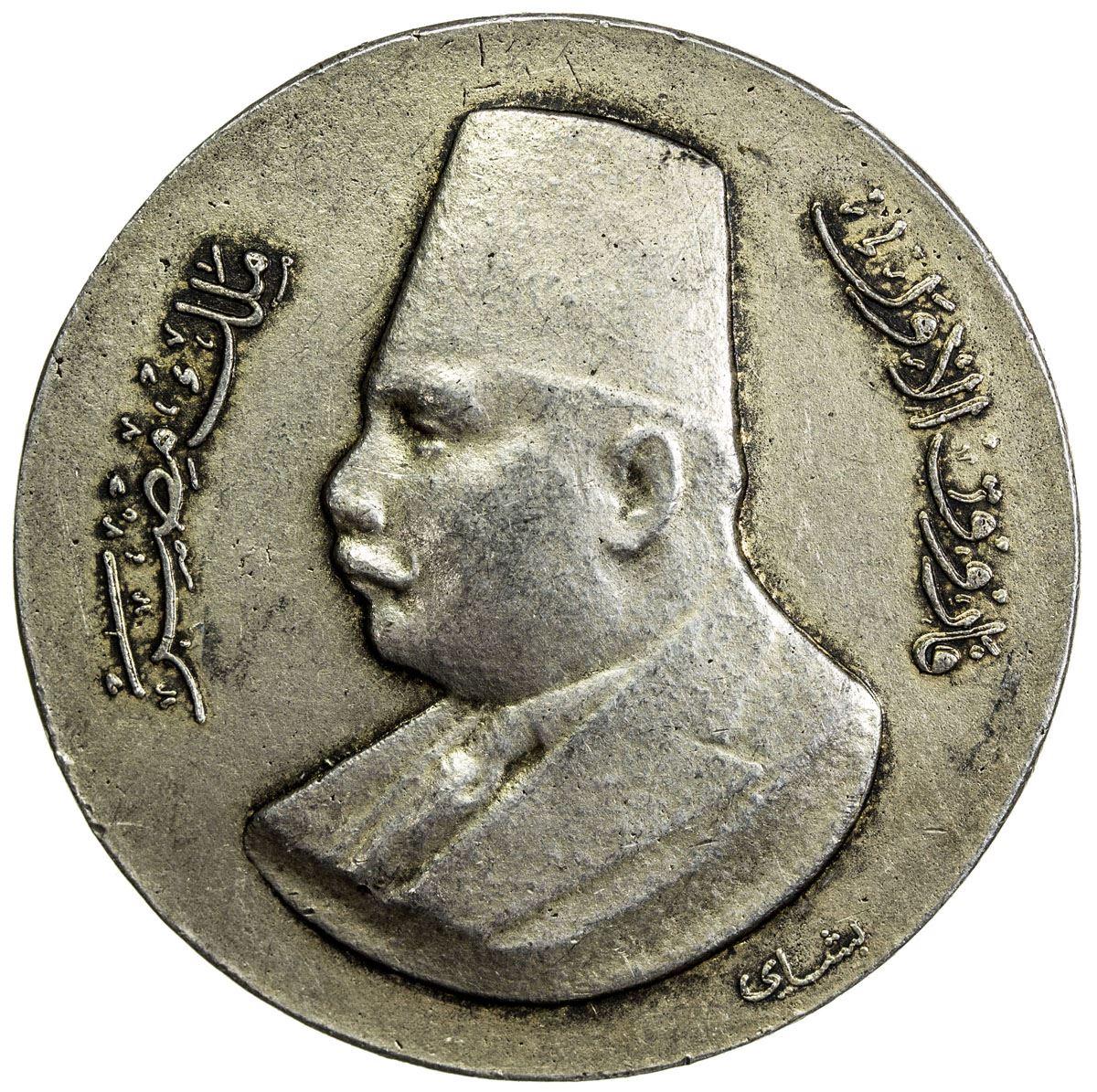
Obverse of a silver medal commemorating the closure of the Egyptian Mixed Courts on 14 October, 1949 from an 18 May, 2018 auction by Stephen Album Rare Coins archived on the icolletor.com website (https://www.icollector.com/item.aspx?i=29825948). This is one of the highest resolution image on the internet and this example is probably in the best condition of any silver examples I have encountered online. I have previously included an image that combines both the obverse & reverse of this example as the the 1st photo in my post of 3 May, 2018; the last photo in my post of 28 February, 2019 (discussing hallmarks); and the 1st photo of my post on this thread of 7 July, 2020. The signature underneath the shoulder of the bust of King Farouk I is that of Sadek Tewfik Bichay (brother of Fahmy Tewfik Bichay). As noted at the end of my post of 28 February, 2019, the inscriptions on this medal are translated by Ahmed S. Kamel on his flickr site (see that post for the link). The obverse inscription on the left side of the bust of King Farouk I reads: “King of Egypt”; and on the right of the obverse it reads “Farouk I”. On the reverse, the Arabic inscription on the right is not translated by Ahmed S. Kamel, but is probably a translation of the French inscription on the left of the medal: “FIN DU SYSTÉME JUDICIARE MIXTE”, as also seen on the stamp commemorating this event.
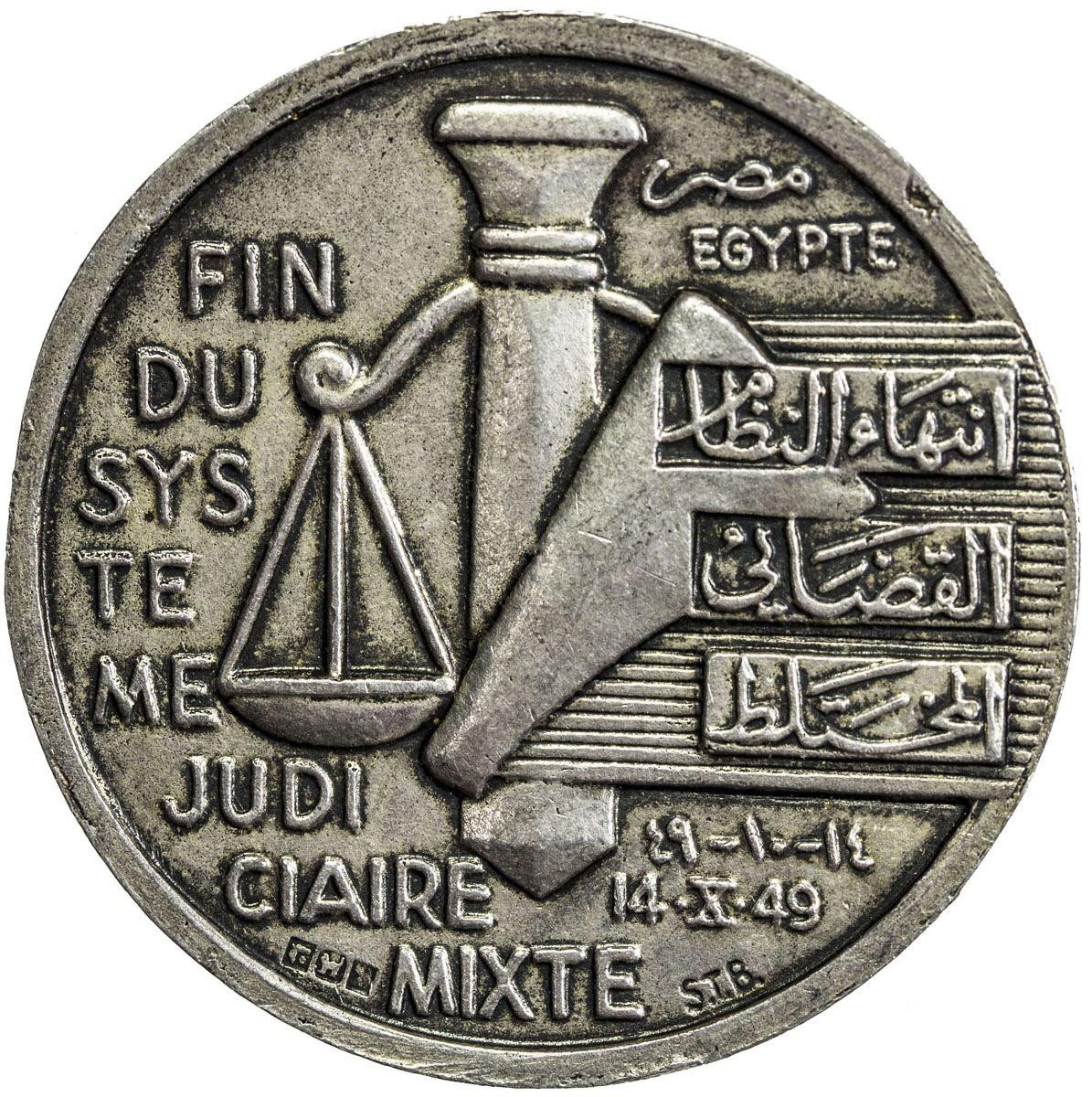
Reverse of the same silver commemorative medal from the 18 May, 2018 auction by Stephen Album Rare Coins. This image shows the English initials of Sadek Tewfik Bichay ("S.T.B") near the inferior right margin. The GMIC contributor annab, the daughter of Fahmy Tewfik Bichay, identified these initials in her posts of 3 June and 5 June, 2018 on this thread. This image also shows well the Egyptian silver hallmarks identifying (L-R) the Cairo assay office fineness mark for 90% (900) silver and the cat hallmark for Egyptian silver (supposedly only used from 1916-1946 and then replaced with the lotus blossom hallmark). The date hallmark for 1948-1949 is less clear than on the next silver example from a 7 January 2018 auction on eBay archived on the WorthPoint.com website.

Cropped enlargement of the inferior margin of the reverse of this same silver medal showing the Egyptian silver hallmarks and the "S.T.B." initials (this image can be zoomed for greater detail). Compared with the 3rd illustration below showing the set of Egyptian silver hallmarks, it is apparent that the Arabic letter for the date hallmark is problematic to read in these photos.
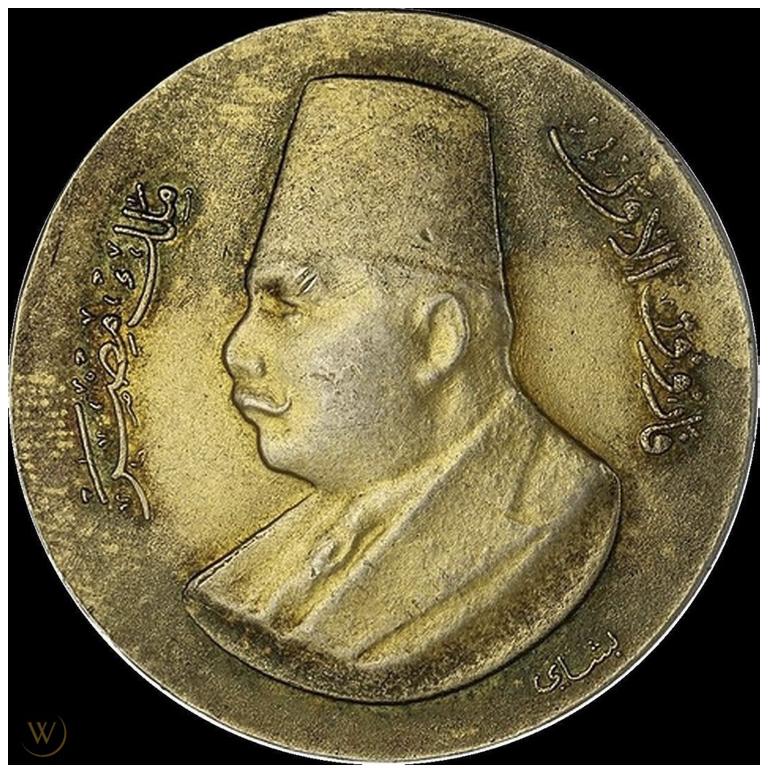
Obverse of the commemorative medal marking the closing of the Mixed Courts in October 1949 from a 7 January, 2018 auction on eBay archived on the WorthPoint.com website (https://www.worthpoint.com/worthopedia/egypt-1949-large-silver-farouk-gilt-1908996156). This is the obverse of the same example as I used to illustrate the hallmarks on the reverse in my post of 28 February, 2019 from higher-resolution images on a September 2017 auction listing by Stephen Album Rare Coins (and archived on a few other auction sites). The description from WorthPoint.com reiterates the data on the Stephen Album Rare Coins listing; the diameter of this medal as 42 mm and the weight as 37.47 g and states that the piece is "lightly gilt" (I'm unsure if the description means "tarnished", the silver hallmark of 900 indicates solid 90% silver). The discoloration of the obverse of this piece and the scratches to the eyebrow region of the portrait of King Farouk I are quite distinctive (as noted below it has been part of a Stephen Album Rare Coin auction as well as being sold in a past Spink auction [335 Lot 50] with the same description, including identification of the maker as "Bisha'i").
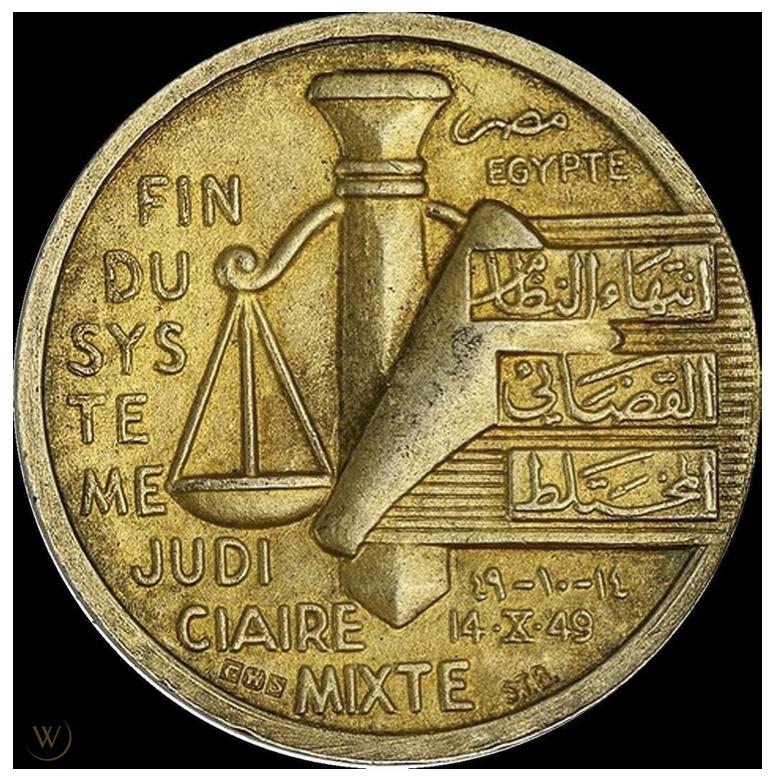
Reverse of the same silver commemorative medal archived on the WorthPoint.com website. This image shows well the "S.T.B" signature of Sadek Tewfik Bichay. This image provides the best resolution internet image of the Egyptian silver hallmarks identifying the Cairo assay office fineness of 90% (900) silver; the cat hallmark for Egyptian silver; and the date hallmark for 1948-1949. Although all the published sources I have encountered state that the cat hallmark identifying Egyptian-made silver was only used between 1916-1946 and then replaced by the lotus blossom hallmark in 1946, that is clearly not true. I have previously noted that the date on this commemorative medal challenges that temporal identification for the cat mark (usefully combining both the assay date hallmark of 1948-1949 and identifying the date of the event being commemorated), but I have not found an alternative date when the lotus blossom superseded the use of the couple of variants of the cat hallmark to denote Egyptian-made silver.
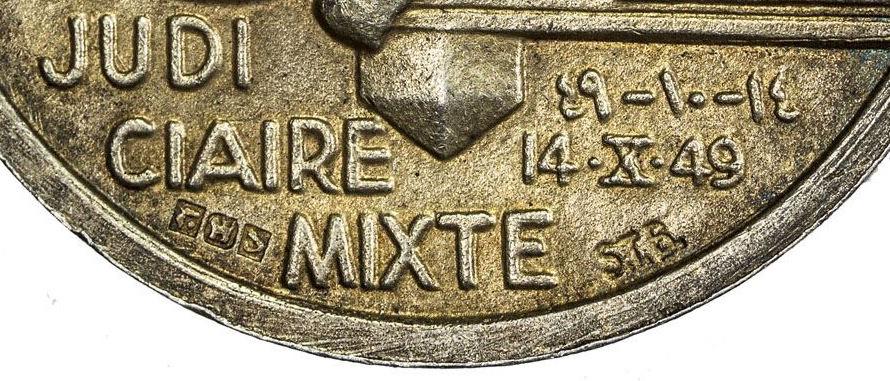
Above is a cropped enlargement of the inferior of this same silver medal from a higher-resolution version of this image. This photo is not from the WorthPoint.com archive but from the Stephen Album Rare Coin auction of 14 September, 2017 (29) that is archived on the coin archives.com website (https://www.coinarchives.com/w/lotviewer.php?LotID=3018794&AucID=3079&Lot=1776&Val=7022a8a05524ba0ccff62c071a37a509&Match=1#match1). This is the highest-resolution photo of the date hallmark for 1948-1949, showing it better than any other internet photo. I previously included this image in my post of 28 February, 2019 on this thread detailing hallmarks (it also shows the identical scratches and edge deformation as seen on the WorthPoint.com archived photo of the reverse)
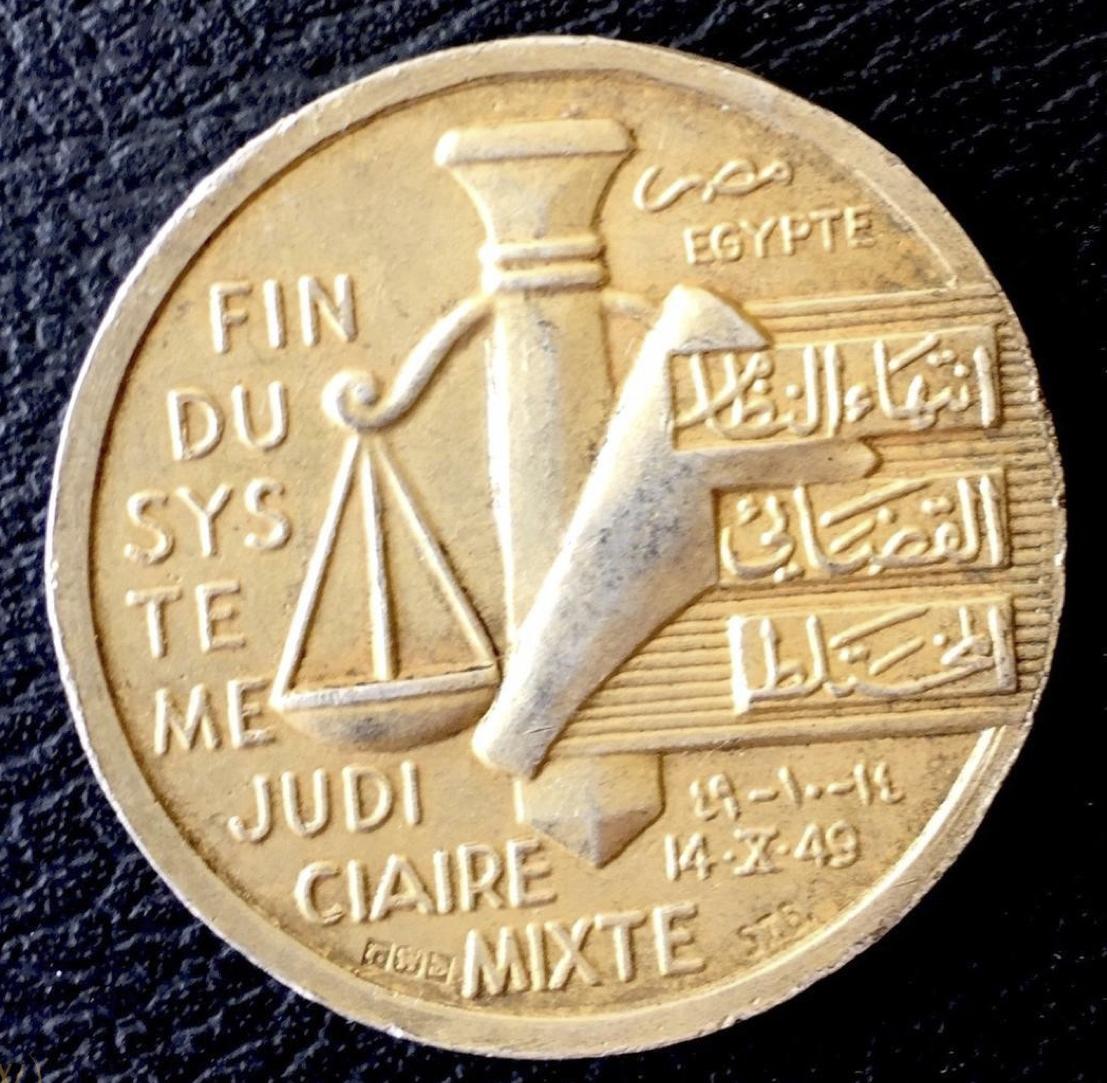
Moderate-resolution image of the reverse of another silver medal commemorating the closure of the Mixed Courts from an 11 March, 2013 eBay auction, archived on the WorthPoint.com website (https://www.worthpoint.com/worthopedia/egypt-king-farouk-1949-silver-medal-1900738725). No additional information about this medal is provided in the archived listing. The hallmarks are the same as on the above example. The "S.T.B." maker's mark also is present on bronze examples, but no bronze hallmarks to identify "fineness" were employed in the Egyptian assay system for bronze.
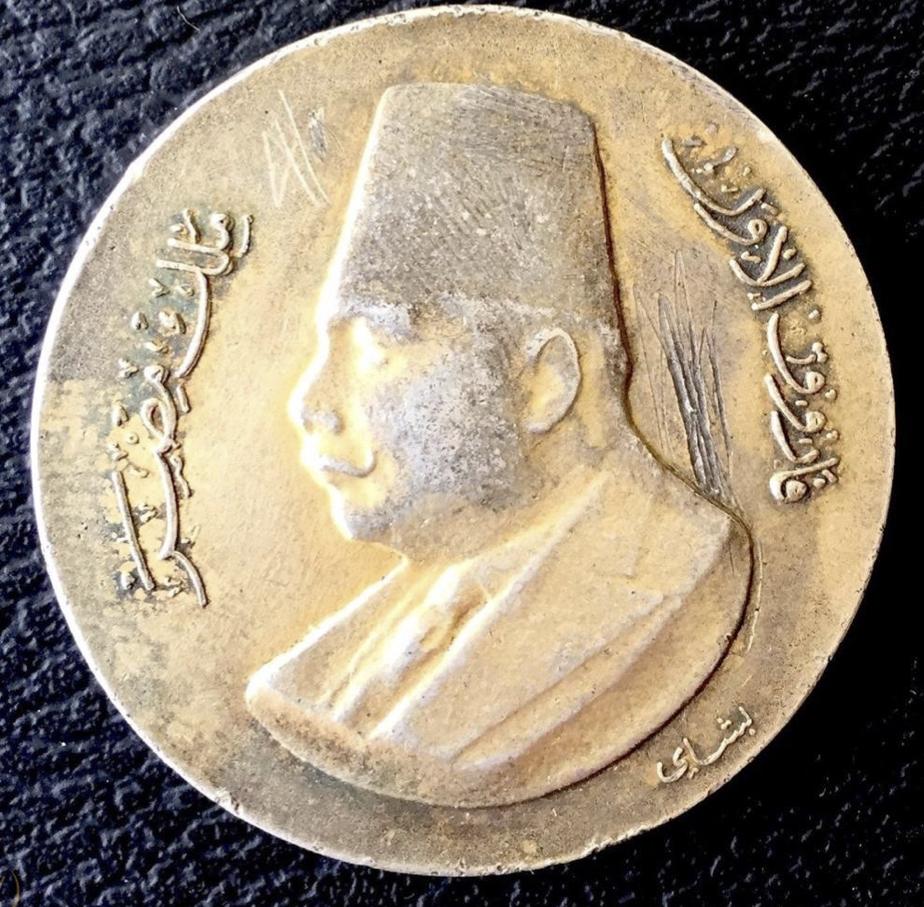
The obverse of this same silver medal from the 11 March, 2013 eBay auction, archived on the WorthPoint.com website. This side is quite worn, and also exhibits deep and deliberate scratches marring the portrait of King Farouk I.

Obverse of another example of a silver medal commemorating the closing of the Egyptian Mixed Coursts from a 10 April, 2017 eBay auction archived on the Worhtpoint.com website (https://www.worthpoint.com/worthopedia/egypt-1949-silver-medal-judiciary-1862716711). The listing identifies the diameter as 42 mm and the weight as ~36 g. The nicks on the portrait bust of King Farouk I of this medal are quite distinctive.
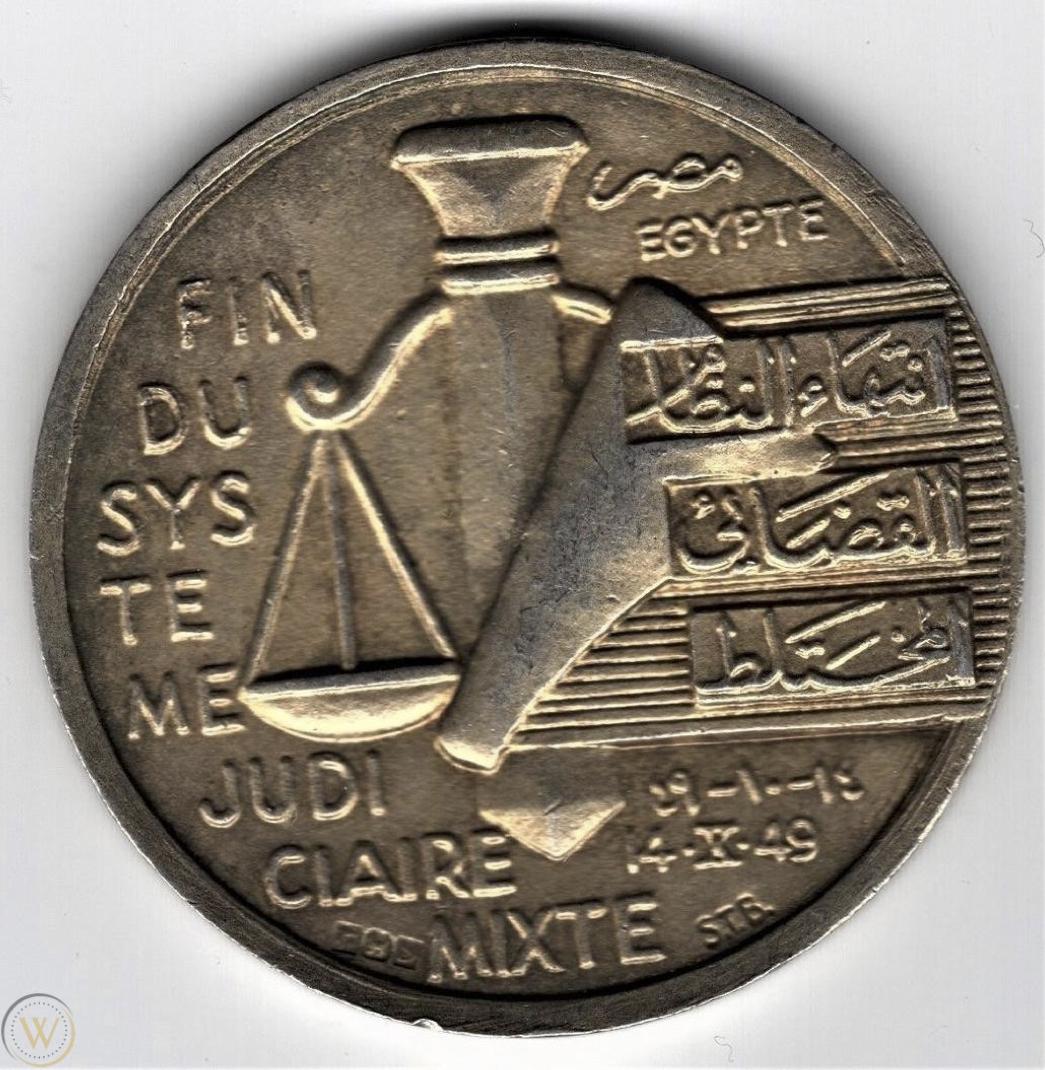
Reverse of the same silver example from the 10 April, 2017 eBay auction archived on the Worthpoint.com website. Although not high resolution, the date hallmark also is readable on this example as 1948-1949.

Low-resolution image of the reverse (L) and obverse (R) of another silver medal example of the commemoration of the termination of the Egyptian Mixed Courts from the medals database on the medals4trade.com website (http://www.medals4trade.com/displayimage.php?album=search&cat=0&pid=5592#top_display_media). The description identifies the diameter as 42 mm and the weight as 39 g, and accurately identifies the context, date of the closing of the courts, and the maker (but only as "Bishay").

The obverse of an odd example of a bronze version of this same medal that seems to have been colored silver (to appear to be a more precious metal than its bronze raw material?). This comes from a current, and ongoing, eBay offering (https://www.ebay.com/itm/1959-Kingdom-of-Egypt-Medal-Badge-Order-King-Farouk-Unification-of-Court-System/302888581573). This particular example has been continuously offered for a couple years. In my opinion, this example is priced ~$US 150 too high in comparison to other recent auction offerings of this medal. This same medal (with its distinctive obverse discoloration in the upper right quadrant) also appears on several other auction websites, usually at even a higher price than this eBay listing. A 2018 Stephen Album Rare Coin listing (Auction 32, Lot1 1470) of this medal called it "silvered". The same seller also is offering (and has been unable to sell for the same amount of time as this medal) another example that is bronze and has either been covered with a gold-colored paint or a shellac (shown below). The listing identifies the diameter of the above medal as 42 mm, but does not identify the material.
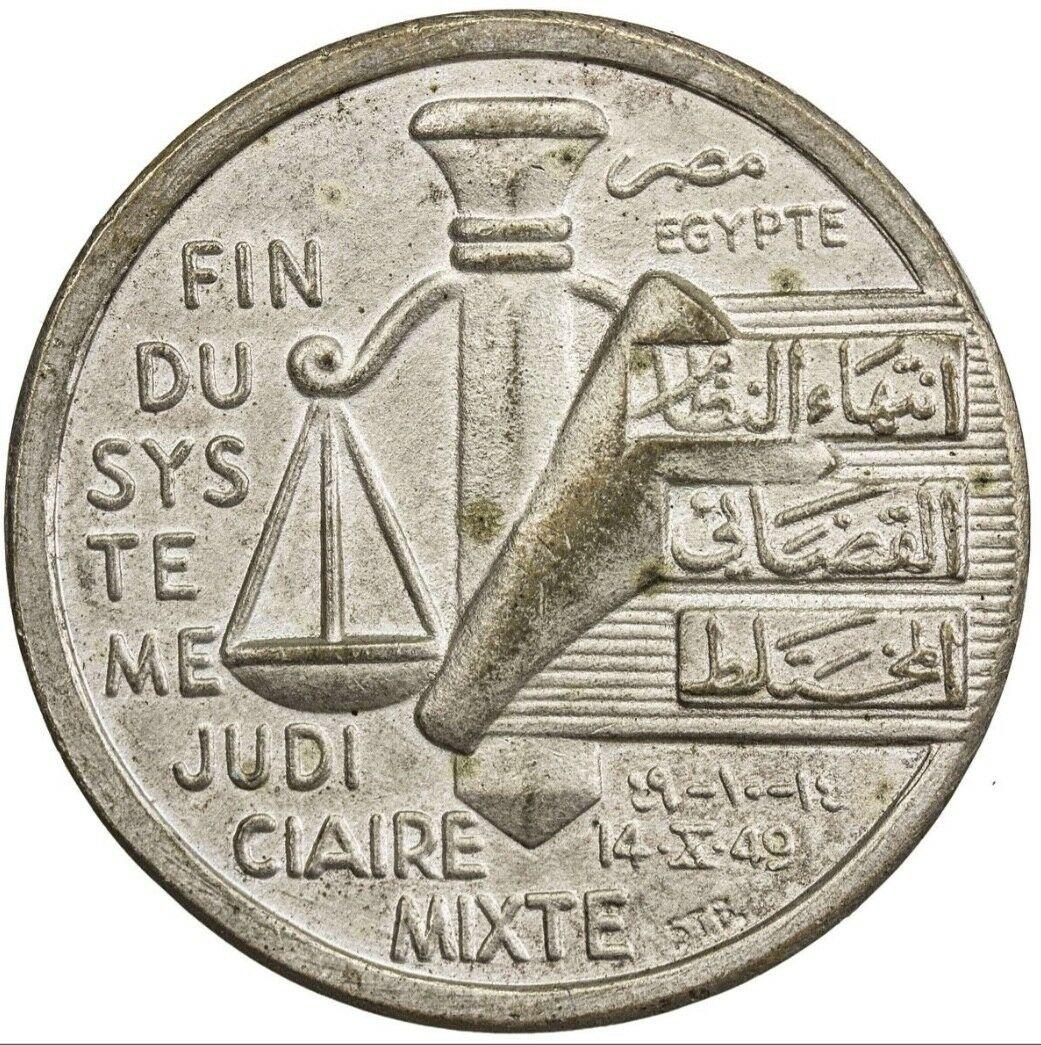
Reverse of this same eBay example of the medal commemorating the termination of the Mixed Courts. Although the color of both faces appears silver, note the lack of any Egyptian silver hallmarks on the inferior left position, as can be seen on the other genuine silver examples above.
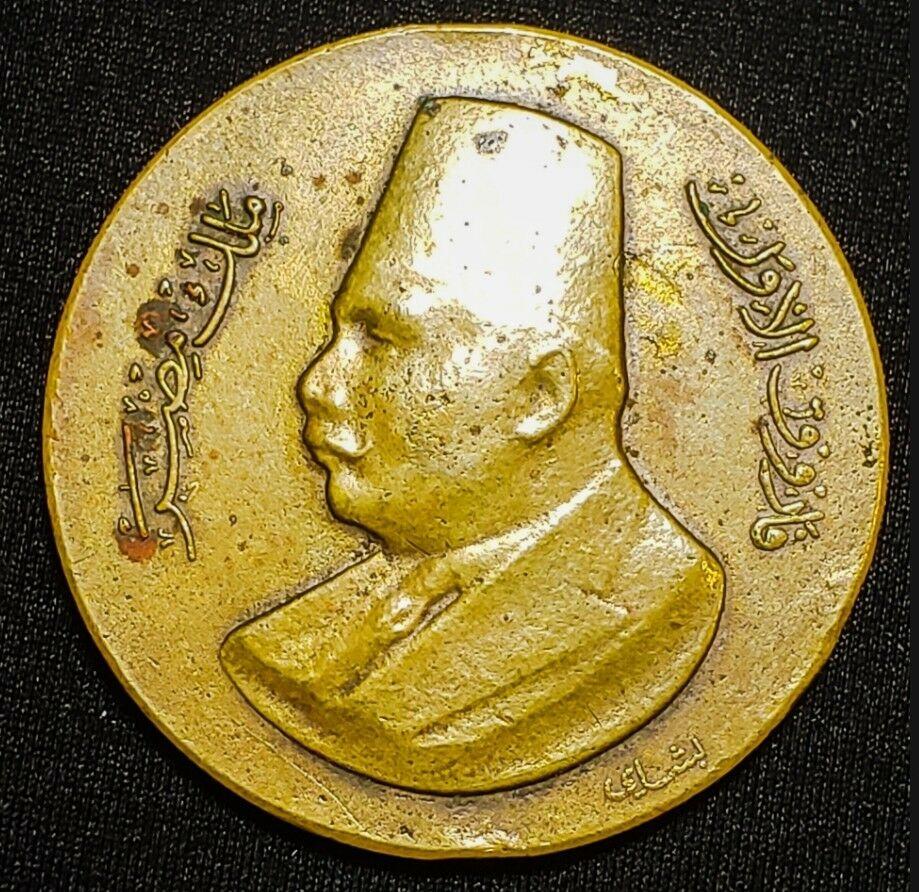
Obverse of another oddly-colored King Farouk I medal commemorating the closing of the Egyptian Mixed Courts from a current (and ongoing) eBay sale by the same seller as the above silver-colored example (https://www.ebay.com/itm/1949-Kingdom-of-Egypt-Medal-Badge-Order-King-Farouk-Unification-Court-Sys-628/303368944100). As noted, this appear to be coated with some kind paint (to make it appear gold? shellac?) but is made of bronze (no material, measurements, nor weight are included in the description).

Reverse of the same bronze commemorative medal from the current long-running eBay offering with the very oddly-colored coating. This reverse side may show bubbles from this coating or some erosion of the surface. Again, there are no Egyptian silver hallmarks, indicating that the piece is bronze.
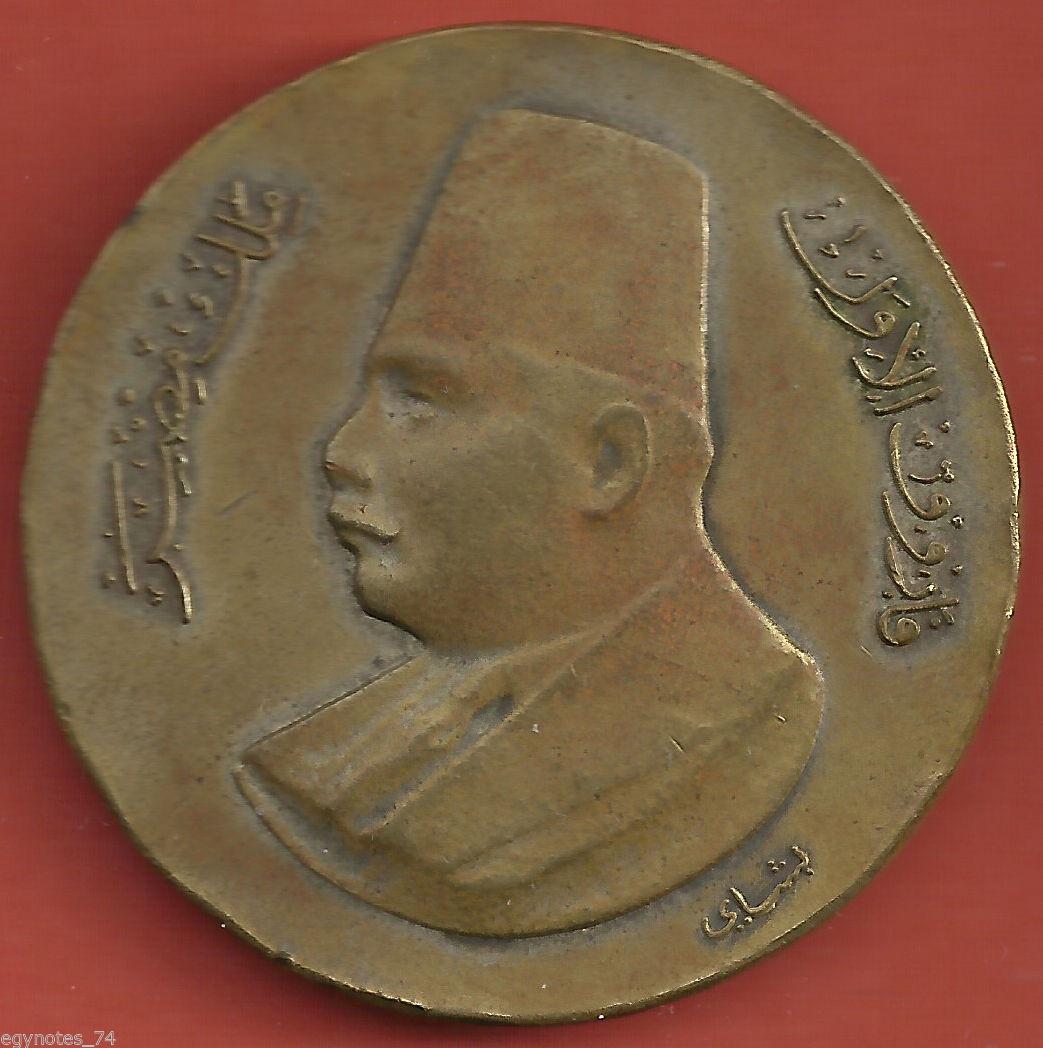
Normal appearance of the obverse of a bronze version of the medal commemorating the closure of the Mixed Courts. From a May 2018 auction on eBay (https://www.ebay.com/itm/EGYPT-BRONZE-MEDAL-OF-KING-FAROUK-1949-MIXTE-EXTREMELY-RARE/222944960504?hash=item33e88e1ff8:g:afAAAOxyoA1RSx18). The auction description identified this piece as bronze, gave its diameter as 43 mm, and it weight as 27.32 g. This is the highest resolution image I have encountered of a bronze version this medal in best condition (even if it is partially unfocused). Another example offered contemporaneously by the same seller, with a few more scratches, also was identified as having the same dimension and weight (possibly a copied description rather than a separate measurement?). Note that the Stephen Album Rare Coin description for the last silver example shown above identified the measurements of a bronze example offered at the same time as the silver medal as having a diameter of 42 mm and a weight of 29-30 g).
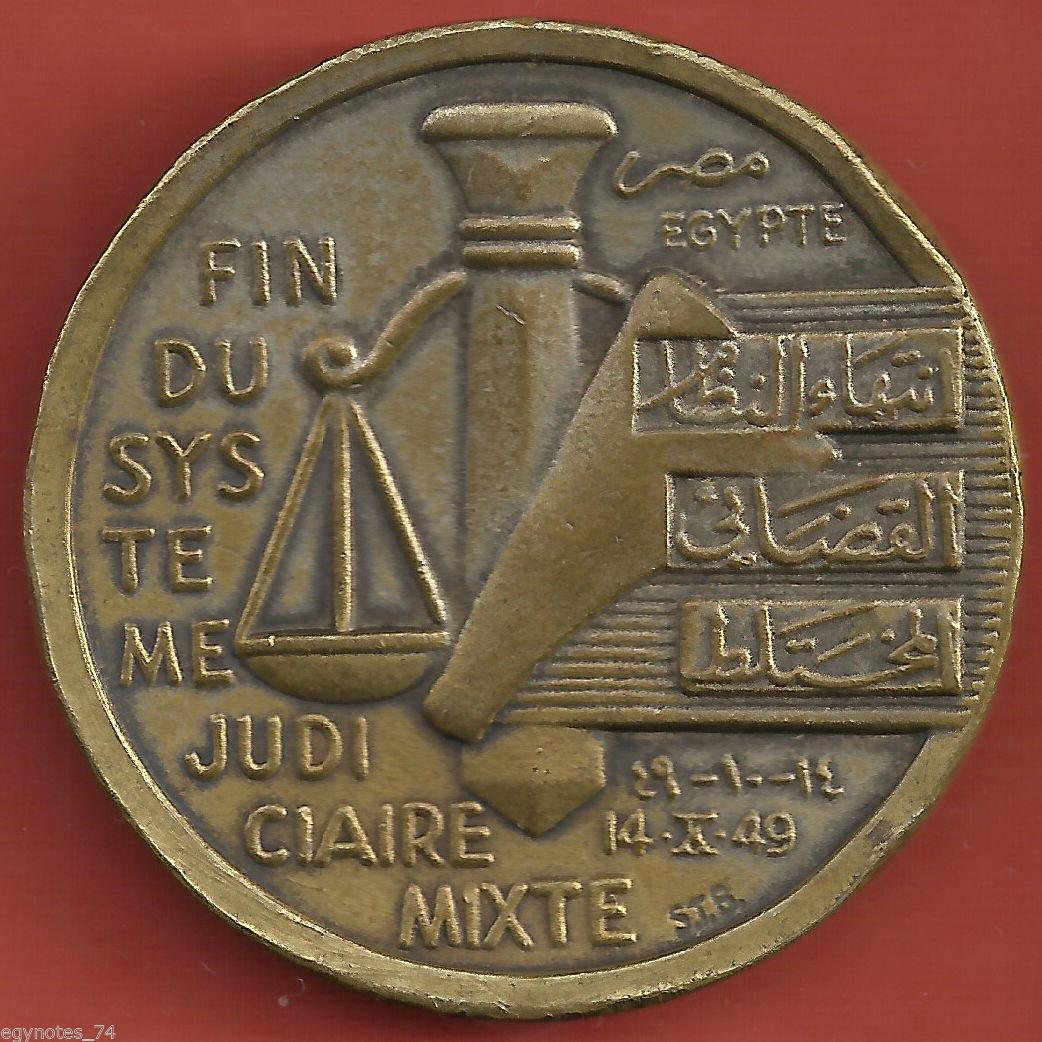
Reverse of the same bronze commemorative medal from the May 2018 eBay offering. The lack of hallmarks other than the "S.T.B." maker's signature is again apparent.
0 -
922F,
The additional information & clarification is most useful. So this is a version the Protocole volume I have not been able to track down through interlibrary loans yet, most interesting. As an underpaid part-time professor, I do not have the $ to bid on this through eBay if someone else is interested. I don't know if the price will drop again if this listing is not bought, the seller is willing to consider offers.
0 -
I recently found the case for the Abbas Hilmi II medal commemorating the anniversary of his coronation and return from the haj (in 1909) that my wife's great-grandfather, Pierre Crabités obtained during his time as a judge on the Egyptian Mixed Courts in Cairo from 1911-1936. Although I was unable to open the frame and get any good pictures of the actual medal while visiting my wife's family, I have some information on the case to add here.
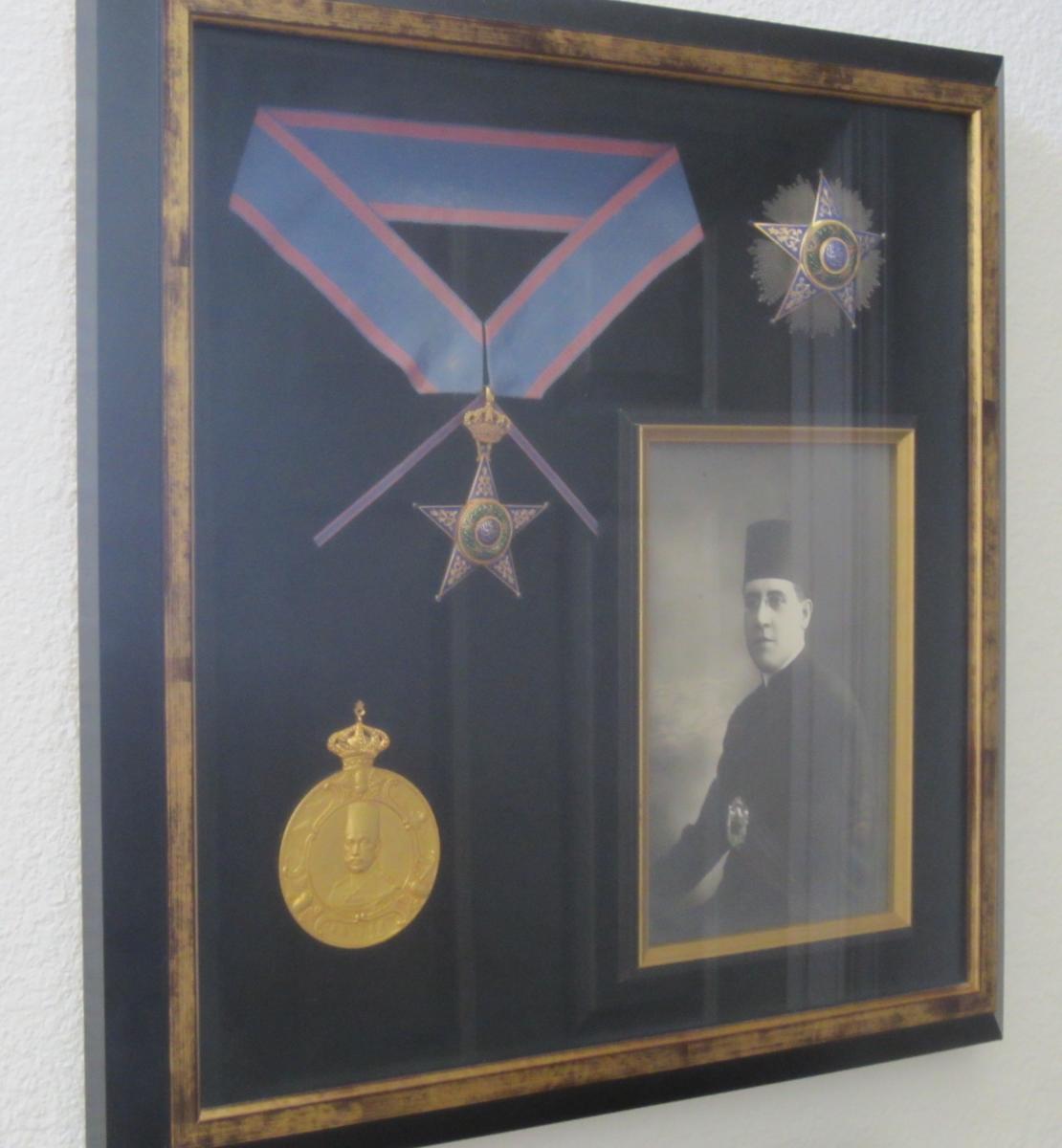
Photograph of the framed Pierre Crabités memorabilia that includes: the visible obverse of the bronze Abbas Hilmi II medal Crabités obtained that commemorates the Khedive’s coronation anniversary and return from the haj, probably struck in January 1909 (lower left); his 2nd Class Grand Officer Class Order of Ismail neck badge and ribbon (upper left, unfortunately, the mounting places the Order of Ismail neck badge at the back portion of the ribbon with the ties); the Order of Ismail breast star (upper right); and a 1911 photograph of Crabités wearing the regalia of his role as judge on the Egyptian Mixed Courts’ District Court of Cairo where he served from 1911-1936, consisting of a maroon tarboosh, black stambouline coat, a red sash over his right shoulder running to the decorative bow on the left hip (the sash is barely visible in this image, but the decorative bow is not shown in this photo) and the beautiful gold & silver judicial badge of office is pinned to that sash (lower right). I had to take the photograph from an oblique angle as the non-museum-quality glass is highly reflective and I have had poor luck getting any good photographs of this ensemble in its mounting.

Photo of the upper lid of the case for the Abbas Hilmi commemorative medal owned by Judge Pierre Crabités. The case dimensions are 121 mm long X 95 mm wide X 30 mm deep. This photo shows a textured blue paper label with a light green Arabic inscription pasted on the outer lid. It appears that 2 other areas of inscriptions (also in a light green color) may have been rubbed away (intentionally?) above the intact Arabic Inscription. This image shows the gold, twining floral ornamentation of the angled margins of the upper case lid (not present on any other part of the case). The case is covered in a marbled and textured paper, that was probably intended to imitate leather (the texturing is the stamped black crazing that is slightly lower than the green surface of the paper). There is some variation in how the coloration of the cover of the case appears in the photos below, the hue of green in the above photo is closest to how the coloration appears. The upper line of the paper label may be an English name of the company that sold the medal in Egypt (see the brief discussion of the few other images I have found of the case lid at the end of this post). There is no maker's labeling on the inside of the case lid (see the 7th photo in this post below). The push release button to open the case is visible at the lower margin of the photo.
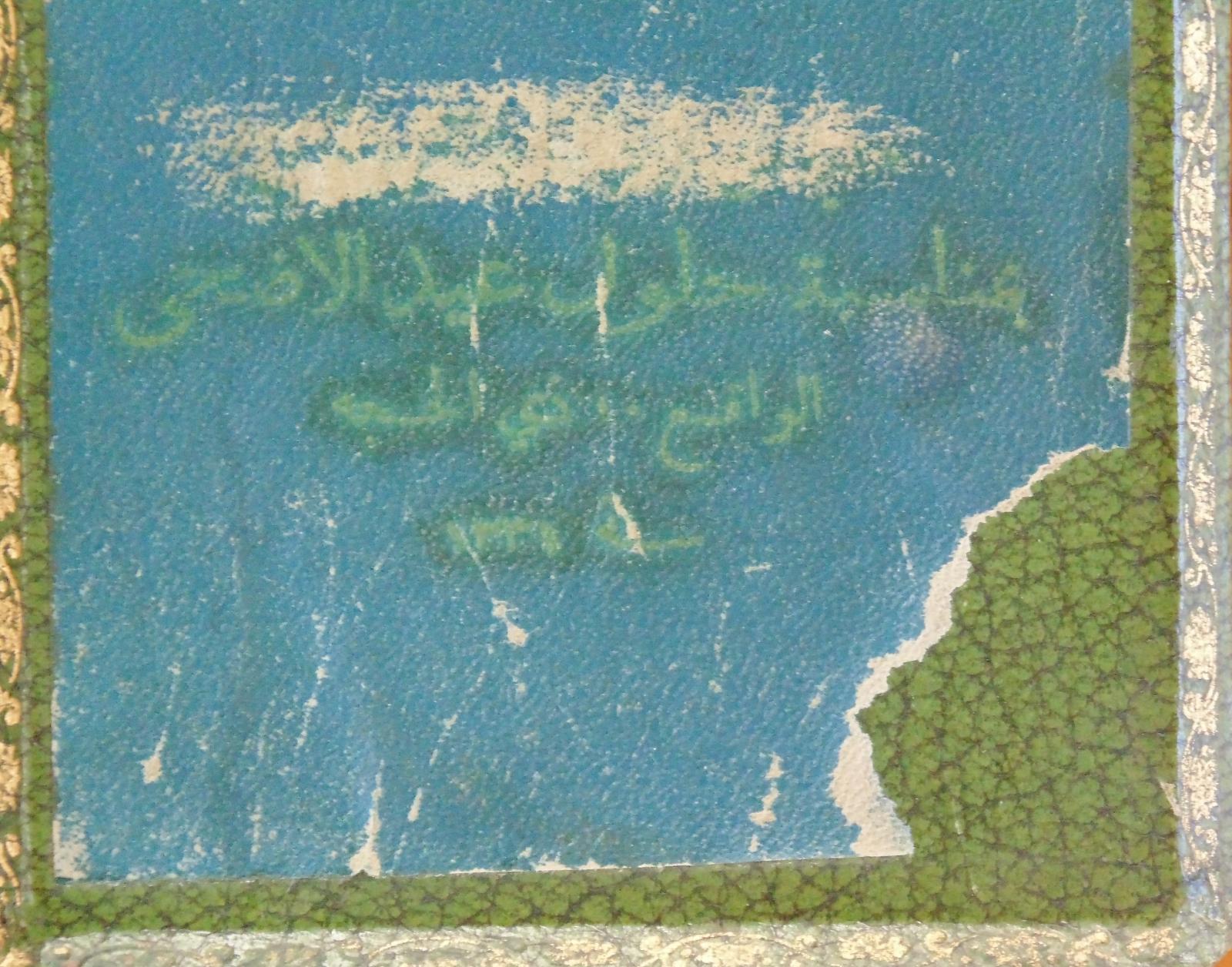
Close-up image of the intact Arabic inscription on the paper label of the upper case lid. I have previously seen one other very low-resolution image of a case for this medal that I believe exhibited a similar label. Unfortunately, that internet image does not appear any longer for comparison with the Crabités example. As noted at the end of this posting, the other images I was able to download of the labeling of a case associated with this commemorative medal shows a different darker green colored textured paper label that also is quite difficult to read.
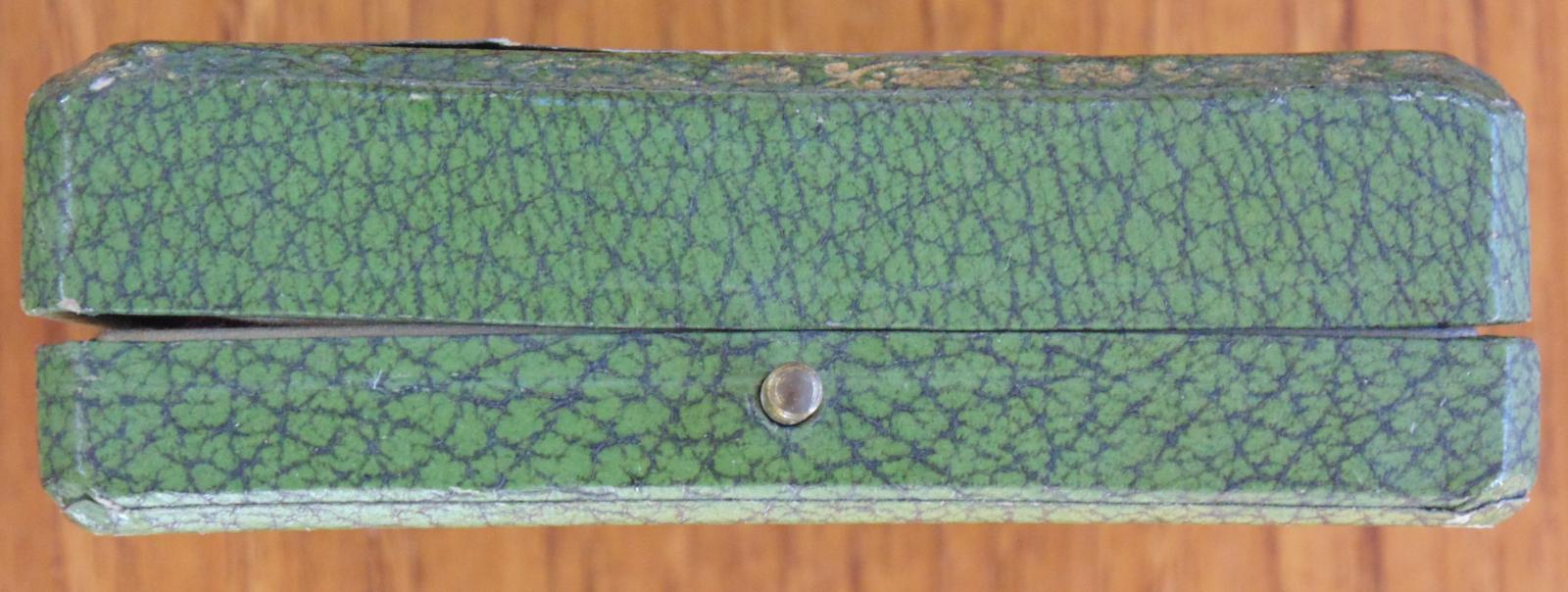
Close-up of the end of the case with the brass push-release button. The upper lid is oriented as the superior portion of the case in this photo (with the lone of gold floral ornamentation visible on parts of that beveled margin of the case).

Photo of the left lateral side of the case, the push release button is not visible but is located on the right end of the case and the hinge is on the left end. The gold floral ornamentation is readily visible on the angled margin of the upper case lid, and can be seen not to be present on the angled margin of the lower portion of the case.
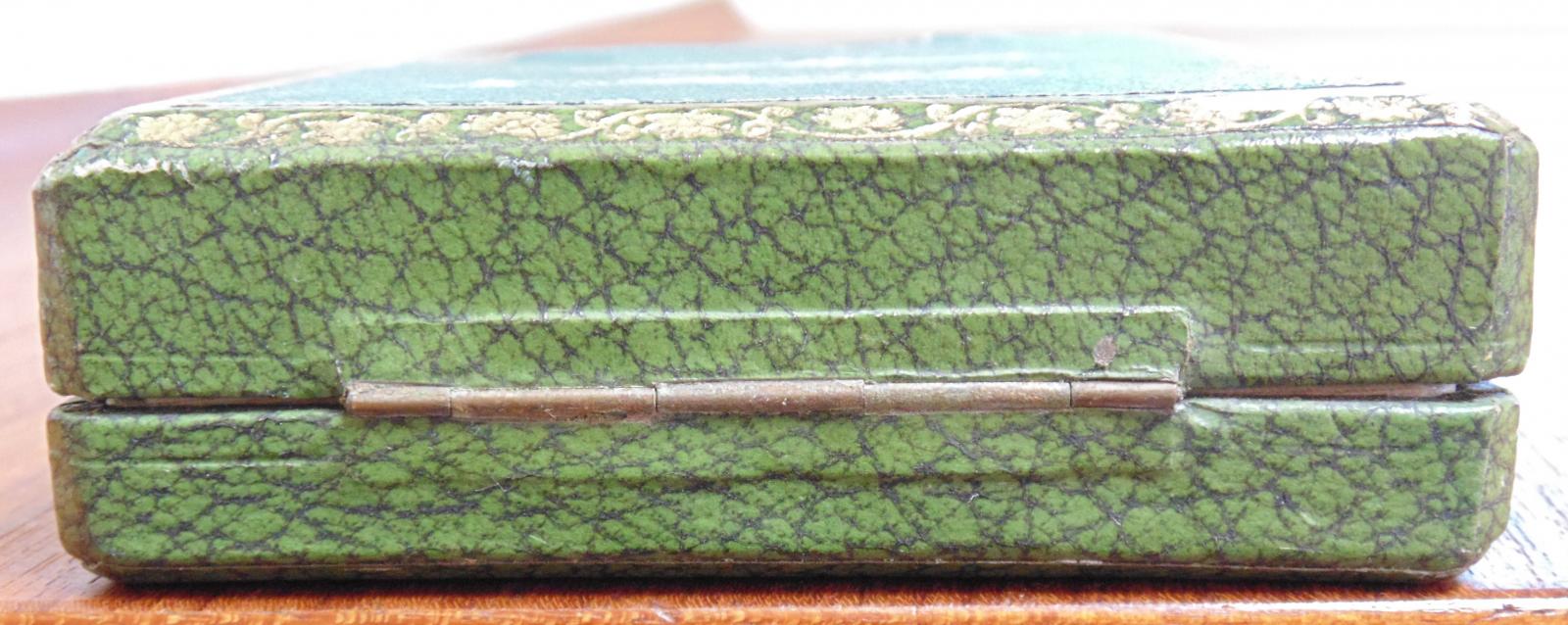
Close-up of the brass hinge on the back end of the case, also showing the gilt floral ornamentation of the beveled upper margin of the case lid.

Photo of the underside of the case, showing the same textured paper cover without any gilded ornamentation of the angled case margins.
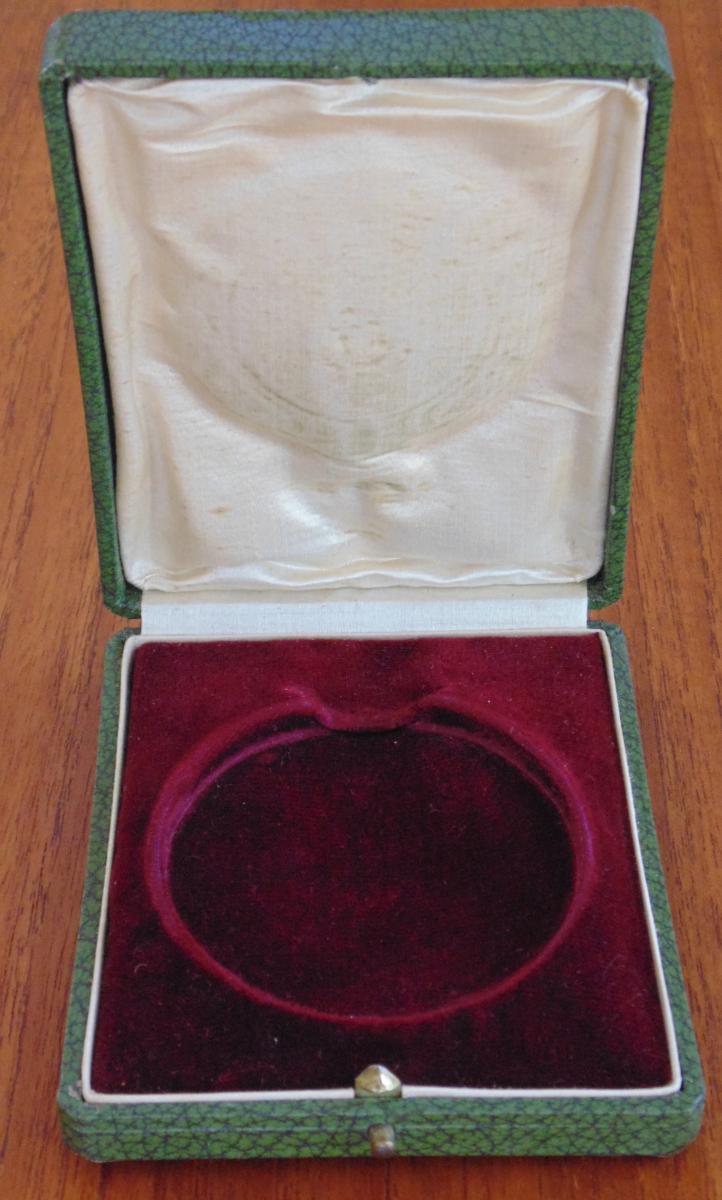
Photo of the interior of the case for the Abbas Hilmi II commemorative medal showing the red velvet medal bed and the cream or white silk (or satin?) cloth lining of the upper case lid (without any maker's name markings). This also shows the large brass catch mechanism of the push release. The medal bed is slight raised towards the back hinge end of the case. The princely crown ornamentation at the superior end of the medal fits between the cut-out in the round margins of the bed (as shown above in previous photos on this thread of 22 July, 2018 and 2 October, 2018).
I have previously included a few illustrations of cases for other examples of this commemorative medal on this thread. My post of 22 July, 2018 shows high-resolution images of the obverse & reverse of an example this commemorative medal from an eBay offering resting in the red velvet medal bed in the first 2 photos. The 3rd & 4th photos in that 22 July post show the difficult to read inscription on a dark green textured paper label pasted onto the the outer lid of that example ("..... &[?] Company, Cairo Egypt", and an Arabic inscription underneath it). I previously noted that the Dix Noonan Webb offering, Lot 1338 from 6 December, 2012 (shown in my post of 16 January, 2019 on this thread) of a cased example of this Abbas Hilmi II commemorative medal is noted to have a "much faded inscription on lid", although no photo of that is provided. The first 2 photos the 22 July post show the same red velvet lining of the medal bed, and a small amount of the same textured green paper case covering. The 2nd two photos of the case lid in that 22 July post show well the the same textured green paper case covering of the case exterior as illustrated above for the Crabités example. Those final 2 photos in the 22 July post also show the identical gold floral ornamentation on the case margins as shown above on the Crabités case. An image of the obverse of another example resting in the medal bed is shown in the photo of my post of 2 October, 2018. That image shows well the same green paper coating of the case, an identical form of brass push release opening mechanism, the red velvet medal bed, and some of the cream/white silk lining of the upper case lid interior.
I am still assembling the other contextual material about this commemorative medal that I threatened to include in the final sentence of my last post of 16 January, 2019.
0 -
Owain,
Many thanks for providing the additional reference information on this publication and the very useful table of contents. The eBay listing identifies this edition as lacking any bilingual text and being only in Arabic.
Happy New Year,
Rusty
0 -
The following book illustrations of Kingdom of Egypt awards come from a current eBay listing for a 1946 book of Egyptian medals (https://www.ebay.com/itm/EGYPT-BOOK-1946-medals-and-military-ranks-ISSUE-150-PCS-ONLY-RARE/274630500280?hash=item3ff140dfb8:g:degAAOSwrKNf3ff1) by a seller who specializes in older photographs of Egypt. The price was halved this week from US$999 to $500. The listing identifies the book only as "EGYPT BOOK.1946 medals and military ranks - ISSUE 150 PCS ONLY ,.RARE", and in Arabic the seller's notes include: “الرتب المدنية والعسكرية والقاب حامليها - الاوسمة والانواط والقواعد الخاصة بها اصدار ديوان كبير الامناء 1946 تم اصدار 150 طبعة منه فقط" ("Civil and military ranks and titles of their holders - medals, medals and rules related to the issuance of the Office of the Chief Secretary 1946, of which only 150 copies were issued"), no complete referencer for this volume is provided. The eBay listing includes an image of the cover and 10 of the painted illustrations, including 2 that show the 1st Class & 2nd Class insignia of the Order of Ismail.
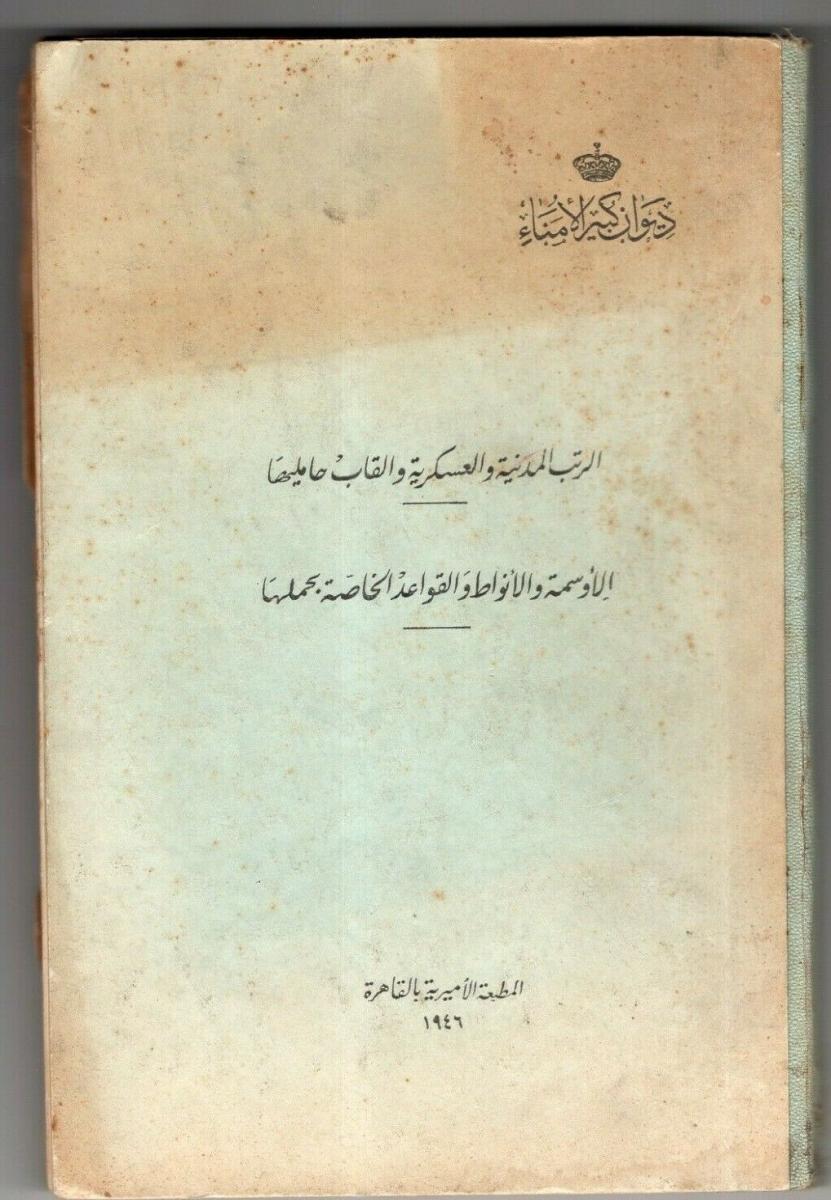
Cover of the 1946 volume illustrating Egyptian medals.
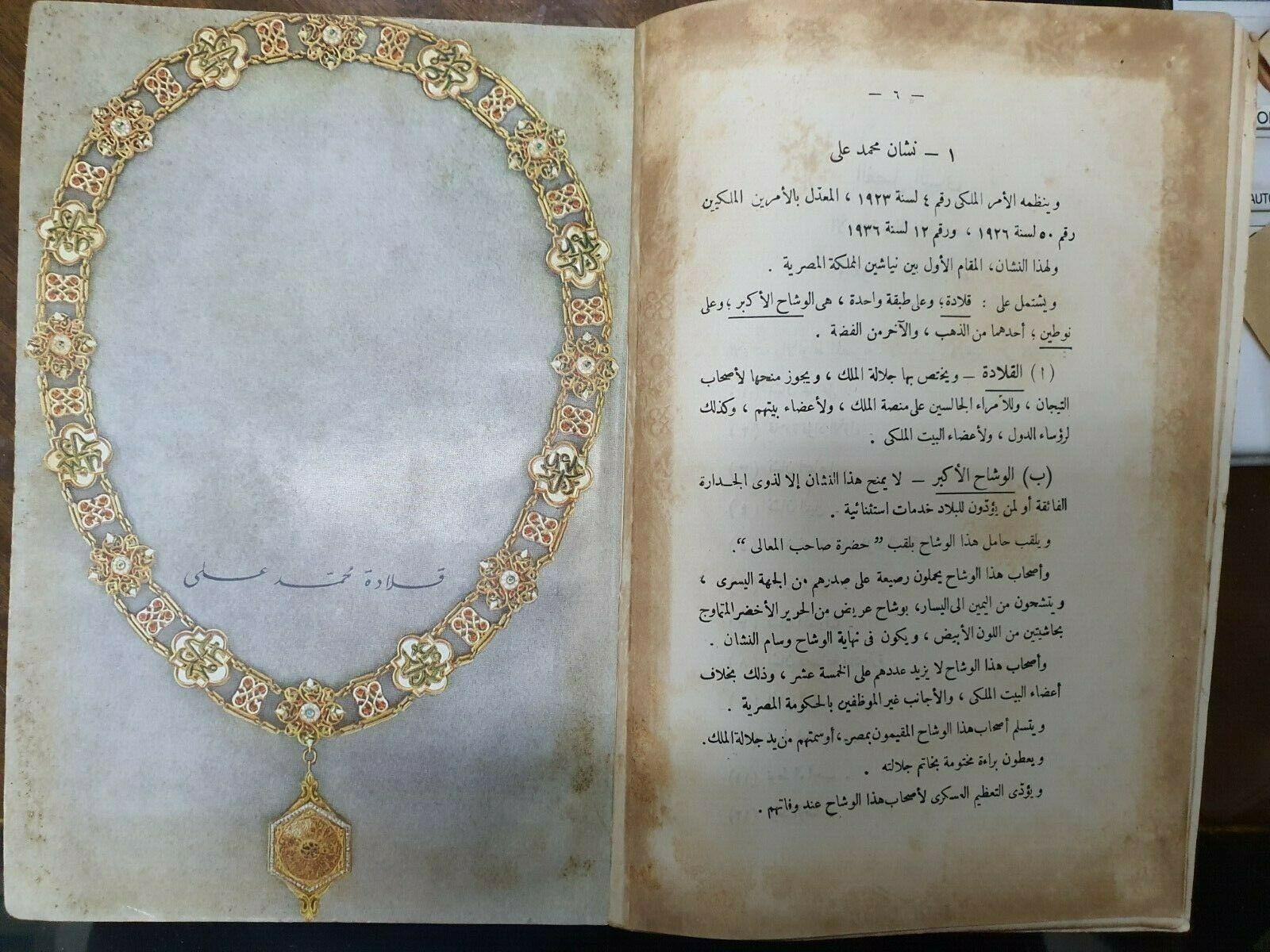
Illustration of the Collar of the Order of Muhammad Ali (Nishan al-Muhammad'Ali).
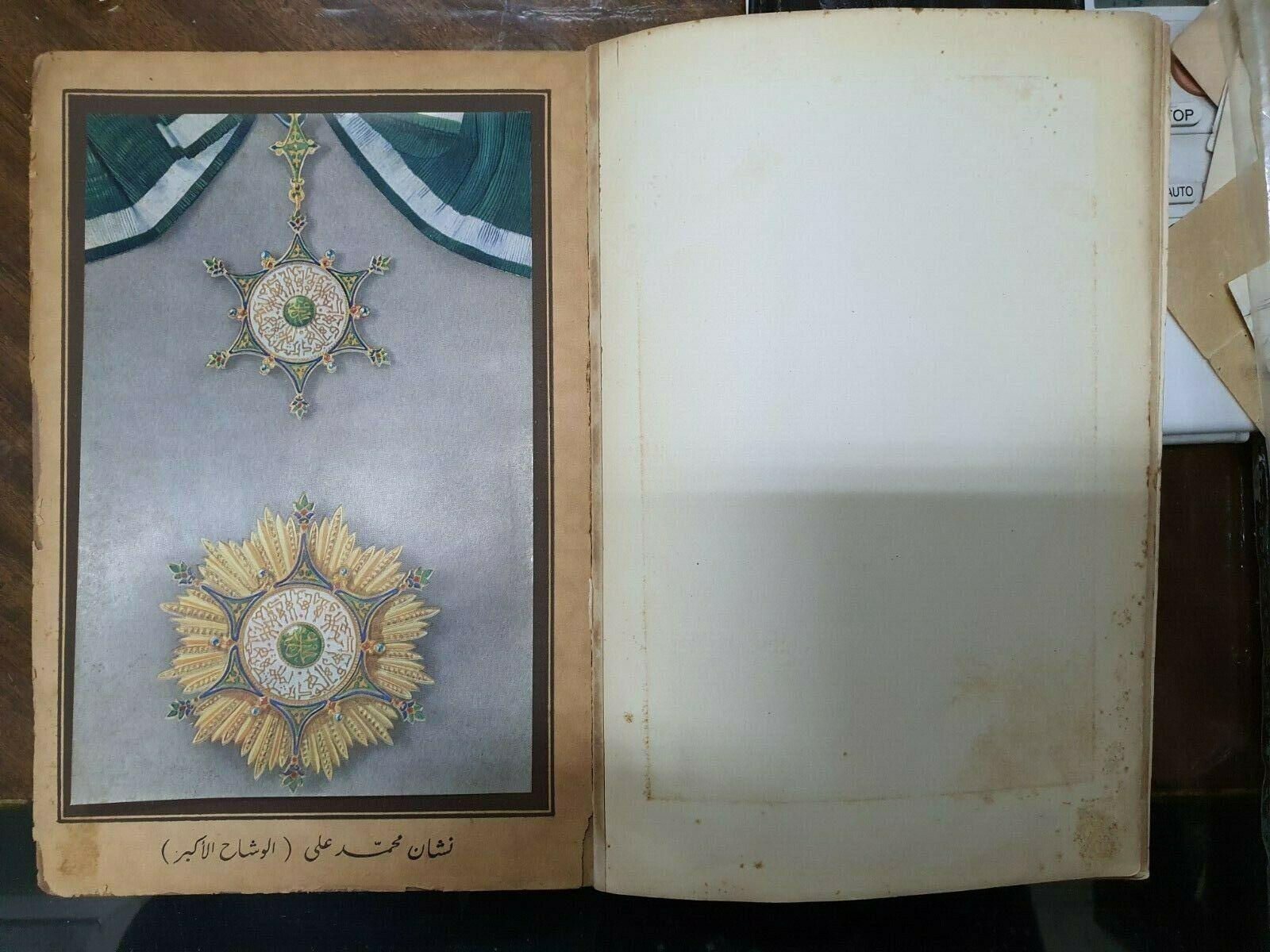
Illustration of the sash badge and breast star of the Grand Cordon Class of the Order of Muhammad Ali.
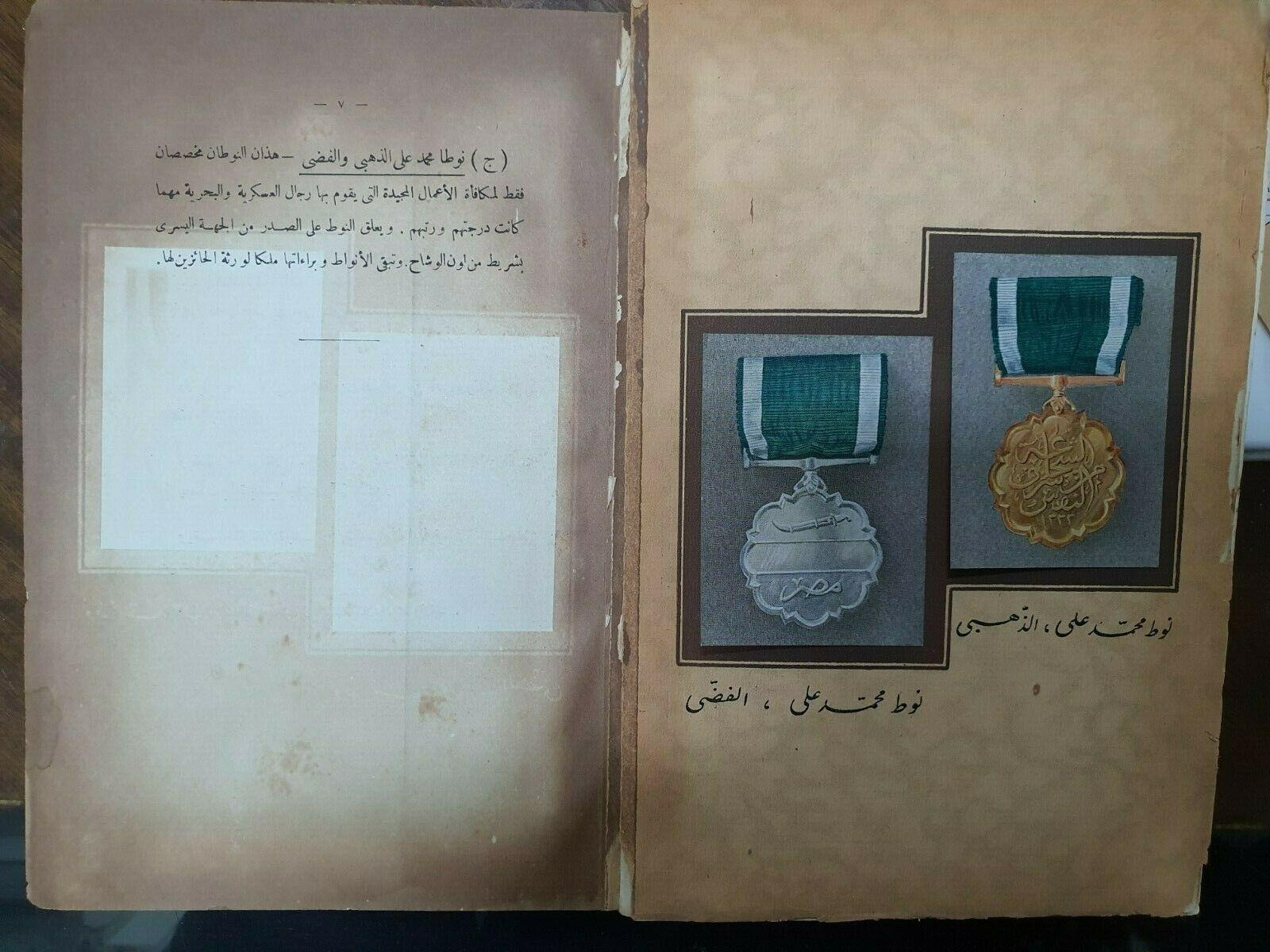
Illustrations of the Medals of the Order of Muhammad Ali (Nu'ut al-Muhammad'Ali), showing the medal in gold (R, showing the obverse) and in silver (L, showing the reverse) .
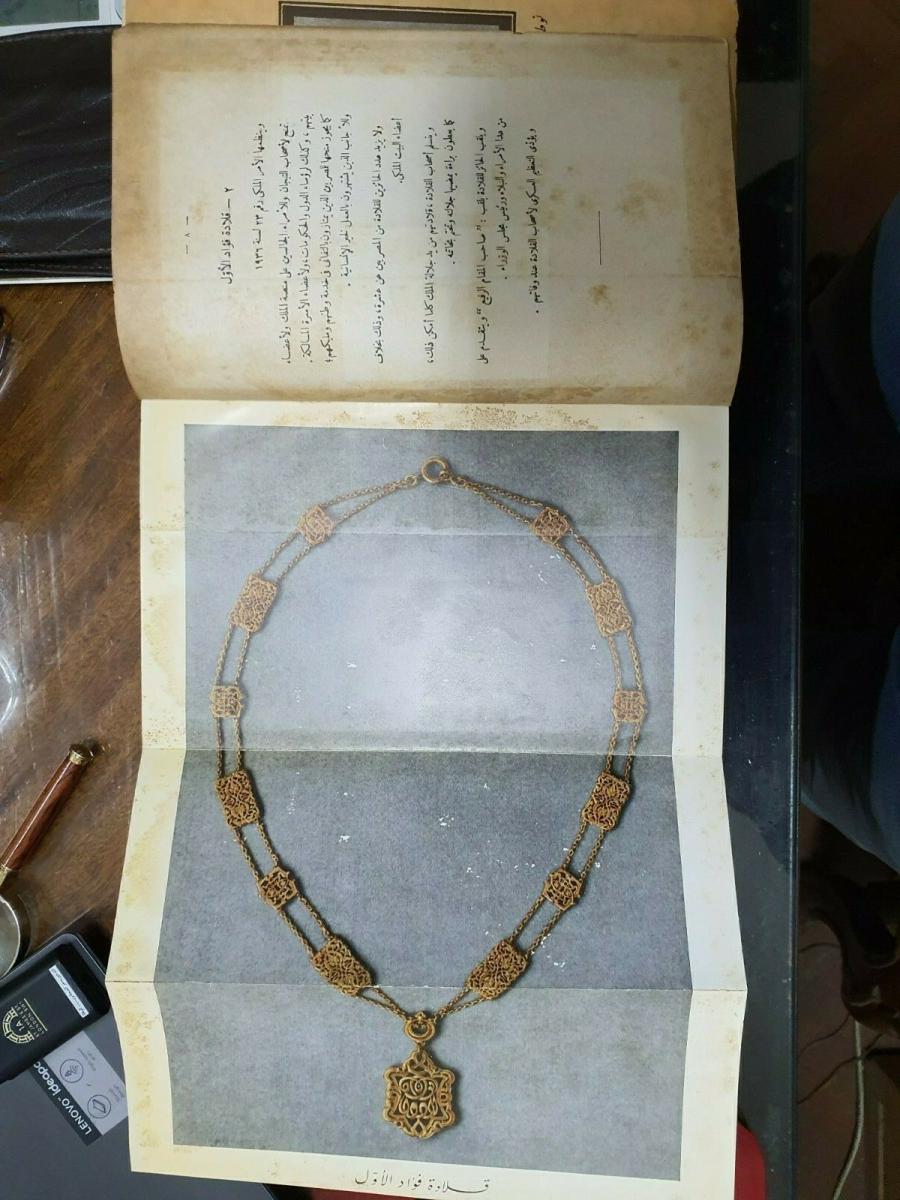
Foldout illustration of the Collar of Fuad I (Qiladat Fu'ad al-Awal) .
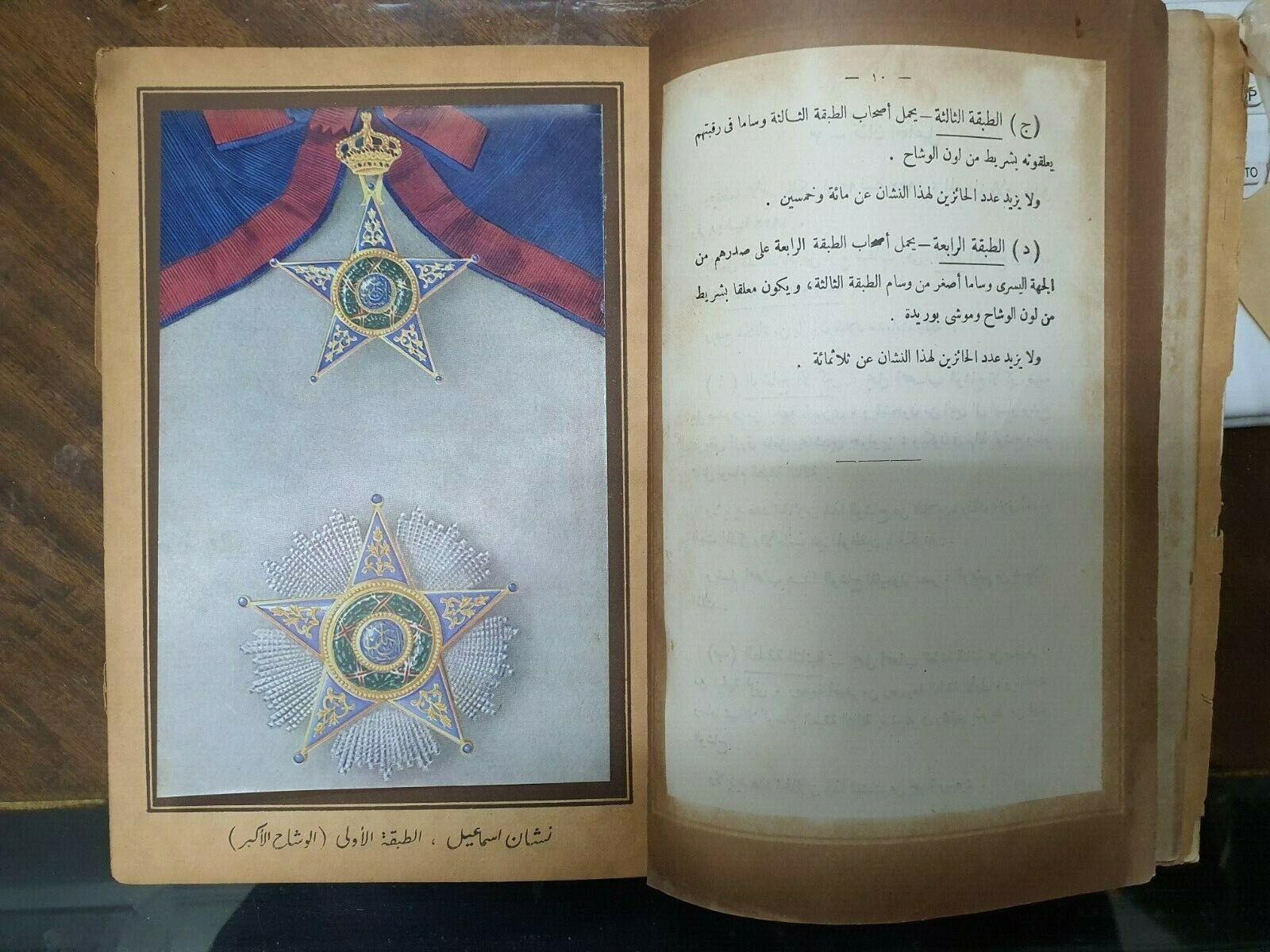
Illustration of the Grand Cordon Class of the Order of Ismail (Nishan al-Ismail) sash badge and breast star.
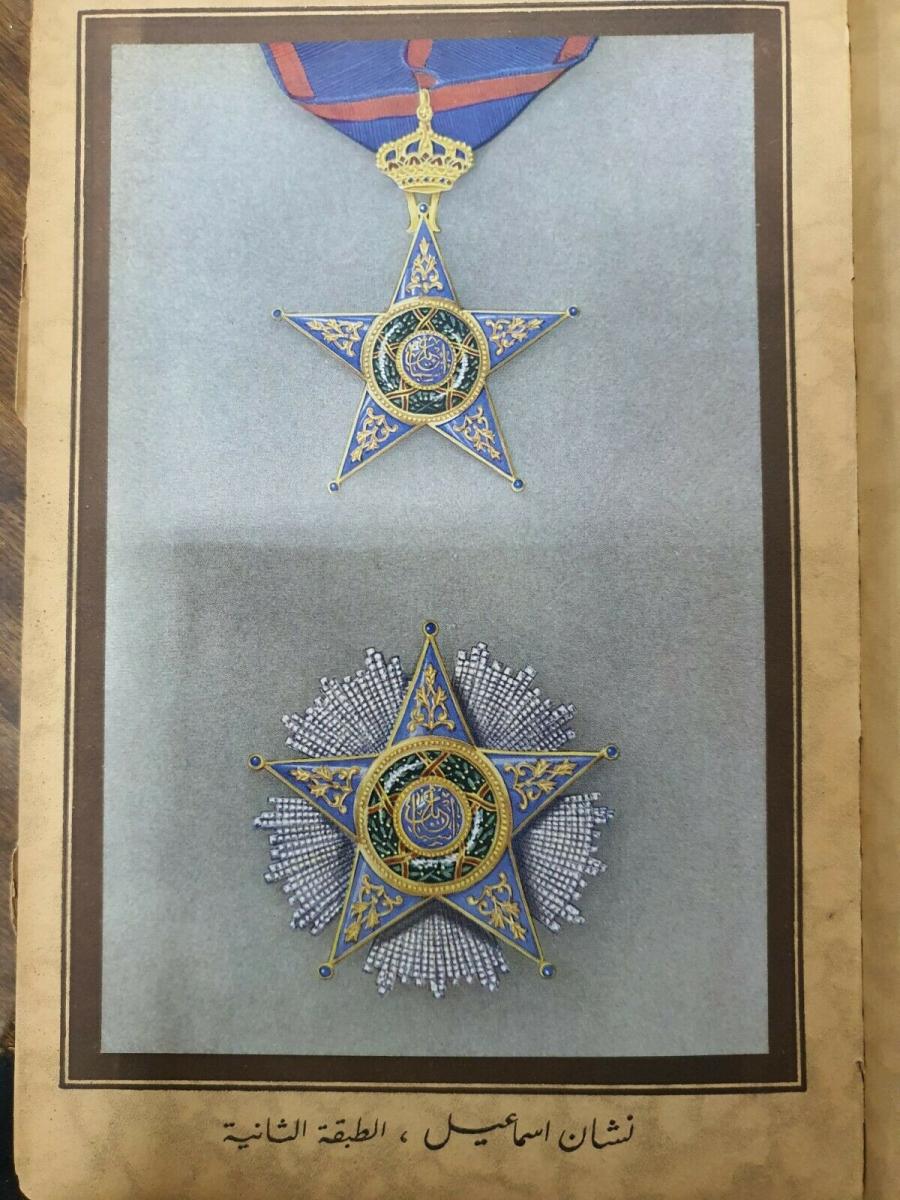
Illustration of the 2nd Class Grand Officer neck badge and breast star of the Order of Ismail.
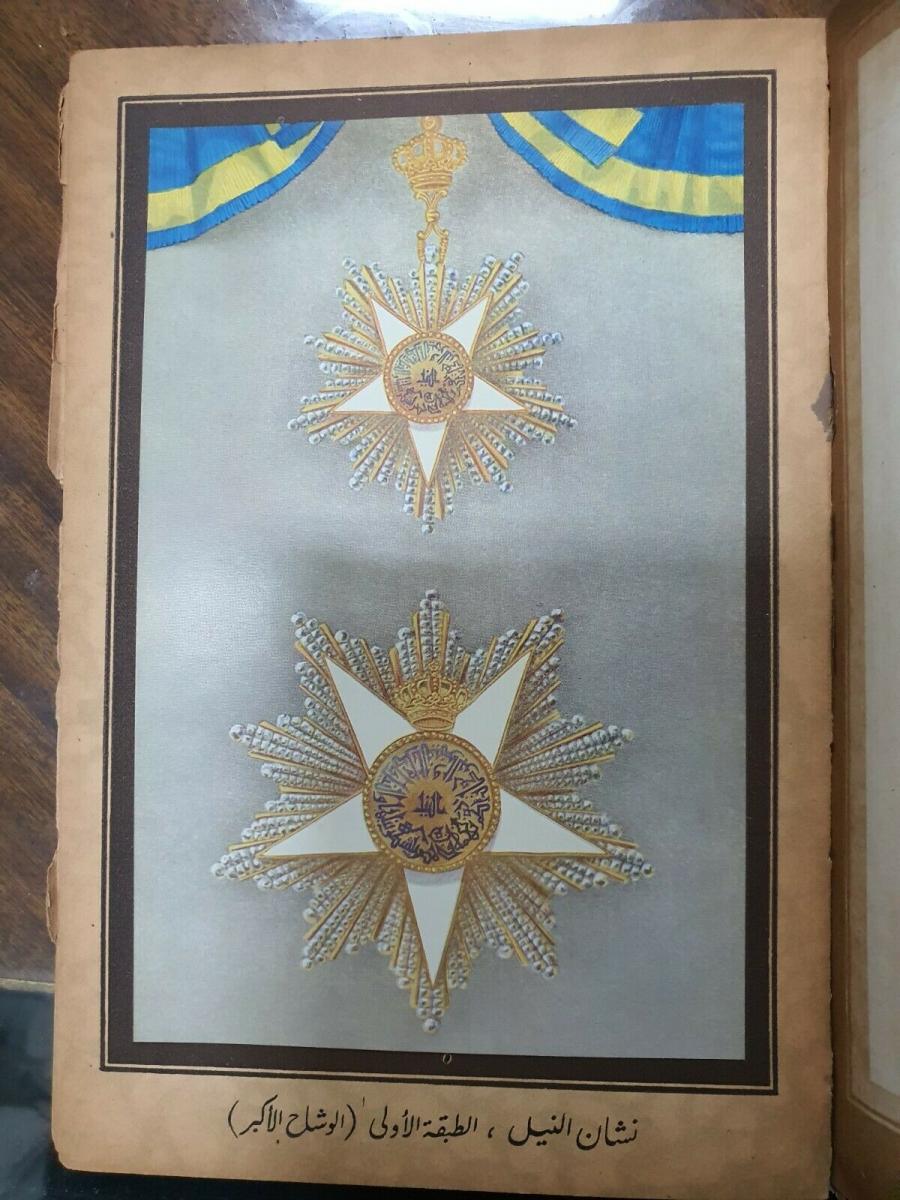
Illustration of the Grand Cordon Order of the Nile (Nishan al-Nil) sash badge and breast star.

Illustration of the 4th Class Officer breast badge of the Order of the Nile.
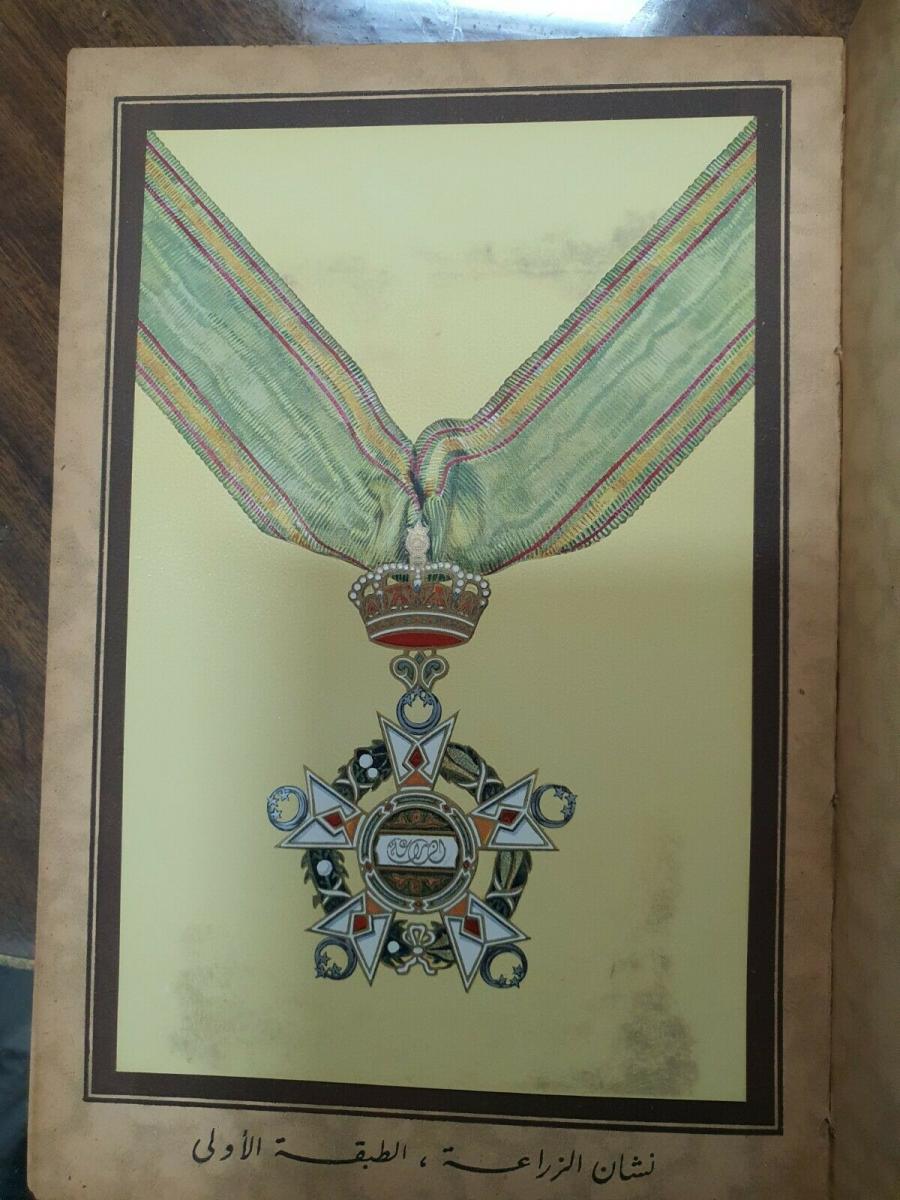
Illustration of the 1st Class Commander Order of Agriculture (Nishan al-Zira'ah) neck badge.
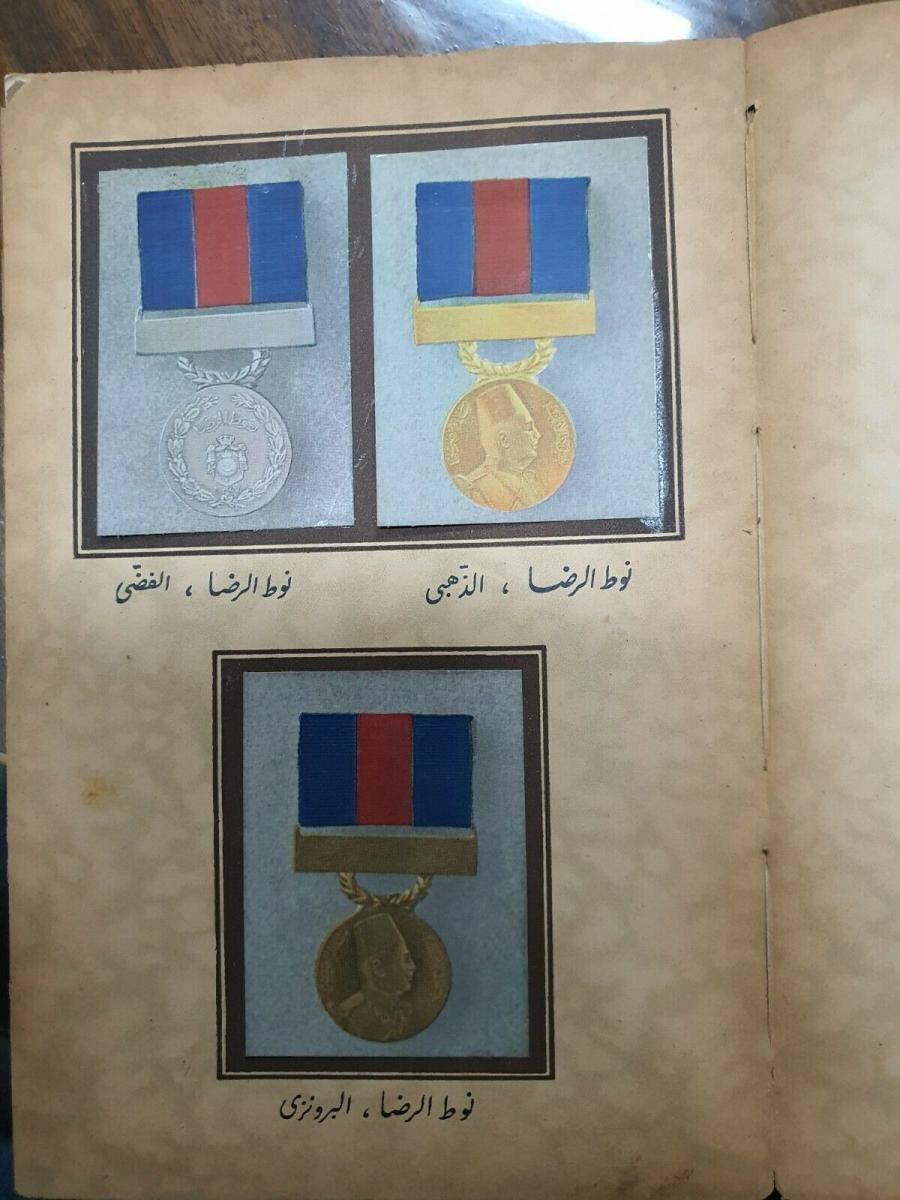
Illustrations of the 3 classes of the Medal of Benevolence: in gold for 35 years of service (upper R, showing the obverse); silver for 25 years of service (upper L, showing the reverse); & bronze for 15 year of service (lower, showing the obverse).

Illustrations the 3 classes of the Medal for Meritorious Acts in gold (upper R, showing the obverse), silver (upper L, showing the reverse), and bronze (lower, showing the obverse).
1




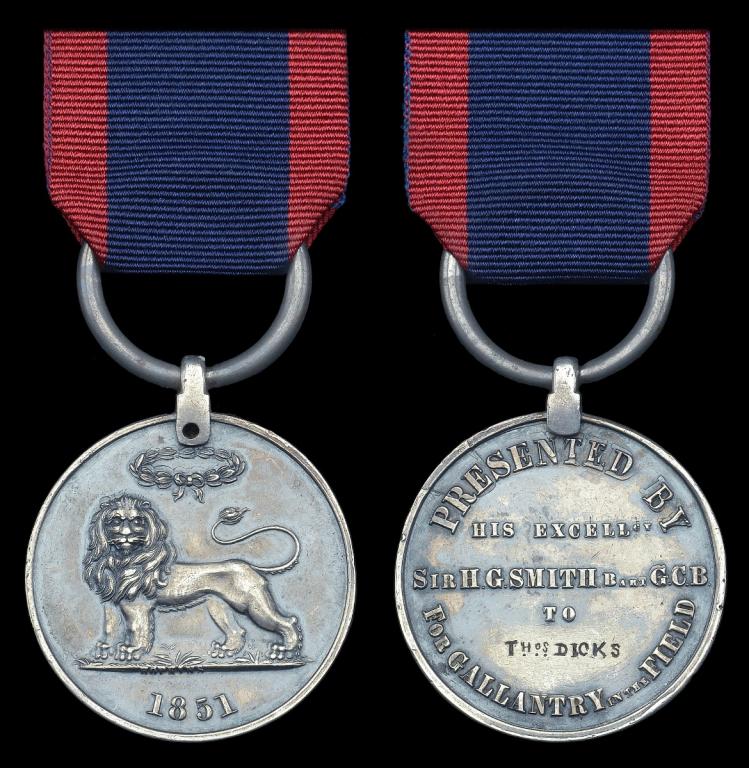



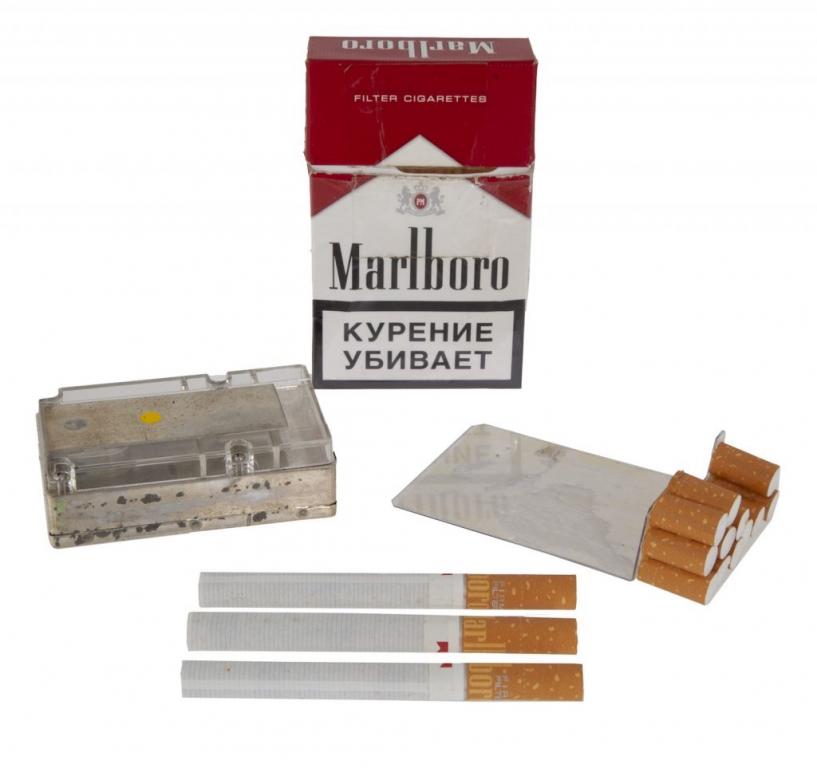
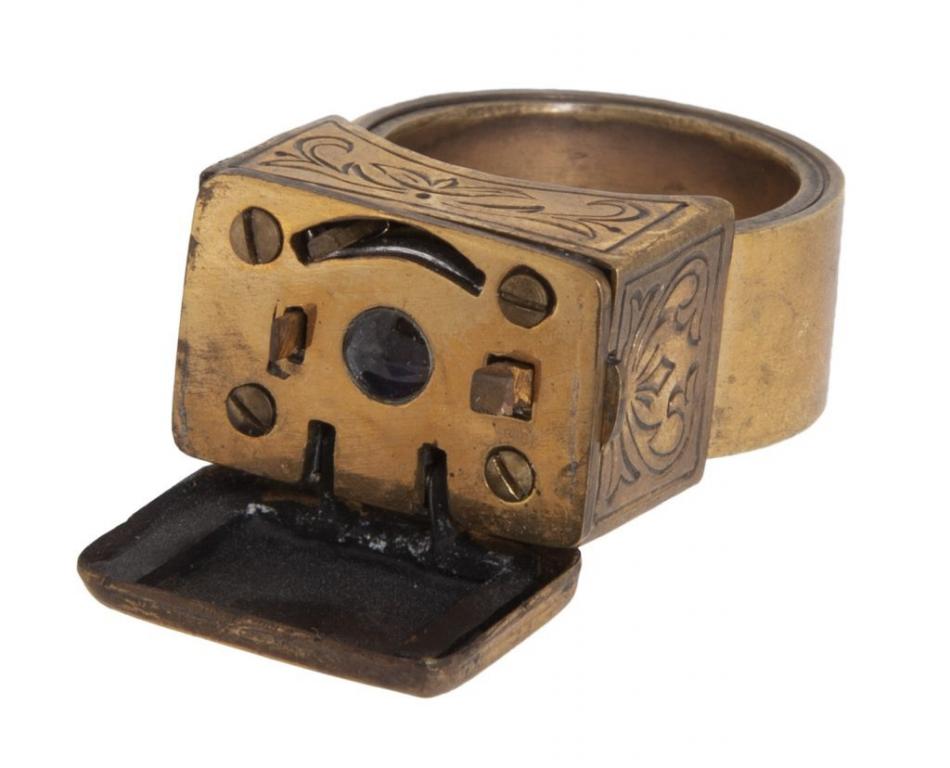
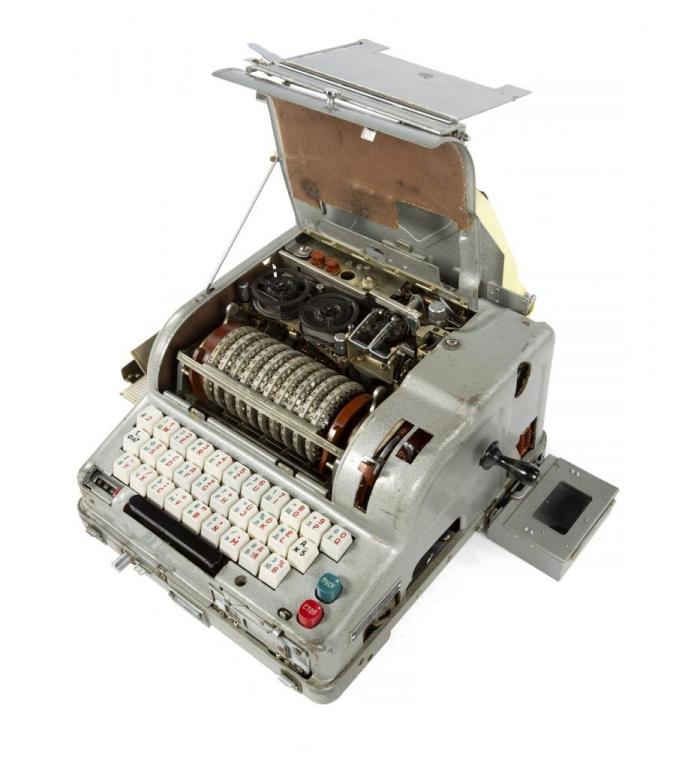
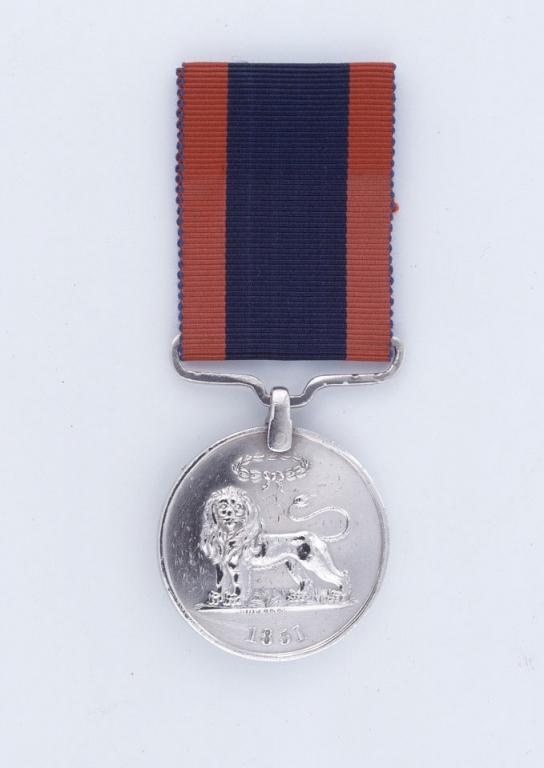
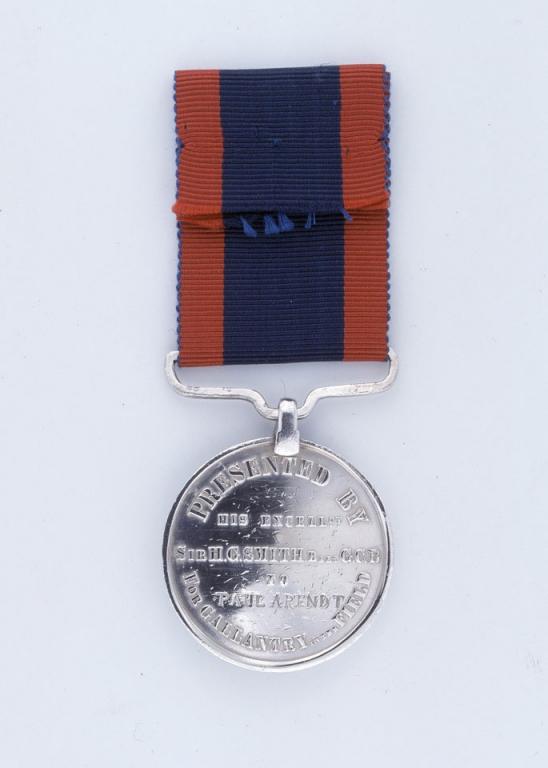
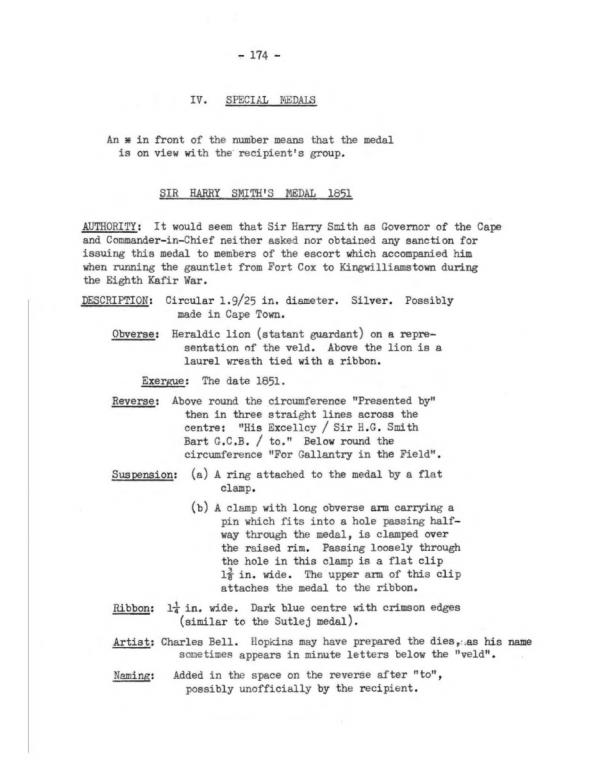
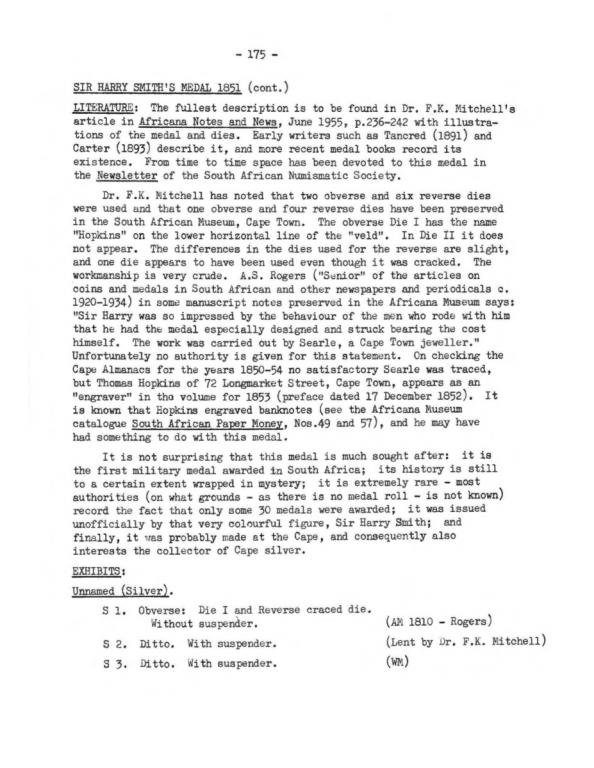

SIR HARRY SMITH 1851 MEDAL
in Great Britain: Empire: Colonial Including South Africa & India: Awards, Militaria & History
Posted · Edited by Rusty Greaves
Probably this list is well-known to you, but I came cross it on the same site that had the images the obverse & reverse of the named medal for Lt. E. Lister-Green, Online Medals, that are posted as the 4th & 5th images on this thread on 30 January (http://www.onlinemedals.co.uk/medal-encyclopaedia/pre-ww1-medals/sir-harry-smith’s-medal-gallantry). Maybe they are useful for other folks interested in this thread or shaking some trees about these medals. At the end is a note about the Henry Evans medal.
"Known Recipiants Of The Medal - Taken from various sources, the list below is a summary of those who are known (or reputed) to have recieved the medal.
Medals known or reputed to have been named are as follows:
Paul Arendt.
Piet Jan Cornelis.
R.S.M. William Richard Dakins.
Thomas Dicks.
Thomas Duncan.
Sapper R. Dunning R.E.
Henry Evans.
Girt Roots
David Faroe.
Hendrick Ferara.
Fundi.
J. Hassall.
John Keiburg.
Lt. Edward Lister-Green.
John Main.
H. McKain.
John McVarrie.
Francis Meades C.M.R.
J. Mouatt C.M.R.
Capt. Skead R.N.
Adrian Strauss.
Medals known or reputed to have been issued are as follows:
Sgt. Lodewyck Kleinhans.
Sgt. Appolis Lieuw.
Sgt. Maj. Johannes Tass."
The Seaby's Coin and Medal Bulletin of July, 1953 (published by B. A. Seaby Ltd., 65, GT. Portland Street, London, W. 1) has a brief note about the Sir Harry Smith Medal for Gallantry 1851 awarded to Henry Evans of the Cape Mounted Rifles. It is identified as an element of a recently disperse collection of M. T. Kennard sold by Sotheby's in 1924 "by order of the then owner, Cora Countess of Strafford" in the article "WAR MEDAL NOTES AND NEWS, Edited by a collector who has no connection to this firm" on pages 290-291. The last medal identified in the list of those medals sold is "...and Sir Harry Smith’s medal to Henry Evans of the Cape Mounted Rifles." on page 291. This comes from the same source of available online documents (that can can be downloaded) at the Newman Numismatic Portal (NNP) at Washington University at St. Louis as noted above at the end of my last post (https://nnp.wustl.edu/library/book/555601?page=16).